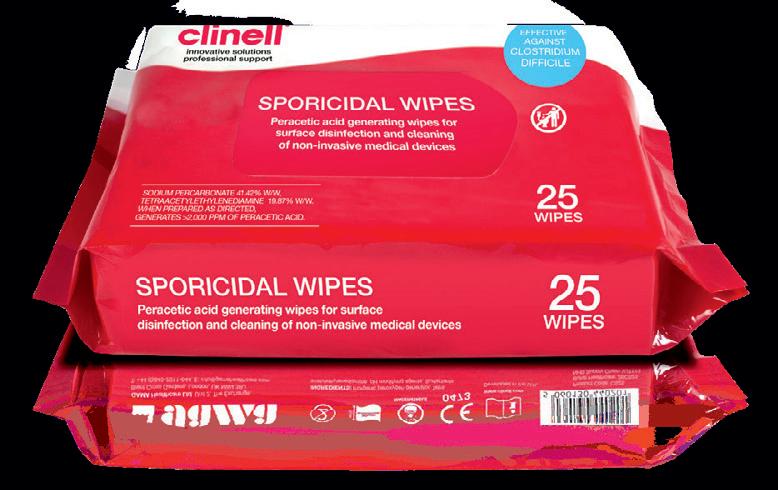WILL WORKFORCE MEASURES WORK?

SUSTAINABLE HEALTH CARE
TRANSFORMING LIVES OF CHILDREN WITH CEREBRAL PALSY

































WILL WORKFORCE MEASURES WORK?

SUSTAINABLE HEALTH CARE
TRANSFORMING LIVES OF CHILDREN WITH CEREBRAL PALSY
































SIMPLER – OnE STEP CLEAn And dISInfECT
A tri-active cleaner disinfectant reducing the need for multiple products and with a range to suit every application.
SMARTER – SuPERIOR EffICACy
Tested against 52+ pathogens killing up to 99.9999% of pathogens including bacteria, viruses such as COVID-19 and norovirus, mould, yeast, fungi, TB and spores such as c.diff
fAST kILL TIMES wITh nO wET COnTACT TIMES REquIREd
S-7XTRA begins to work from 30 seconds and keeps on working making the cleaning process much faster and making better use of your time.
SAfER – MATERIAL COMPATIbILITy

S-7XTRA has been tested and proven compatible with an extensive range of surfaces whilst leaving a streak free finish. S-7XTRA is being used for heritage conservation on delicate and priceless objects.
24 hOuR REACTIVE bARRIER TEChnOLOGy + 72 hOuR bIOSTATIC PROTECTIOn
S-7XTRA offers market leading 24-hour residual on touched surfaces, for a range of pathogens such as bacteria including VRE, CRE, MRSA, COVID-19 and yeasts and a longer lasting 72-hour biostatic protection on bacteria and COVID-19.

S-7XTRA unscented range is available in Concentrate, Ready to Use solutions and Wipes.
S-7XTRA FRESH scented is available in Concentrate and Ready to Use solutions formulated especially for use in aged care and for use in general areas and bathrooms.
invite you to request more information and receive your fREE sample.
Editor: Mansi Gandhi hh@wfmedia.com.au

Editorial Assistant: Charlotte Newton
Contributing Editor: Amy Sarcevic
Publishing Director/MD: Geoff Hird
Art Director/Production Manager: Julie Wright
Art/Production: Linda Klobusiak, Marija Tutkovska
Circulation: Dianna Alberry, circulation@wfmedia.com.au
Copy Control: Mitchie Mullins copy@wfmedia.com.au
Advertising Manager: Kerrie Robinson +61 400 886 311 krobinson@wfmedia.com.au
Advertising Sales: Nikki Edwards +61 431 107 407 nedwards@wfmedia.com.au
PUBLISHED BY Westwick-Farrow Media
A.B.N. 22 152 305 336
As we put the Summer issue to bed, the federal government has released the Strengthening Medicare Taskforce report that outlines recommendations to overhaul primary care.
The report made expected recommendations, and while some (read: many) hoped for more, overall, the industry welcomed the move to reform and improve access to primary care. The devil, however, will be in the detail.
www.wfmedia.com.au
Head Office
Unit 7, 6-8 Byfield Street, North Ryde Locked Bag 2226 North Ryde BC NSW 1670 AUSTRALIA ph: +61 2 9168 2500
If you have any queries regarding our privacy policy please email privacy@wfmedia.com.au
Subscriptions for unregistered readersprice on application
The Taskforce recognised the role of multidisciplinary care, where GPs, nurses, midwives and allied health professionals work together to manage complex and chronic diseases and provide patientcentred care.
In her article, Kristin Michaels, Chief Executive, SHPA, reflects on the role of specialty pharmacists in collaborative teams in delivering the promises of the National Medicines Policy and improving patient outcomes.

On a different note, the informationpacked 12th Annual Australian Healthcare Week (AHW) is fast approaching. To be held at the International Convention Centre Sydney from 15–16 March 2023, the event will feature over 140 speakers from across the health ecosystem. Dr Bethan Richards, Chief Medical Wellness Officer, Director WellMD Centre and MDOK Program at Sydney Local Health District (SLHD); Head, Department
of Rheumatology, Royal Prince Alfred Hospital; and Deputy Director, Institute for Musculoskeletal Health, SLHD, is one of the many speakers who will be presenting at AHW.
This issue’s lead article details how Richards — Australia’s first ever Chief Medical Wellness Officer at the SLHD — and her team are driving a systemic and cultural change to improve the wellbeing of 15,000+ staff. To learn more about Richards and her work, read the article on page 16 and make sure you attend her presentation on 15 March as a part of the conference.
We also feature renowned reconstructive plastic surgeon Dr Joe Dusseldorp, who, along with his team, is developing microimplants to help people living with muscle spasticity, like cerebral palsy.
There is also a range of articles on other issues and topics including neurofeedback and trauma treatment; diet, nutrition and preventative health; environmentally sustainable healthcare; workforce measures; patient safety and cybersecurity; nursing and more.
Until next time!
Mansi Gandhi
Editor, H+H
hh@wfmedia.com.au
through the information we provide. Further, all performance criteria was provided by the representative company concerned and any dispute should be referred to them. Information indicating that products are made in Australia or New Zealand is supplied by the source company. Westwick-Farrow Pty Ltd does not quantify the amount of local content or the accuracy of the statement made by the source.

The right home care software and the right technology partner can make a big difference to providers. Australian aged care and disability providers can simplify their care management by empowering their staff and giving ageing Australians the support they need to live the life they choose.
The complex framework and regulatory requirements of managing Home Care Package (HCP) service delivery requires an integrated, purpose-built solution to equip providers with the tools they need to navigate the complexities.
According to Lumary — a leading healthcare software solution and technology service partner for Australia's aged care and disability sectors — organisations need a single cloudbased tool to efficiently maintain compliance and facilitate greater choice and control for their clients.

Managing home care service delivery can seem complicated and overwhelming at times for providers. The heavily regulated environment of the HCP program, meeting Aged Care Quality Standards and complying with legislative requirements is a significant consideration for providers.
As existing regulations are clarified or new ones are added, HCP providers need to change the way they manage regulatory changes to ensure they remain compliant. With the right software solution in place, providers can achieve what is known as connected compliance, enabling them to be more agile in responding to both existing and future regulations.
Connected compliance allows providers to optimise their compliance processes and centrally manage the entire client lifecycle on a single system. Using one software tool for the end-to-end process removes data silos, boosts productivity and improves overall compliance accuracy and consistency.

Whether it’s government fees or providers’ own pricing schedule, manually entering data is time-consuming for providers and often leads to errors. The best HCP software will manage and update government fees to streamline the billing process, lessen the burden of manual updates and ensure HCP organisations remain compliant.
Lumary understands how important this is. That is why experienced industry experts work in-house at the digital health company to ensure its software is automatically updated for providers to meet mandated requirements. These knowledgeable members of the Lumary team stay on top of industry changes and price updates, allowing organisations to optimise their compliance processes and accurately forecast and monitor package funding.
Regal Home Health, a Sydney-based home care provider, understands first-hand the challenges this industry faces without the appropriate software.
“Prior to implementing Lumary, the manual work involved in managing our Home Care Package program was huge and very
inefficient,” says Danielle Knowles, Executive Manager, Aged Care at Regal Home Health. “It was labour-intensive and non-productive for both our operations and finance team.”
“The Lumary team were great to work with. They understood our business and made custom changes to accommodate our market differences.”
Regal Home Health has experienced many remarkable benefits since adopting an industry-specific solution and operating from a single source of truth.
“Lumary has improved and changed our whole program — meeting our legislative compliance is far easier, the documentation we provide our clients is far more professional and consumer-centred, and the financial reporting available to us now has increased productivity immensely,” says Ms Knowles. Designed hand-in-hand with aged care and NDIS providers, Lumary’s end-to-end care management software is purpose-built for healthcare organisations. Lumary is trusted by over 160 Australian care delivery organisations to transform the way they manage home care. From initial implementation with an inhouse delivery team and a dedicated account manager to a customer success team and 24/7 help centre, Lumary is more than just a technology provider — they are a tech partner. Connect with Lumary to understand how your organisation can operationally transform using expert-led care management software designed to support providers to maintain compliance and deliver more person-centred care.


Chronic pain associated with gastrointestinal disorders such as irritable bowel syndrome could be treated by targeting the receptor responsible for sense of touch and temperature, new research reveals.
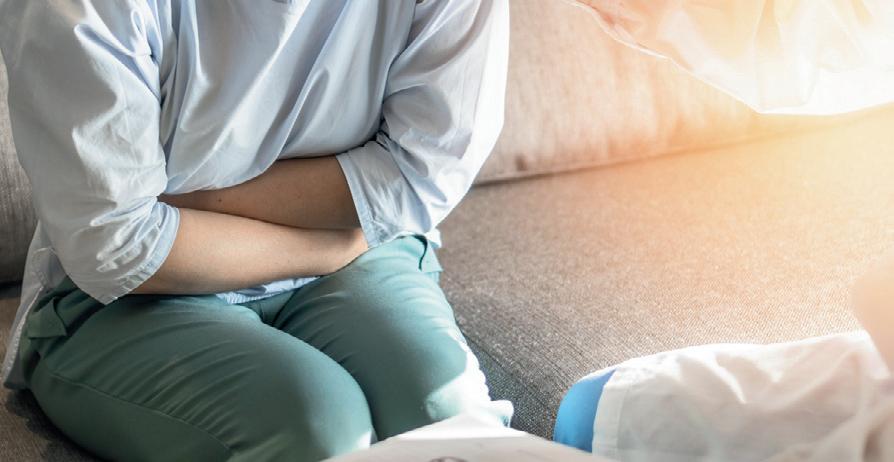
A new peer-reviewed research paper in Vaccines has examined the impact of the COVID-19 pandemic and subsequent lockdowns on the Australian economy. Published by Biointelect and the Centre of Policy Studies, Victoria University, with the support of Pfizer Australia, the research demonstrates the positive economic and societal effects of the population-wide COVID-19 vaccinations rollout.
The research demonstrated that without vaccinations the COVID-19 pandemic and subsequent lockdowns were estimated to have impacted the Gross Domestic Product (GDP) of Australia by an estimated $395 billion.
The timely rollout of COVID-19 vaccinations is estimated to have reduced the impact of the pandemic on the economy to an estimated $214 billion — resulting in a positive incremental benefit of $181 billion, according to the paper.

The COVID-19 vaccinations rollout was also estimated to have contributed to large positive effects for tourism exports ($28 billion), education exports ($26 billion), employment (142,000 jobs) and government finances ($259 billion).
While the vaccines were rigorously tested for efficacy and safety, the study outlines the unique considerations of the pandemic resulting in the rollout of COVID-19 vaccinations. This is in contrast to the typical formal health technology assessment of value which generally only considers the direct patient health and healthcare system-related costs. Reflecting on the extraordinary circumstances of the pandemic, publication co-author Jennifer Herz, Co-Founder & Managing Director of Biointelect, said, “If the COVID-19 vaccines had been assessed under normal circumstances using the typical formal value assessment criteria and processes, a report by Shawview showed that approval could have taken up to 1375 days and we would not have experienced the positive benefits of faster societal and economic recovery.” Hertz said this demonstrates how important the process put in place for the COVID-19 vaccines was and it’s a credit to the government and the Therapeutic Goods Administration.
“Our experience from the pandemic shows we should be thinking more broadly about the benefits of faster access to all available vaccines to our economy and society and consider the wider value new vaccines can provide,” she added.
Pfizer Australia and New Zealand Managing Director Anne Harris said the publication is further evidence that the health of our nation directly underpins the health of our economy.
“It also demonstrates the importance of preventive health and ongoing vaccination as a weapon in the arsenal against COVID-19 and future viral threats.”
A team led by Professor Hongzhen Hu at Washington University and Professor Nick Spencer at Flinders University has identified the presence of Piezo2 — the subject of the 2021 Nobel Prize in Physiology or Medicine and known to be responsible for sensing light touch on our skin — in the colon.
“In discovering that this receptor is also in our gut, there’s the potential that selectively targeting these channels could be used for long-term silencing of pain sensations from internal organs, without the need for frequent consumption of opiate pain medications,” said Spencer, a Matthew Flinders Professor in the College of Medicine and Public Health.
“Chronic pain from internal organs, such as the gut or bladder, is notoriously difficult to treat. Opiates, including morphine and their derivates, have been commonly used to treat a variety of types of pain but visceral pain doesn’t respond well to the treatment and the drugs are highly addictive with a multitude of side effects.”
The availability of selective pain medications for the gut has been hindered by a lack of understanding about how sensory nerves communicate pain sensations from the gut to the brain.
“It was previously known that many different ion channels are located on the ‘pain-sensing’ neurons that communicate from the gut to the brain, but our study, published in the journal Neuron, has now identified the major ion channel in the colon that responds to mechanical stimulation leading to the sensation of pain,” Spencer said.
“Furthermore, we have discovered that the major ion channel that responds to this mechanical pain is a member of the Piezo ion channel, specifically Piezo2.
“From this knowledge we can focus on targeting these channels to silence the pain sensations and hopefully produce a treatment for visceral pain, common in conditions such as irritable bowel syndrome, endometriosis or abdominal cancers, while avoiding the devastating side effects of opioids.”
The research was funded by grants from the US National Institutes of Health and the National Health and Medical Research Foundation.
COVID-19 vaccination saved the nation $181 billion:

Haines Medical Australia has designed and developed Greeny Compostable Underpad, an environmentally friendlier alternative to the traditional ‘bluey’ underpad — an essential, high-volume healthcare consumable.
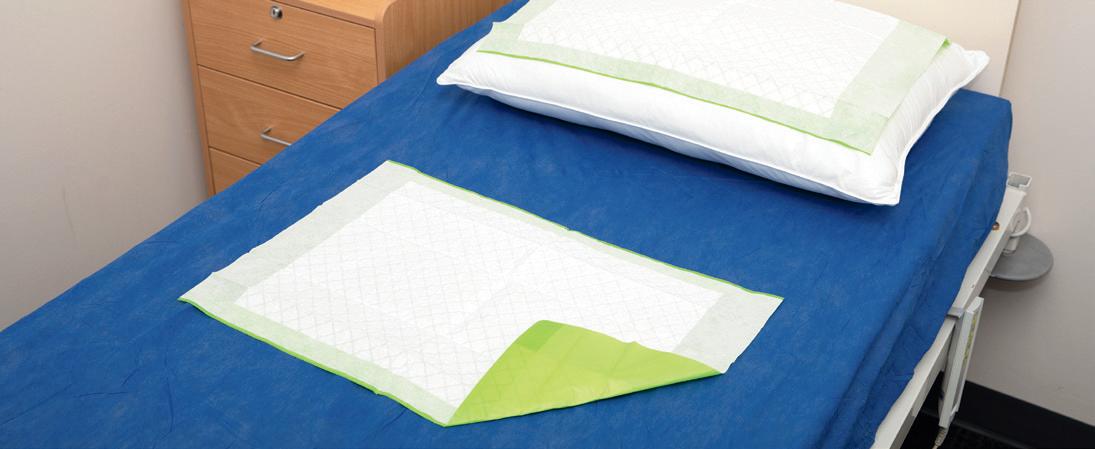
Each year, around 75 million bluey underpads are discarded, contributing up to 1950 tonnes of plastic waste to landfill. Haines product development specialists were determined to find a solution.
Greeny is a certified, compostable underpad which is packed in recyclable packaging.
“From the launch of our first compostable kidney dish, it was clear that healthcare workers, at all levels, care deeply about the industry’s environmental impact. For most, it’s not just about meeting environmental KPIs, it’s about caring enough to make a better choice, if and where one is available,” said Laura de Lacy, National Product Manager, Haines Medical Australia.
Early adopters of the product were drawn to its environmental friendliness but have noted potential increases to both hospital efficiencies and patient comfort.
“We appreciate this will challenge the industry as there are often barriers to better environmental options. We look forward to working with the healthcare sector on these barriers and forging ahead with the development of more sustainable products, to help reduce avoidable medical waste,” de Lacy said

La Trobe University researchers have developed a 30-minute test to identify sewage in recreational and environmental waterways, potentially reducing outbreaks of gastroenteritis and other illnesses in Australia and around the world.
The research, published in Environmental Science: Water Research & Technology, shows the loop-mediated isothermal amplification (LAMP) test — a rapid DNA amplification technique — can be implemented onsite using a portable diagnostic machine, making identification faster and more cost-effective than current methods.
Study lead and PhD candidate Meysam Khodaparast said that when recreational water is contaminated with human faecal matter, rapid and cost-efficient identification is critical in preventing waterborne pathogen outbreaks. “Current tests require cold chain transportation to get the sample from the site to the lab, taking several days — which prevents rapid action by water authorities and timely public health decisions.
“The LAMP test is as simple as [a] rapid antigen test for water — it’s fast and doesn’t require scientific expertise to achieve an accurate result,” Khodaparast said.
Ten infants have been cured of a rare genetic disease called Artemis-deficient severe combined immunodeficiency (ART-SCID), according to research by scientists in the US and Canada.

The study was published by M.J. Cowan et al. in The New England Journal of Medicine ART-SCID affects approximately one in 65,000 newborns and causes life-threatening problems with the immune system. It’s caused by faulty copies of a gene that codes for a DNA repair enzyme called Artemis, which is required for the production of functioning immune cells.
The infants were conditioned with an intravenous low-dose of the cancer drug Busulfan before the team injected them with gene-corrected cells. These were obtained through bone marrow harvest and transduced with a lentiviral vector.
No unexpected adverse events were reported in safety assessments up to 42 days after transfusion.
Busulfan toxicity manifested as transient cytopenias: Anemia, Thrombocytopenia and Neutropenia. Four patients developed Autoimmune Hemolytic Anemia between 4 and 11 months after the transfusion, but this was resolved with reconstitution of T-cell immunity. On follow-up, all the infants had genetically corrected and functional immune cells.
In Australia, contamination of environmental waterways with human faecal matter is a frequent occurrence. The sewer network is separated from the stormwater network; however, during storm events it is very common for stormwater to enter sewer pipes due to broken pipes or illegal connections. Sewerage systems can then reach capacity, releasing sewage back through private plumbing connections, like toilets, or spilling into rivers and creeks. This can lead to millions of litres of sewage ending up in the city’s waterways, killing aquatic wildlife and substantially increasing human health risks.
The World Health Organization (WHO) estimates that the consumption of faecalcontaminated water causes 485,000 diarrhoeal deaths globally each year.
Commercial partners Bio2Lab and Geneworks supported development of the LAMP test through an industry-based PhD scholarship at La Trobe University, supervised by Professor Travis Beddoe.
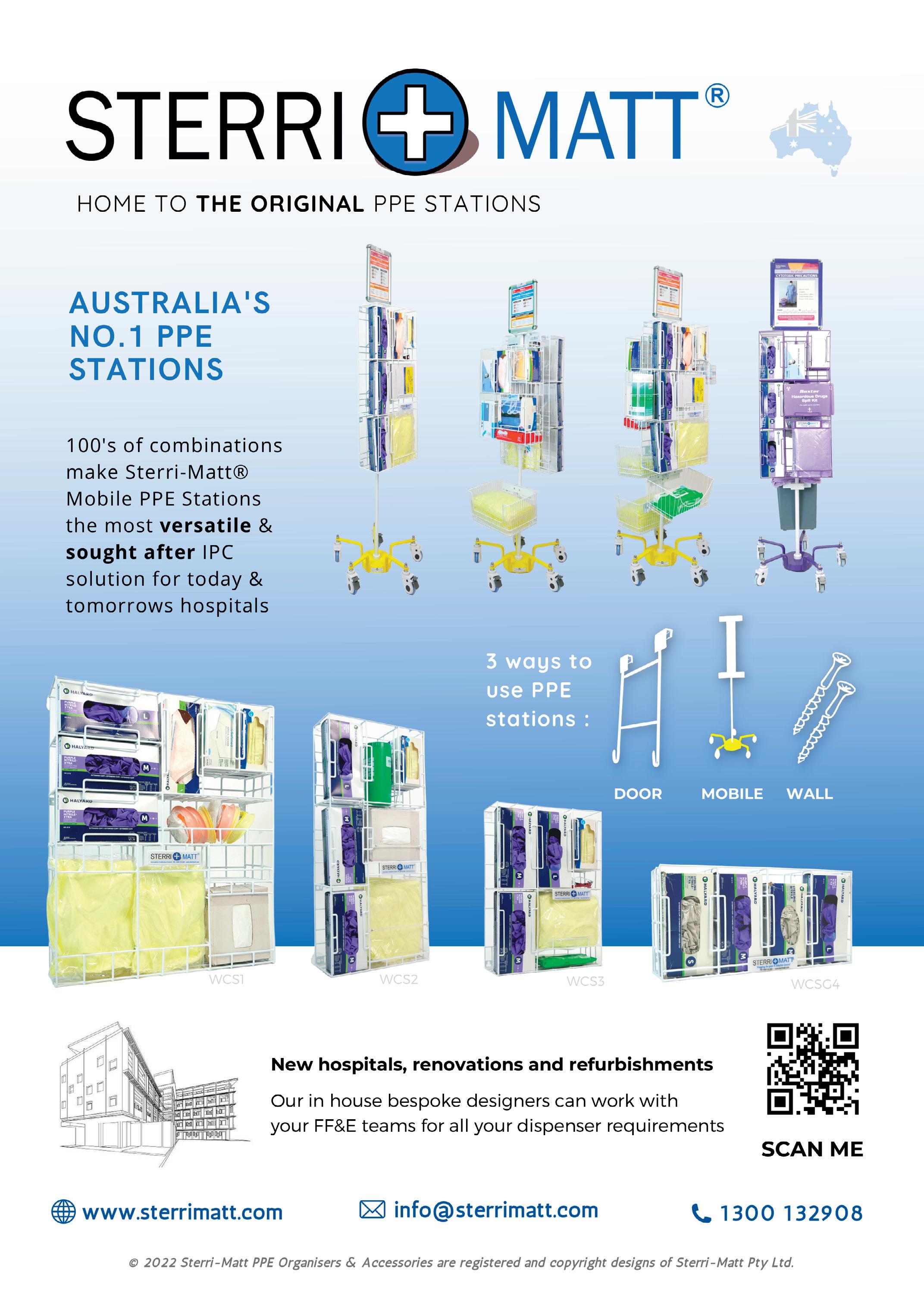
In Conversation provides a glimpse into the life on an ‘outlier’ — an exceptional person going above and beyond to innovate in their field and improve patient outcomes. This issue’s guest is Australia’s first-ever Chief Medical Wellness Officer (CMWO) at Sydney Local Health District (SLHD), Bethan Richards.
Richards wears many hats. She is the Head of the Department of Rheumatology at Royal Prince Alfred (RPA) Hospital, Sydney, Deputy Director of the Institute for Musculoskeletal Health and Director, WellMD Centre, SLHD.
In 2019, Richards was appointed as Australia’s first CMWO at SLHD to improve staff health and wellbeing, and reduce stress and burnout. Here she reflects on her journey so far and details how a staged, data-driven and collaborative, yet individualised, approach has improved outcomes.


Prior to becoming the Head of Department of Rheumatology at RPA, I was the network director of physician training. The job involved looking after the training and wellbeing of 60 basic physician trainees (BPTs).
After five years in the role, I noticed a significant increase in distress that seemed to be occurring in trainees each year. This meant I was spending more and more time
counselling them and was referring larger numbers of trainees for formal external assistance. This, despite the fact that we were running a training program that was arguably the best in the country, with each trainee receiving formal mentorship.
In 2017, in a period of four months, four basic physician trainees (out of 400) in NSW took their own lives. This was shocking and heartbreaking — it led to a lot of grief, anger and reflection. Locally, it amplified the conversation regarding trainee wellbeing and efforts to better understand the factors influencing this.
At my health district, we had an initiative called ‘The Pitch’, where anyone could pitch an idea to the Chief Executive for $50,000. The trainees and my training team came together and designed a pilot wellbeing program called BPTOK. In 2017, we pitched the program successfully to SLHD and ran the pilot over the next two years.
In 2018, NSW Health launched the JMO BeWell program to fund initiatives that addressed junior doctor wellbeing. We applied for funding to roll out BPTOK to all junior doctors
in a three-year phased approach across the SLHD (RPAH and Balmain hospitals in 2018/19, Concord in 2019/2020, Canterbury in 2020/21) as MDOK, and were successful in our grant for $210,000. We also realised the importance of addressing senior doctor wellbeing, so we opened up MDOK to all doctors working in the district.
In 2018 I went to Stanford University to learn what had been achieved in the US (there were no similar programs in Australia) and did the Chief Wellness Officers Course. Following my return, my Chief Executive created the first Chief Medical Wellness Officer position in the country. The role involved establishing the SLHD MDOK Wellbeing Center and creating a project team, establishing routine wellbeing measurement of medical officers at SLHD, and developing, piloting, evaluating and promoting medical officer wellbeing initiatives in the SLHD.
Tell us about the early days in the role.
Early days were tough. Emotions were high and wellbeing was not a topic that was
openly discussed in the medical world for fear of being seen as ‘weak’ or ‘not coping’. Convincing people to spend precious time on wellbeing skills and knowledge training was challenging, and there was a lack of understanding about what physician burnout was, why it mattered and what meaningful changes could be brought in.
At that time, there was no governance structure around wellbeing within the organisation. There was limited evidence to guide us and while many anecdotes and opinions were offered, there was no data to back them up. There was also pressure to help everyone all at once. Also, it became apparent early on that the the causes of stress were different between individuals and there was no one-size-fits-all solution for mental health treatment.
A lot of the early days were spent collecting data and educating executives, junior and senior medical staff and their colleagues about what the problem was, why was it happening, why they should care about it and what it was proposed that we do about it.
MDOK is SLHD’s multifaceted and evidencebased wellbeing program that is driving organisational, cultural and systemic change. The model developed and piloted in the RPA BPT cohort of 60 doctors has been successfully implemented at multiple facilities in the SLHD for around 3000 doctors. Components of MDOK have also been also adopted by various specialty societies and other craft groups.
Over the last four years, we have managed the delicate balance between running a resourced, sustainable and tailored program with the pressure of needing to address the wellbeing of greater numbers of doctors at all levels of their careers as well as the need to help address all staff wellbeing.
Over time, we have built MDOK around five key pillars of wellbeing (physical; psychological; social connection; leadership and performance; and culture and safety)
as well as ensuring cultural and systemlevel interventions and use of a data-driven approach.
Each pillar has a series of tactics to address wellbeing, and to date, more than 200 initiatives have been piloted. In 2020/21 we had 56,302 measurable interactions with the MDOK program. This included 18,969 interactions with MDOK physical wellbeing initiatives, 27,633 interactions with psychological wellbeing initiatives, 3915 interactions with social wellbeing initiatives, 1159 interactions with leadership and performance initiatives, and 4626 interactions with culture and systems change initiatives.

COVID-19 created many challenges, including staff shortages, role shifts, isolation-related challenges and constant uncertainty. We pivoted to the virtual world, which brought benefits such as increased engagement and flexibility, but at the expense of true human connection.
We had 3588 Zoom session attendances at the MDOK COVID-19 Education Series and 2010 hits for the MDOK initiatives hosted on our private YouTube site. With several initiatives targeting all staff and being difficult to measure the individual interaction with (eg, sparkling/ still water fountains, #TheatreToastie, protected lunch break, R.E.S.E.T, on call room upgrade), it is likely that the true engagement of SLHD staff with MDOK initiatives is much higher than this. Do staff do things differently because of
Our data shows:
1. Rates of doctors that have a GP have increased from 55% to 75%.
2. Rates of doctors who have reached out for help to EAP or MDOK increased by 150%.
3. Rates of sick leave in junior doctors increased (meaning they are not coming to work sick as was the historical culture). COVID has really helped this.
4. Rates of doctors who have lunch has increased.
5. Rates of doctors who drink water during the day has significantly increased.
6. Lower rates of distress and burnout and higher rates of self-compassion and
resilience in doctors who engage with MDOK activities.
7. More frequently medical staff are sharing difficult experiences publicly, have check-ins and huddles built into workday practices.
8. All orientation processes now include MDOK sessions, all junior doctors have specific MDOK sessions built into their training programs, MDOK is an agenda item on quality and safety committees, departmental committees, medical boards.
9. Wellbeing measures are now a routine part of practice and measured yearly (ethics approved database created).
Absolutely critical. We have a pillar dedicated to this and executive and senior clinician buy-in is a must. Yet ironically, doctors receive no leadership training, and those in leadership positions have limited support. Our leaders are the guardians of the culture; to change the culture we must have our leaders engaged and role modelling the behaviours we are aspiring to. In health care work is delivered in teams and so leaders have a great sphere of influence on the wellbeing of medical and non-medical colleagues around them. Wellbeing champions are a critical part to achieving a shift in culture on the issue of wellbeing in large organisations and can occur at any level.
Some of the key points included: staff wellbeing requires a data-driven approach; burnout is a quality and safety issue; there is no one solution to wellbeing/burnout so we need a menu of options; each department or hospital has different issues so we cannot use a ‘blender approach’; staff wellbeing should be a number one priority with dedicated resources allocated to it; we cannot address ‘all staff wellbeing’ without understanding the issues that affect different groups; instead of focusing on the individual, we must address the system and cultural issues; senior executive engagement is critical to effect, meaningful and sustainable change; solutions come from the front line; social connections enhance wellbeing.
After reviewing our model, the Australian Medical Association has recommended the appointment of a chief wellness officer in hospitals as part of its position statement on the health and wellbeing of doctors and medical students 2020. In 2021, NSW Health recommended the appointment of a chief wellness officer in its Staff Wellbeing Strategic plan.

Five million Australian adults are estimated to have unresolved childhood trauma and abuse, with costs calculated at $24 billion. It is time for a radical review of causative factors.
Australian mental health services, in my opinion, are failing to provide the best treatment for the more severely mentally disordered. I maintain that the high, but largely ignored, prevalence of developmental trauma is the most likely undiagnosed cause.
Childhood maltreatment is the most important preventable risk factor for psychiatric disorder, according to Teicher, Gordon and Nemeroff (2021). As they say, “It is time for psychiatry to officially recognise these implications and to enact some essential changes.”
The interactions between an individual’s toxic environment and their genes and epigenetic factors causes evolutionary protective mechanisms to come into action, which help survival until puberty, to produce the next generation.
Brain structure and function is changed, so that the brains of traumatised people see the world differently. The effects of
trauma are transdiagnostic, impairing cognition and executive functioning, with a dose-related effect on mental and physical health disorders.
Teicher et al recommend the inclusion of a Developmental Trauma Disorder diagnosis for severely dysregulated individuals of all ages undergoing mental health treatment and I agree.
Trauma informed care is important but it doesn’t actually repair brain function.
Technology, including functional magnetic resonance imaging (fMRI) and quantitative electroencephalography (QEEG), now enables psychiatrists to examine the organ we treat and to devise effective brain settling methods that repair brain function and heal developmental trauma.
Comparing a person’s EEG with a normative database shows up the differences in brainwave activity that need to be treated.
Operant conditioning, using gentle
biofeedback methods like EEG neurofeedback, can reverse the effects of brain structural and functional changes, enabling talking and medication therapies to work better. People can get on with their lives with better performance and more confidence, especially those at the severe end of the spectrum.

Following a controlled study applying neurofeedback to traumatised children, Professor Bessel van der Kolk recommended neurofeedback facilities at every school.

But qEEG informed neurofeedback is not widely available in Australia, especially for treating trauma. However, pockets of success are proving encouraging.
The NSW Service for the Treatment and Rehabilitation of Torture and Trauma Survivors (STARTTS) treats 7500 traumatised refugees, of all ages, every year, and introduced qEEG and neurofeedback in 2003. The outcomes
have been very positive, especially for the most severely traumatised. For example, former child soldiers from Africa have been able to settle in class and complete their education. Once the fear-driven brain has calmed, psychotherapies, body work and social therapies work so much better! Crucially, the improvements in performance are virtually permanent — the brain does not want to reverse into chaos.
At the headspace Early Psychosis Youth Service in Western Sydney, we found that almost all the young people accepted into the program had experienced significant developmental trauma. A small case series (n=13) applying qEEG analysis and EEG neurofeedback has provided excellent results, enabling reduced anxiety, depression and substance use, plus increased social confidence, cognitive and executive functioning. Two young people had been diagnosed with treatment-resistant
schizophrenia, despite over four years of treatment with the world best practice first episode of psychosis treatment program (Orygen Youth Health EPPIC model). Both did really well in the case series, including stopping the use of illicit drugs.
Interestingly, all the qEEGs recorded were abnormal when compared with a normative database, revealing evidence of disorders not otherwise found and indicating changes in medication. Lower doses of medication were required with fewer side effects. QEEG followup showed objective evidence of improved brain function, compared to the normative database, and those changes are virtually permanent.
To offer neurofeedback to the general population, more clinicians need to learn these skills. Currently, there are only 56 internationally certified neurofeedback practitioners in Australia, with 19 certified as Supervisors. Twenty people have a qEEG Diploma in Australia. Only a minority work with trauma, which requires additional skills and personal support.
It’s time to enact change in the way we treat severe mental health disorders. We need the courage to seriously invest in a pathway to implement the knowledge we have, and train practitioners.
A program that retrains the brains of people with back pain, and helps them to get moving, is reported to have shown promising results with significant improvements in pain intensity at 18 weeks.

The program was part of a randomised controlled trial run by researchers at UNSW Sydney and Neuroscience Research Australia (NeuRA) and several other Australian and European universities.
The study, carried out at NeuRA, divided 276 participants into two groups: one undertook a 12-week course of sensorimotor retraining and the other received a 12-week course of sham treatments designed to control for placebo effects, which are common in low back pain trials.
Professor James McAuley — from UNSW’s School of Health Sciences — and NeuRA said sensorimotor retraining alters how people think about their body in pain, how they process sensory information from their
back and how they move their back during activities.
“What we observed in our trial was a clinically meaningful effect on pain intensity and a clinically meaningful effect on disability. People were happier, they reported their backs felt better and their quality of life was better. It also looks like these effects were sustained over the long term; twice as many people were completely recovered. Very few treatments for low back pain show long-term benefits, but participants in the trial reported improved quality of life one year later.”
The new treatment challenges traditional treatments for chronic back pain, such as drugs and treatments that focus on the back such as spinal manipulation, injections,
surgery and spinal cord stimulators, by viewing longstanding back pain as a modifiable problem of the nervous system rather than a disc, bone or muscle problem.
“If you compare the results to studies looking at opioid treatment versus placebo, the difference for that is less than one point out of 10 in pain intensity, it’s only short term and there is little improvement in disability. We see similar results for studies comparing manual therapy to sham or exercise to sham,” McAuley said.
“This is the first new treatment of its kind for back pain — which has been the number one cause of the Global Disability Burden for the last 30 years — that has been tested against placebo.”
McAuley said the treatment is based on research that showed the nervous system of people suffering from chronic back pain behaves in a different way to people who have a recent injury to the lower back.

“People with back pain are often told their back is vulnerable and needs protecting. This changes how we filter and interpret information from our back and how we move our back. Over time, the back becomes less fit, and the way the back and brain communicate is disrupted in ways that seem to reinforce the notion that the back is vulnerable and needs protecting. The treatment we devised aims to break this selfsustaining cycle,” he said.
Professor Lorimer Moseley AO, Bradley Distinguished Professor at the University of South Australia, said, “This treatment, which includes specially designed education modules and methods and sensorimotor retraining, aims to correct the dysfunction we now know is involved in most chronic back pain and that’s a disruption within the nervous system. The disruption results in two problems: a hypersensitive pain system and imprecise communication between the back and the brain.”
The treatment aims to achieve three goals. The first is to align patient understanding with the latest scientific understanding about what causes chronic back pain. The second is to normalise the way the back and the brain communicate with each other, and thirdly, to gradually retrain the body and the brain back to a normal protection setting and a resumption of usual activities.
Professor Ben Wand of Notre Dame University, the clinical director on the trial, emphasised that by using a program of sensorimotor training, patients can see that their brain and back are not communicating well, but can also experience an improvement in this communication. He said, “We think this gives them confidence to pursue an approach to recovery that trains both the body and the brain.”
Traditional therapies concentrate on fixing something in your back, injecting a disc, loosening up the joints or strengthening the muscles. What makes sensorimotor retraining different, according to McAuley, is that it looks at the whole system — what people think about their back, how the back and brain communicate, how the back is moved, as well as the fitness of the back.
The study authors say that more research is needed to replicate these results and to test the treatment in different settings and populations. They also want to test their approach in other chronic pain states that show similar disruption within the nervous system. They are optimistic about rolling out a training package to bring this new treatment to clinics and have enlisted partner organisations to start that process.
Once the new treatment is available via trained physiotherapists, exercise physiologists and other clinicians — McAuley hopes this will occur in the next six to nine months — people with chronic back pain should be able to access it at a similar cost to other therapies offered by those practitioners.
The study, funded by the Australian National Health and Medical Research Council (NHMRC), has been published in the Journal of the American Medical Association.
There is no denying that a healthy diet is vital to our overall health. Particularly after a hospital stay, proper nutrition is important during the healing process and can often be a key factor in preventing patients from returning to the hospital. Many patients experience nutrition deterioration throughout their hospital stay, even those whose nutritional status is adequate upon admission.
Malnutrition is a broad term to describe any imbalance in nutrition; from over-nutrition often seen in the developed world, to undernutrition seen in many developing countries, but also in hospitals and residential care facilities in developed nations. Malnutrition can develop because of deficiency in dietary intake, increased requirements associated with a disease state, from complications of an underlying illness such as poor absorption and excessive nutrient losses.
Malnutrition is associated with negative outcomes for patients, including higher infection and complication rates, increased muscle loss, impaired wound healing, longer length of hospital stays, and increased morbidity and mortality.

Malnutrition has often been referred to as the “skeleton in the hospital closet”, as it is often overlooked, undiagnosed and untreated. Most of the adverse effects on
patients and the healthcare system can be prevented or improved through nutrition care. However, research has revealed that it is just as important, as part of effective discharge planning, to provide support, including meal support to patients who need them. Supporting patients with easy and convenient access to ready-made meal solutions can significantly impact both short-term recovery results and the long-term health of patients.
Individuals’ nutritional needs don’t stop once they’re discharged from the hospital. In fact, adequate food intake is critical for promoting continued recovery and independence at home.
Patients with chronic conditions like obesity, diabetes, or heart disease may require a low sugar, fat, sodium, or cholesterol diet. Older adults who have been discharged from hospital do not always have guidance and follow-up on how to get proper nutrition. With the right nutrition, healing, rehabilitation, and recovery can happen faster, while the chance of readmission to hospital decreases.
Studies have shown that the convenience of ready-made, home-delivered meals can increase both diet quality and nutrient intake. This offers significant advantages to both the patient and the health service in terms of improved nutritional outcomes and decreased hospital readmissions.
The advantages of home-delivered meals for patients following a hospital stay are clear. At The Good Meal Company, we provide ready-made meal solutions designed to help hospitals, community care & NDIS providers, nursing and allied health teams provide their patients and clients with nutrition support at the start of their recovery.
Under the Good Meal Company brand, SPC Care manufactures and delivers a range of pre-prepared meals designed to support the nutritional needs of patients. Carefully developed, our meals are snap frozen to lock in nutrition and flavour. All meals are manufactured at our production facility in Sydney and delivered to patients’ homes throughout Australia.
How to order?
1. Jump online (www.goodmeal.com.au) and select your meals. Add 10+ meals to your cart for the week ahead and receive free delivery. No long-term contract is required.
2. Order and pay. Check out online or simply call our friendly team (1800 155 255) to place your order.
3. Meals delivered. The delicious meals will be delivered direct to the home on the date and time most suitable for you.
For information on the comprehensive range of ready-made meals available, please visit www.goodmeal.com.au or contact Sarah Donnelly (National Account Manager) on 0490 904 258 for more information.
» For more information
SPC Care spccare.com



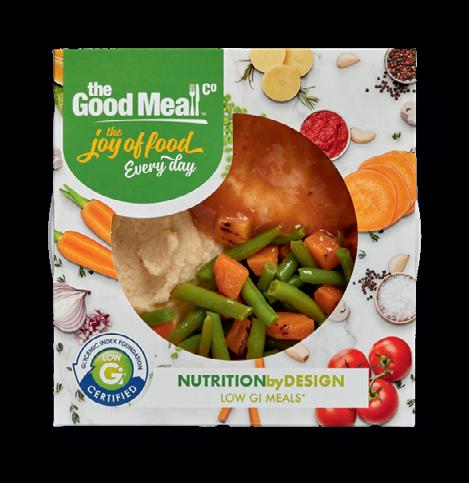

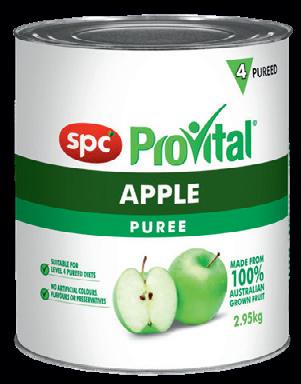






Intensive Care Units (ICUs) can be daunting places for patients as well as families, with up to 75% of ICU patients globally experiencing anxiety, depression, or other physical, cognitive, or psychological problems.

In a bid to improve care experiences and patient outcomes, The Prince Charles Hospital has unveiled a more patient-centric and recovery-focused ‘ICU of the Future’.
The collaborative project saw Metro North Health, the Critical Care Research Group (CCRG), medical research charity The Common Good, and Queensland Health — with financial support from Queensland Technology Future Fund and Queensland Motor Vehicle Accident Insurance Commission — join forces to combat design and environmental challenges that studies found may impact patient recovery.
“For generations, hospitals have been built around the ‘ABC’ model — Architect, Builder and CEO. Never did we consider the patients’
point of view. So, we set about changing this…” said CCRG Founder and Director Professor John Fraser.
A co-design approach
Borne out of a collaborative, multidisciplinary approach, and more than five years of research, the project — designed by Conrad Gargett and built by Matland Group — has been committed to being patient centric since inception.
Professor Fraser, along with Project Manager Oystein Tronstad and psychiatrist Associate Professor Dylan Flaws, investigated how factors such as noise pollution from constant alarms day and night, the lack of natural light and social isolation contributed to a patient’s ICU experience and the effect on their outcomes and long-term recovery.
The project team spoke extensively with ICU patients and their families as part of the redesign process, learning firsthand about their lived experience in ICU and using a co-design methodology. “Working with our
patients, their relatives, our nursing, allied health, medical, cleaning staff, taught us so much. We learnt things data could never have told us. We learnt about the constant noise, the lack of natural light, the lack of sleep — some patients reported having less than three hours of uninterrupted sleep a night,” Fraser said.
“During the ‘quiet nights’ in ICU, the peak noise levels are the equivalent of a lawn mower being used near the patients. During the day, the average noise level for the patient is the same as placing the ICU bed by a busy motorway.
“Patients commonly report being fearful, anxious, feeling isolated and disconnected from the real world. They perceived the ICU environment different to how staff perceived it — it’s a frightening experience commonly leaving them with permanent, invisible scars. So, we set out aiming to create a better
healing environment that is optimised both for patient healing and experience as well as for clinical efficiencies and provision of best patient care,” he said.
Designed by clinicians, for clinicians, the ICU of the Future challenges existing structures by redesigning the intensive care environment to be more patient-focused, including and prioritising their needs to optimise healing and recovery while ensuring clinical efficiencies, Fraser said.
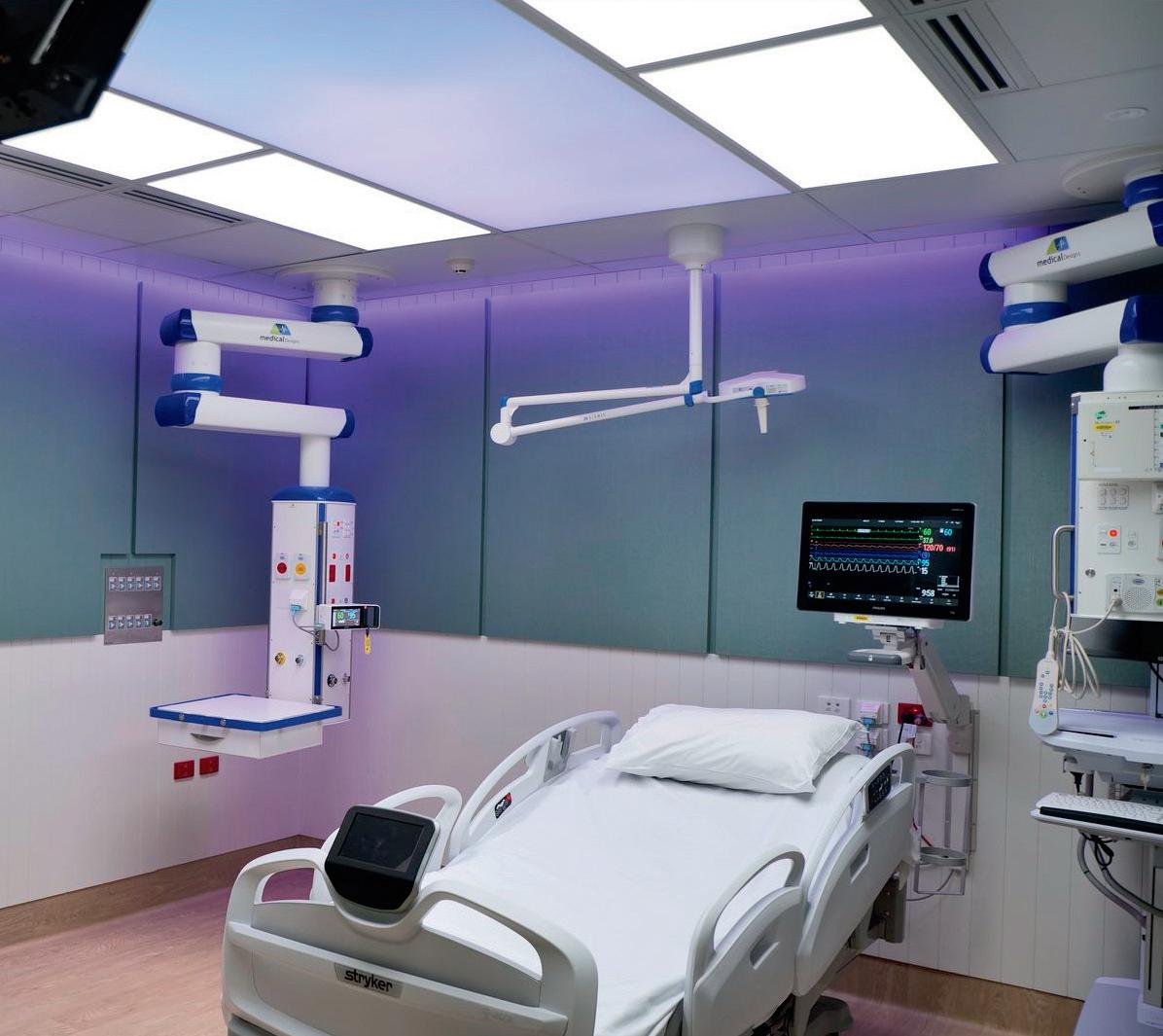
“If you experience delirium while in hospital, your mortality is three times higher in the subsequent six months. Your risk of PTSD can be as high as that seen among war veterans, and your ability to return to work and hold down a job or a long-term relationship can be dramatically diminished,” he said.
It’s not just patients who are affected by the existing design of ICUs. Many environmental factors, including lack of natural light and excessive noise levels, also contribute to the ICU being a challenging work environment for staff.
“Working hand in hand with clinicians, former patients and their families, and industry partners, the ‘ICU of the Future’ aims to reduce the incidence of ICU delirium and improve the experience and long-term outcomes of critically ill patients, optimising the quality of life patients can expect to enjoy after leaving the hospital,” Tronstad said.
As part of its investigations, CCRG built a working prototype to road-test design changes and adapt final innovations with stakeholder recommendations. Now they are pleased to have two ICU bed spaces completed, with the first patients being accepted from January 2023.
“For this 'world-first' project, we are introducing technologies that can reduce the amount of noise experienced by the patient, lighting that can mimic natural light and help maintain the body’s natural circadian rhythm, and improve how patients connect with their family members and the outside world. When the design changes are implemented into a working intensive care unit, we envisage that we will see significant improvements in patient outcomes,” Tronstad said.
The Common Good CEO Michael Hornby OAM said recent global events put ICUs across the world under immense strain, and with more people than ever undergoing the often-difficult experience of being treated in one, CCRG’s ‘ICU of the Future’ project is of paramount importance.
“Medical research funding is vital in allowing world-first breakthroughs like the ICU of the Future to happen,” Hornby said.
“During the day, the average noise level for the patient is the same as placing the ICU bed by a busy motorway.”Images supplied

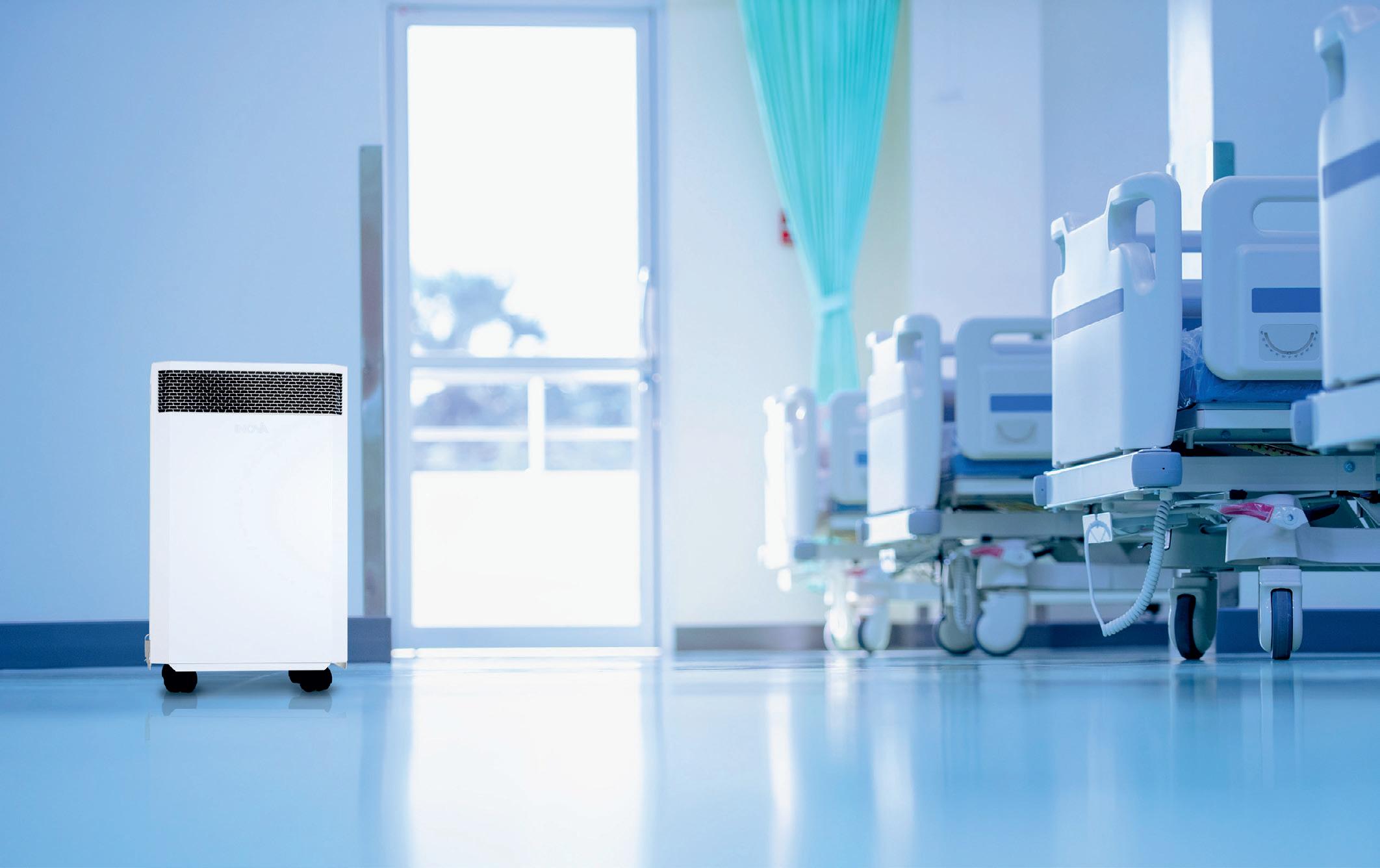



A new clinic at Queensland Children’s Hospital offers an alternate GP-led model of care, taking the pressure off the emergency department, while ensuring patients are being cared for appropriately and quickly.

Like most hospitals across the world, the Queensland Children’s Hospital has experienced a surge in the volume and nature of presentations to its Emergency Department (ED) since the COVID-19 pandemic.
Now, a new Minor Illness and Injury Clinic (MIIC), designed and delivered by the Australian architecture and design practice Conrad Gargett, will provide support to the hospital’s ED and also offer an alternative care model.
“It really challenged us to think about what different levels of care would look like as an adjunct to the Emergency Department,”
said Perrin Moss, Integrated Care Program Manager at Children’s Health Queensland. Around 40–50% of all presentations coming through EDs could be safely and effectively managed by a GP-led team outside the ED setting, according to literature at an international level, Moss said in a statement.
“Acknowledging patients are coming to us because a GP is not available — whether it be outside of business hours, or they are unable to get an appointment — led us to test a model where a GP would be accessible within close proximity to the Emergency Department.”
The hospital called on Conrad Gargett to explore a range of options and locations
within the existing building for the new clinic, with the final outcome achieving over double the size and capacity to what was originally conceptualised to include four consultation rooms, a dual treatment space, telehealth room, kitchenette, clean and dirty utility rooms and an expansive waiting area.
“We looked at different areas within the building, from the ground floor right up to level 5, but what we went back to was the former convenience store space which was prime real estate that was underutilised, offered a really good connection to the Emergency Department, great crossflow and connection to the outside and central atrium,” said Paul Emmett, Principal at Conrad Gargett.
“Architecturally we worked that area really hard — we pushed it to make sure that we took full advantage of the engagement with the central atrium and existing large form artwork and made use of spaces that were underutilised, even outside of the clinic space.
“It has also added more engagement with the Main Reception — which, from our perspective, we always envisioned would be an activated space.”
Art was a major priority in the project, with Conrad Gargett working closely with esteemed senior art curator Lynne Seear, Manager of the Arts In Health Program at Children’s Health Queensland, to integrate art in the design.
“The decision was made at the beginning of the project to have the best art we could find — not to compromise on the quality that happens so often in healthcare facilities because some people have the impression it’s a luxury add-on — or there are cheaper ways to do it,” Seear said.
“What you have on the walls or floors should match in excellence the quality of care that is being delivered.”
Queensland Children’s Hospital recognises the importance of quality art and design in improving the patient and visitor experience. “It’s not just about making an aesthetically pleasing environment; it’s about creating an environment that makes people feel safe and comfortable. There is a huge


degree of thoughtfulness required to put that environment together, which both subliminally and overtly communicates that we want them to have a good experience in the hospital,” Seear said.
“If people feel safe and comfortable, then their perception of the care that they receive is directly impacted for the better.
“Perception of care has a huge influence on how people will respond to clinicians, the kind of communications they have, whether they’re listening, whether they will trust the staff and be compliant with instructions and therefore whether the treatment will be successful and what the recovery will be.
The hospital has a commitment of having over 50% of art by Aboriginal and Torres Strait Islander artists. “Nine out of ten works are by First Nations artists. We can do that because First Nations’ art is fantastic — it’s really dynamic and diverse and it’s also an obvious a way to announce that a space is culturally inclusive; it doesn’t do the whole job, that’s up to people in their interactions and systems and processes, but it does some of the job,” Seear said.
“I like working with architects who from the beginning are thinking about what can we do to make the space habitable, to humanise it, to make people feel like we’ve really thought
about how they’re going to be impacted on a sensory level and how are they going to use the space,” she added.
Since its opening in June 2022, the MIIC is said to have had success with an effective flow of the patients in and out of the space, according to Perrin.
“Once patients are referred to the clinic, it's between an 8- to 12-minute wait for them to
be seen by a clinician in the Minor Illness and Injury Clinic, as opposed to what could be a number of hours waiting in ED, depending on how busy it is,” he added.
Conrad Gargett has a longstanding relationship with Queensland Children’s Hospital, having delivered the hospital with Lyons in 2014 and continued to be engaged for design services over the past eight years.


“If people feel safe and comfortable, then their perception of the care that they receive is directly impacted for the better.”
A well maintained, fit-for-purpose medical gas reticulation system is critical to a healthcare facility’s ability to deliver reliable and safe patient care. However, hazards in the system can be easily overlooked, potentially compromising reliable and safe operation of the facility.
Common medical gas system hazards within a healthcare facility can include:
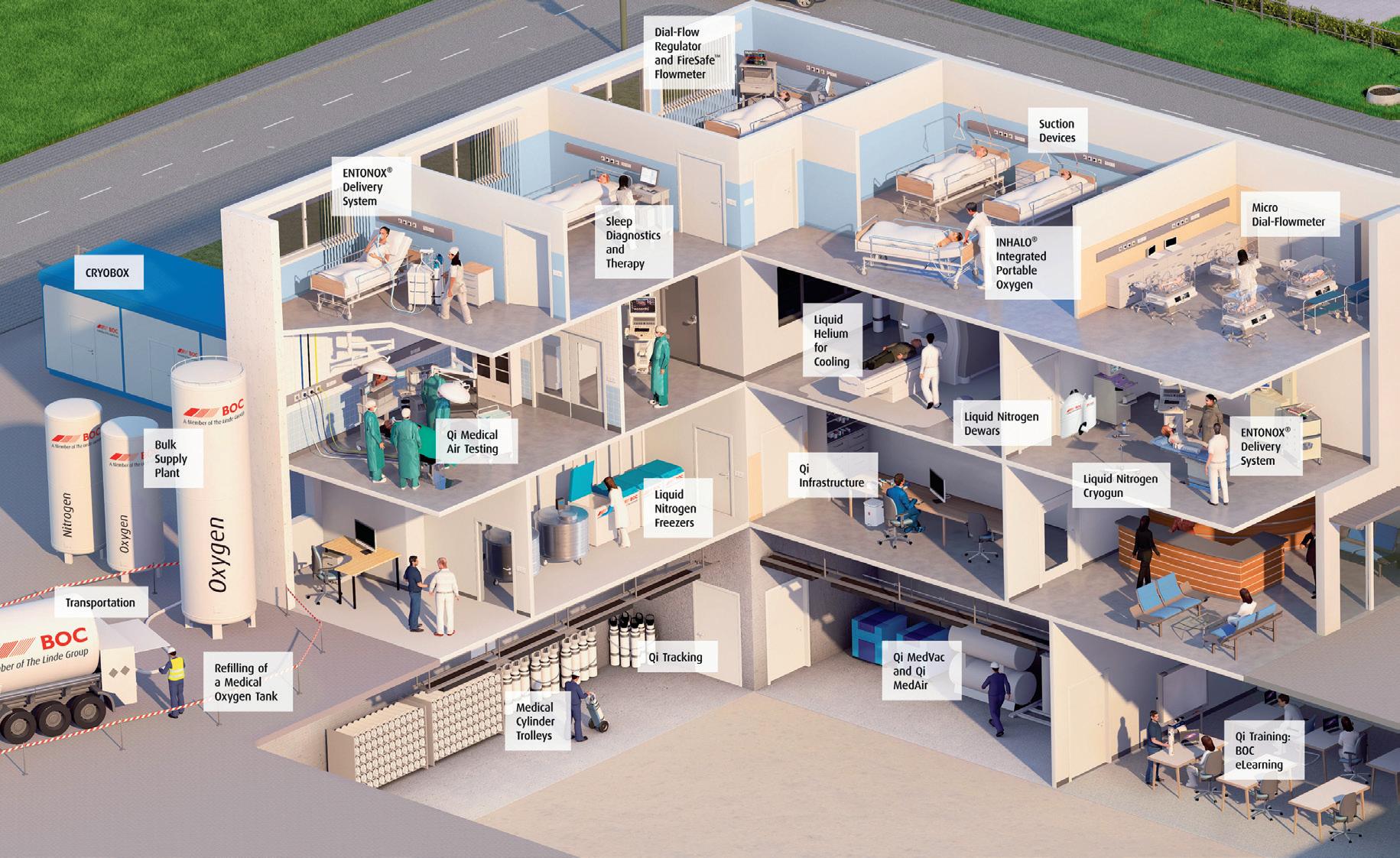
• Outdated gas cylinder manifolds that no longer comply with safety design standards.
• Unmaintained or non-compliant medical air plants, compromising reliability of supply and delivering poor-quality medical air.
• Insufficient pipeline and instrumentation drawings, increasing the difficulty of troubleshooting and repair of the medical gas system.
• Non-compliant cylinder storage or cylinder segregation resulting in fire and asphyxiation hazards.
Drawing on over 60 years’ experience of providing medical gas solutions and support, BOC has developed QI® Risk as a proactive approach to manage the safety, reliability and compliance of medical gas reticulation systems.
QI Risk is a comprehensive medical gas pipeline and operational assessment package involving a thorough inspection, risk assessment, detailed reporting and recommendations by one of BOC’s medical gas reticulation experts; giving your healthcare facility the insight required to ensure safe and reliable operation of the complete medical gas reticulation system.
BOC will work closely with you to tailor the scope of the QI Risk assessment package to meet the
»
specific requirements of your healthcare facility — this assessment can include all or part of the following areas:
• Liquid oxygen supply.
• Cylinder storage.
• Manifolds and manifold rooms.
• Medical gas alarm systems.
• Plant rooms, medical air and medical vacuum plants.
• Medical gas reticulation.
• Department, ward and theatre medical gas infrastructure.
• Medical gas training, policies and procedures.
• Safety regulatory requirements.
BOC can assist in the design, supply and fitting of medical gas infrastructure, equipment and maintenance; developing best practice solutions specific to a healthcare facility’s needs and assisting in maintaining compliance and accreditation within current regulatory standards.
For more information call us on 1800 050 999 or email healthcare@boc.com or visit www.boc-healthcare.com.au
BOC is a trading name of BOC Limited, a subsidiary of Linde plc. © BOC Limited 2020. Reproduction without permission is strictly prohibited. Details given in this document are believed to be correct at the time of printing. Whilst proper care has been taken in the preparation, no liability for injury or damage resulting from its improper use can be accepted.
The Australian healthcare system is under insurmountable pressure and reports of increased wait times, overcrowding in emergency departments and exhausted ambulance services failing to meet the growing demand are becoming commonplace. This is causing widespread stress, frustration and exhaustion within the medical community.
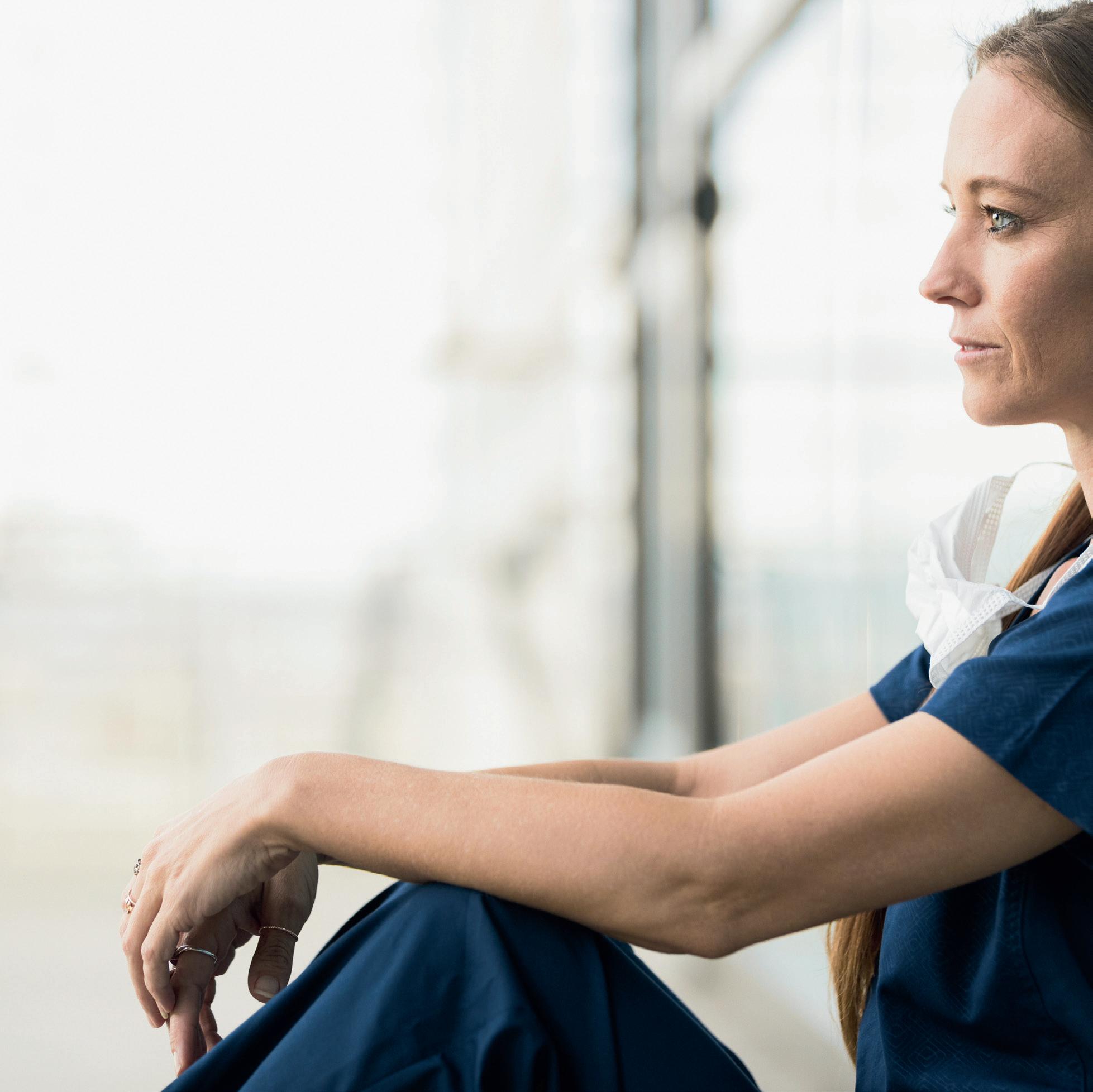
Afew months ago we were shocked and saddened by the news of young Hiyaan Kapil who died shortly after being discharged from Logan Hospital, suffering from excruciating abdominal pain — only to be told he had constipation and dehydration. Kymberlie Ousby who had brought her daughter to the hospital witnessed these events and commented on the ED being extremely full and the busiest she had ever seen it.
It is no secret that working in the medical field can be incredibly taxing; from long hours to
constant stress and responsibility. As a health professional, there is a level of pressure that is expected and when tolerated and overcome, can lead to a sense of accomplishment and satisfaction. However, if it persists endlessly beyond what is humanly possible, it can also lead to fatigue and burnout.
This problem is not unique to Australia. Many countries struggle to keep up with the increasing need for healthcare services. Unfortunately, the dire consequences are becoming evident — more frequent errors and, sadly, untimely fatalities.
We need to resist blaming the doctors, nurses, and paramedics, who are part of a stretched system that is led by managers and politicians who often lack an understanding of the day-to-day issues faced by health professionals.
Fatigue is a feeling of tiredness that can be physical, emotional or cognitive. It can lead to a decrease in productivity and performance, as well as an increase in errors. Burnout, on the other hand, is a state of chronic stress that leads to physical and emotional exhaustion.
It can cause a decline in job satisfaction and motivation, as well as problems with relationships and health.
Both fatigue and burnout are serious issues for medical professionals. They can lead to decreased quality of care and mistakes that can harm patients, and can even cause practitioners to leave the field altogether.

Some common signs of fatigue include yawning frequently, having trouble staying focused, feeling irritable or impatient, having difficulty remembering things, and feeling tired even after getting enough sleep. The
signs of burnout vary from person to person but may include feelings of emptiness or cynicism, detachment from work or clients, irritability or anger, physical symptoms such as headaches or nausea, and a lack of interest in activities that used to bring joy.
Health professionals are constantly pushed beyond their limits, having worked long hours without sufficient breaks since the pandemic, and now dealing with the post-pandemic load. This severe and constant stress has taken a toll on many working in the medical field, who suffer fatigue and burnout, yet aren’t in a position to step away from their work and take the time off that they require.
In the mental healthcare field especially, there are limited resources and a huge burden of care. This is becoming increasingly stressful and mental health professionals are overwhelmed, often feeling physically exhausted, being short-tempered, feeling ineffective at work, or having difficulty concentrating.
Medical professionals are the backbone of our healthcare system. Their tireless efforts and pleas for help are often ignored or met with more work at inadequate pay rates. We seem to expect medical professionals to be martyrs, caring for others at the expense of their own wellbeing.
Even within private practice, the administrative demands are hard to bill and even more so when knowing the stressors faced by your clients.
If you are experiencing fatigue or burnout, it is important to take steps to address the issue. Here are a few tips:
1. Take breaks throughout the day. Get up and move around every hour or so to break up the monotony of sitting at your desk. Take a few minutes to stretch or go for a walk outside.
2. Make time for yourself. Set aside time each day to do something that you enjoy, whether it's reading, going for a walk or watching your favourite show.
3. Connect with others. Talk to your coworkers or friends about what's going on in your life. Venting can help to relieve some of the stress you’re feeling.
4. Seek help if needed. If the fatigue or burnout is severe, it may be helpful to talk
to a therapist or counsellor about how to manage it.
When providers are overworked and overextended, they are at risk of developing fatigue and burnout. This can lead to decreased job satisfaction, lower morale and an increased risk of medical errors.
There are several ways hospitals and medical organisations can help manage the flow of patients through our health systems to prevent overworked and overtired employees. One way is to ensure that providers have appropriate breaks and time off.
We need more upskilling of staff and faster moving through training programs to ensure we can have adequate resources to meet the demands.
Overseas graduates who seek opportunities abroad should have easier access to certification.
Adding support for providers, such as mentorship programs where inexperienced providers are paired with experienced ones, helps inexperienced individuals learn the ropes of the job more quickly and develop close relationships with those within the field. Instilling wellness programs within the organisation also offers opportunities for providers to participate in activities such as yoga or meditation. This can help them manage stress and stay healthy as well as promoting a warm and positive team environment, where everybody can work together and rely on each other when needed. And finally, we need to make sure our medical professionals are adequately remunerated. Professionals need to be paid appropriately for the services they provide to the community. Not only will this increase incentive and motivation to persevere when things get tough, but it may also help encourage future generations to join the medical field, knowing that they will be paid accordingly for their efforts.
It's time for us to start valuing our medical professionals more. We need to give them the respect and support they deserve. If we don't, then we'll pay the price when they're all gone.
*Dr Lisa Myers is a Child Adolescent Psychiatrist (BMedSc, MBCHB, FRANZCP, Cert of Advanced Training Child Adolescent Psychiatry). Her first book is also out for pre-order.
“Overseas graduates who seek opportunities abroad should have easier access to certification.”
Common bacterial infections were the second leading cause of death in 2019 and were linked to one in eight deaths globally, according to an analysis published in The Lancet
There were 7.7 million deaths in 2019 associated with 33 common bacterial infections, with five bacteria alone connected to more than half of all deaths. The deadliest bacterial pathogens and types of infection varied by location and age.
Second only to ischaemic heart disease as the leading cause of death in 2019, the analysis highlights reducing bacterial infections as a global public health priority. Building stronger health systems with greater
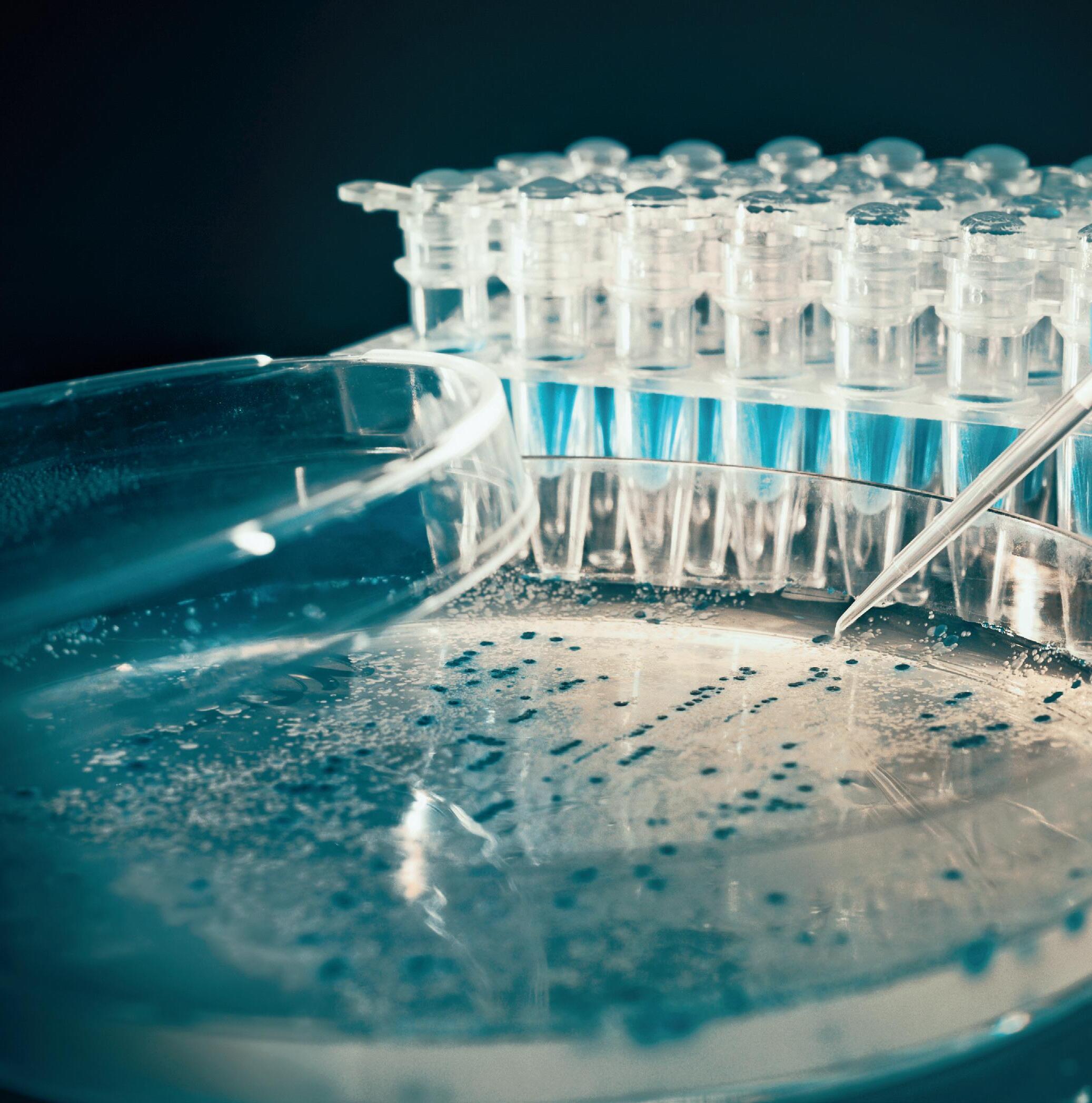
diagnostic laboratory capacity, implementing control measures and optimising antibiotic use are crucial to lessen the burden of disease caused by common bacterial infections.

“These new data for the first time reveal the full extent of the global public health challenge posed by bacterial infections,” said Dr Christopher Murray, study co-author and Director of the Institute for Health Metrics and Evaluation (IHME) at the University of Washington’s School of Medicine.
“It is of utmost importance to put these results on the radar of global health initiatives so that a deeper dive into these deadly pathogens can be conducted and proper investments are made to slash the number of deaths and infections.”
While many estimates exist for pathogens such as tuberculosis, malaria and HIV, until now estimates of the disease burden of bacterial pathogens were limited to a handful of specific pathogens and types of infection, or focused only on specific populations. More deaths were linked to two of the deadliest pathogens — S. aureus and E. coli — than HIV/AIDS (864,000 deaths) in 2019, yet analysis shows HIV research was awarded $42 billion while E. coli research was awarded $800 million. The authors say such funding gaps might have arisen because there was, until now, a lack of data on the global burden of these infections.
The new study provides the first global estimates of mortality associated with 33 common bacterial pathogens and 11 major infection types — known as infectious syndromes — leading to death from sepsis. Estimates were produced for all ages and sexes across 204 countries and territories. Utilising data and methods from the Global Burden of Disease 2019 and Global Research on Antimicrobial Resistance (GRAM) studies, the authors used 343 million individual records and pathogen isolates to estimate deaths associated with each pathogen and the type of infection responsible.
Of the estimated 13.7 million infectionrelated deaths that occurred in 2019, 7.7 million were associated with the 33 bacterial pathogens studied. Deaths associated with these bacteria accounted for 13.6% of all global deaths, and more than half of all sepsis-related deaths, in 2019. More than 75% of the 7.7 million bacterial deaths occurred because of three syndromes: lower respiratory infections (LRI), bloodstream infections (BSI) and peritoneal and intraabdominal infections (IAA).
Five pathogens — S. aureus, E. coli, S. pneumoniae, K. pneumoniae and P. aeruginosa — were responsible for 54.2% of deaths among the bacteria studied. The pathogen associated with the most deaths globally was S. aureus, with 1.1 million deaths. Four other pathogens were each associated with more than 500,000 deaths: E. coli (950 000 deaths), S. pneumoniae (829,000), K. pneumonia (790,000) and Pseudomonas aeruginosa (559,000). A similar number of female and male deaths were associated with the leading bacterial pathogens.
Age-standardised mortality rates varied by location, as did the deadliest pathogens. Sub-Saharan Africa recorded the highest mortality rate, with 230 deaths per 100,000 population. By comparison, the high-income super-region — which includes countries in Western Europe, North America and Australasia — recorded the lowest mortality rate, with 52 deaths per 100,000 population. S. aureus was the leading bacterial cause of death in 135 countries, followed by E. coli (37 countries), S. pneumoniae (24 countries) and K. pneumoniae and Acinetobacter baumannii (4 countries each). Country-level data is available in Appendix Table S2.
“Until now, country-level estimates for parts of the world where people are worst affected by bacterial infections have been noticeably absent,” said Authia Gray, study co-author and Post-Bachelor Fellow at IHME at the University of Washington’s School of Medicine.
“These new data could act as a guide to help address the disproportionately high burden of bacterial infections in low- and middleincome countries and may ultimately help save lives and prevent people losing years of their lives to illness.”
The pathogens associated with the most deaths differed by age. With the 940,000 deaths, S. aureus was associated with the most deaths in adults aged over 15 years. The most deaths in children aged 5 to 14 years were associated with Salmonella enterica serovar Typhi, with 49,000 deaths. In children older than newborns but under 5 years of age, S. pneumoniae was the deadliest pathogen, accounting for 225,000 deaths. The pathogen associated with the most neonatal deaths was K. pneumoniae, with 124,000 deaths.
The authors acknowledge some limitations to their study, many of which are due to a lack of data. Limited data is available for some parts of the world, particularly many low- and middle-income countries (LMICs), where the estimated burden of disease is greatest. This underscores the need to improve data collection capacity and surveillance systems in LMICs. Combining and standardising data from a wide variety of sources also introduces potential sources of bias, including misclassification of community- or hospital-acquired infections as well as data from passive surveillance systems that may overestimate the virulence or drug-resistance of pathogens.
This interactive tool can be used to explore estimates of the burden of infections.
 Catherine Koetz, Director – Healthcare GS1 Australia
Catherine Koetz, Director – Healthcare GS1 Australia
For more than a decade, GS1 Global Reference Books have showcased the many learnings, success stories and best practices from across the globe as organisations work to digitise their clinical processes and supply chains. Although the past few years have brought with them some of the greatest disruptions many organisations have ever had to manage, the challenges have largely brought innovation. In cases where clinical integration of supply chains and improved inventory management had been overshadowed by electronic health record projects in many instances, a new fervour has emerged because of the greater understanding of the need for supply chain visibility.
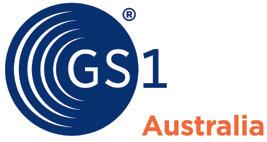
Unprecedented demand for personal protective equipment demonstrated the value of being able to manage medical consumables more precisely. The rollout of vaccines showed how important it is to be able to track vital medical supplies and so use them in the most effective way possible. As antivirals become part of treating those at the highest risk of serious illness from Covid-19, the need to be able to quickly identify and remove counterfeit drugs from supply chains also becomes clearer. The value of GS1 global data standards within healthcare processes has never been clearer in countries around the world.
Several case studies detail how hospitals are using GS1 standards to better manage stock. At The First Affiliated Hospital of Zhengzhou University in China, for instance, full tracking of high-value medical devices has been introduced to manage products using the Unique Device Identification (UDI) for the device. It’s a similar story at Manchester University NHS Foundation Trust. As one of the largest healthcare providers in the UK, providing services for ten separate sites, obtaining full visibility of supplies across
the organisation has traditionally been very difficult, leading to inefficiencies. By implementing changes to systems and embedding global standards, an instant and precise picture of what equipment is available, where and in what quantities has been enabled. In addition, they have also reduced the time taken to manage product recalls, have released precious clinical hours back to care and are using the data created to help manage clinical variation.
of products used in clinical trials has long occurred in a wide variety of ways making it hard to capture or compare data. By following the clinical trials application standard, Pfizer was able to streamline and standardise the management of its clinical trial products. In the first instance, this is helping those at Pfizer ensure the right products go to the right sites in the right quantities and in the longer term, the same standards will also be used by hospitals to help with the administration of clinical trials medicines — and even by the patients taking part in trials. The vision is that patients would be able to scan a code using their phone which would then present information about, for instance, how and when to take the drug and how to store it. This is already happening with some commercially available products. In Singapore, Johnson and Johnson has introduced a mobile application that patients can download enabling them to scan the barcode on their products and link to a secure online system and directly to important, updated and regulated electronic product information in the language of their choice.
Managing scarce medications has become one of regulators’ and health organisations’
largest challenges in recent times. Many regulators have implemented requirements for serialisation and data sharing, meaning companies such as Aspen have needed to develop solutions that enable scalable compliance to a wide variety of regulatory frameworks. Thankfully most have chosen to utilise GS1 data standards. In countries like Ethiopia, for example, work is underway to enable them to immediately authenticate all medicines by scanning the product barcode at all points on the supply chain. And in Nigeria, the National Agency for Food and Drug Administration and Control (NAFDAC) has launched a five-year plan to implement traceability of all pharmaceutical products in the country. Based on GS1 data standards and barcodes, the idea is to be able to precisely track every medicine, from arrival in the country to administration. Covid-19 vaccines offered the opportunity to pilot the new traceability plans, and this means it is possible to see details of vaccine batches in the country — including manufacturer and expiry dates — and to follow the journey of any batch.
The accelerated innovation seen during the initial phases of the pandemic has advanced the use of GS1 data standards in healthcare around the world. As the challenges faced during this time highlighted inefficiencies and we also continued to drive broader digitisation, many organisations have been refocussing teams on projects to ensure that we can manage the new ‘business-as-usual’ better than before. Data and analytics are critical to supporting the healthcare of today and tomorrow, and it is increasingly true that around the world, GS1 data standards are playing a role in making healthcare safer and more efficient for all.
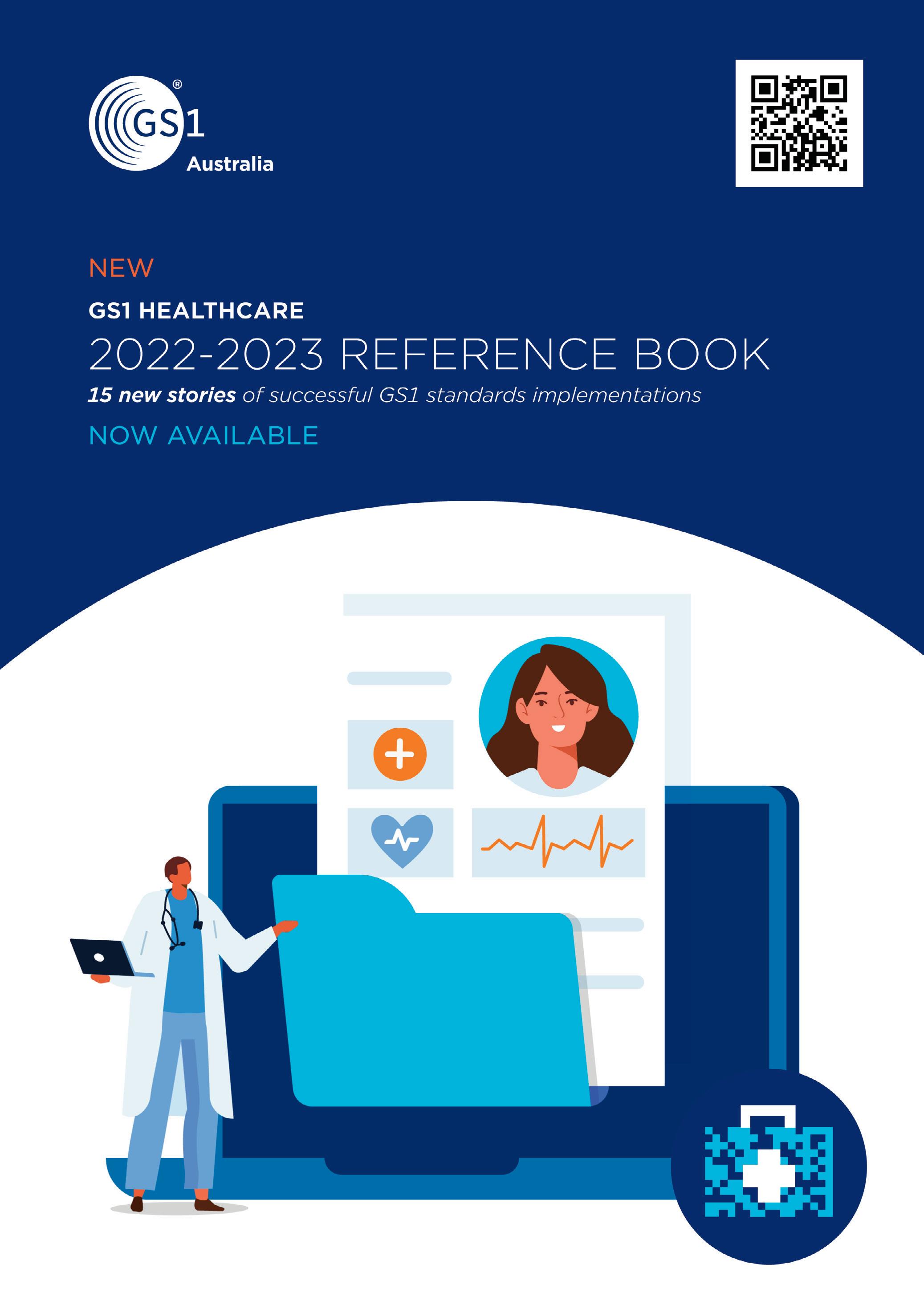
Despite efforts to prevent and reduce HAIs, they remain an ever-present threat to patient safety. Now researchers have found evidence pointing to an unexpected source of such bacteria: the hospitalised patients themselves.

Around 170,574 adults admitted to public hospitals in Australia are estimated to contract hospital-associated infections (HAIs) each year, leading to 7583 deaths. This is according to research by Monash University published in Antimicrobial Resistance & Infection Control
Researchers from the Washington University School of Medicine in St. Louis have discovered that urinary tract infections (UTIs) can arise after sterile tubes, called catheters, are inserted into the urinary tract, even when no bacteria are detectable in the bladder beforehand.
Such tubes are commonly used in hospitals to empty the bladders of people undergoing surgery. In the mice, inserting the tubes activated dormant Acinetobacter baumannii (A. baumannii) bacteria hidden in bladder cells, triggering them to emerge, multiply
and cause UTIs, the researchers said. The findings, published in Science Translational Medicine, suggest that screening patients for hidden reservoirs of dangerous bacteria could supplement infection-control efforts and help prevent deadly infections.
“You could sterilise the whole hospital, and you would still have new strains of A. baumannii popping up,” said co-senior author Mario Feldman, PhD, a professor of molecular microbiology, in a statement.
“Cleaning is just not enough, and nobody really knows why. This study shows that patients may be unwittingly carrying the bacteria into the hospital themselves, and that has implications for infection control. If someone has a planned surgery and is going to be catheterised, we could try to determine whether the patient is carrying the bacteria and cure that person of it before the surgery. Ideally, that would reduce the chances of developing one of these lifethreatening infections.”
A. baumannii is a major threat to hospitalised people, causing many cases of UTIs in people with urinary catheters, pneumonia in people on ventilators, and bloodstream infections in people with central-line catheters into their veins. The bacteria are said to be notoriously resistant to a broad range of antibiotics, so such infections are challenging to treat and easily can turn deadly.
Feldman teamed up with co-senior author Scott J. Hultgren, PhD, the Helen L. Stoever Professor of Molecular Microbiology and an
expert on UTIs, to investigate why so many A. baumannii UTIs develop after people receive catheters.
Most UTIs among otherwise healthy people are caused by the bacterium Escherichia coli (E. coli). Research has shown that E. coli can hide out in bladder cells for months after a UTI seems to have been cured, and then reemerge to cause another infection.
Feldman and Hultgren — along with co-first authors Jennie E. Hazen, a graduate student, and Gisela Di Venanzio, PhD, an instructor in molecular microbiology — investigated whether A. baumannii can hide inside cells like E. coli can. They studied mice with UTIs caused by A. baumannii. They used mice with weakened immune systems because, like people, healthy mice can fight off A. baumannii.
Once the infections had resolved and no bacteria were detected in the mice’s urine for two months, the researchers inserted catheters into the mice’s urinary tracts with a sterile technique. Within 24 hours, about half of the mice developed UTIs caused by the same strain of A. baumannii as the initial infection.
“The bacteria must have been there all along, hiding inside bladder cells until the catheter was introduced,” Hultgren said in a statement. “Catheterisation induces inflammation, and inflammation causes the reservoir to activate, and the infection blooms.”
Since A. baumannii rarely causes symptoms in otherwise healthy people, many people who carry the bacteria may never know they’re infected, the researchers said. As part of this study, the researchers searched the scientific literature and discovered that about 2% of healthy people carry A. baumannii in their urine.
“I wouldn’t put much weight on the precise percentage, but I think we can say with certainty that some percentage of the population is walking around with A. baumannii,” Feldman said.
“As long as they’re basically healthy, it doesn’t cause any problems, but once they’re hospitalised, it’s a different matter. This changes how we think about infection control. We can start considering how to check if patients already have Acinetobacter before they receive certain types of treatment; how we can get rid of it; and if other bacteria that cause deadly outbreaks in hospitals, such as Klebsiella, hide in the body in the same way. That’s what we’re working on figuring out now.”
Discover why you should make CliniMix® Lead Safe™ CMV2 your first choice:

Thermal disinfection without removing front faceplate.
Thermostatically controlled water temperature and scald protection.
Unique hygiene flush feature for in-situ disinfection.

Lead Safe™ materials.
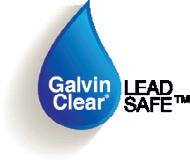
Environmentally sustainable solution.
Bluetooth, colour and activation options available.
Learn more at www.galvinengineering.com.au


Safety and water control has never been easier.
“Research has shown that E. coli can hide out in bladder cells for months after a UTI seems to have been cured, and then re-emerge to cause another infection.”iStockphoto.com/Sam Edwards
New analysis of combined data from NSW Health and general practice shows that patients who are promptly followed up by their GP after a hospital admission are much less likely to need to return to hospital.
The study analysed data in NSW Health’s Lumos program, which currently includes data from 23% of NSW practices and covers over half of NSW residents.

The research, conducted by NSW Health Lumos team, was presented at the Royal Australian College of General Practitioners (RACGP) annual conference, by RACGP NSW Chair Associate Professor Charlotte Hespe and Dr Walid Jammal, a Sydney GP and member of the Strengthening Medicare Taskforce. The study provides more evidence that patients need support and follow-up care with their GP after an unplanned hospital visit, to help ensure they have the best possible health outcomes and don’t end up back in hospital.
Analyses of Lumos data also showed GPs have a strong impact on reducing the cost of health care. NSW Health explored ‘highconnectivity practices’ — where more than 30% of patients have visited the practice at least 12 times over the previous two years. Patients at high-connectivity practices overall had a 10% lower chance of an emergency department presentation and a 12% lower chance of an unplanned hospitalisation.
For each dollar paid through Medicare rebates at such practices there was a $1.60 benefit to the NSW Health system. But when
accounting for patients’ ages, the benefit–cost ratio for younger patients becomes even higher.
Each dollar of Medicare rebate returned $3.24 in benefit for children aged 0–9, $1.96 for ages 10–19, $2.21 for 20–29 and $2.82 for people aged 30–39.
Other analysis of Lumos data found where a patient had received a chronic mental health diagnosis at a hospital, but it was not recorded at their general practice, they were 25% more likely to attend an emergency department in the following year than patients whose diagnosis has been recorded at their general practice for at least two years. Similarly, patients whose diabetes was first recorded in general practice were less likely to present to ED or be admitted to hospital.
Patients with chronic mental health conditions who also had two or more chronic physical conditions that were recorded at a hospital, but not their general practice, were 60% more likely to attend an emergency department than patients whose chronic conditions were recorded in their GP’s systems in the following 12 months.
Associate Professor Hespe, who is also Head of General Practice and Primary Care Research at the University of Notre Dame’s School of Medicine Sydney, said, “This research provides evidence of what GPs know: that good general practice improves patient health outcomes, and this reduces emergency presentations, unplanned admissions and readmissions to hospital,” she said.
“It’s clear GPs play a vital and high-value role in Australia’s health system, and it’s critical that there is good integration between hospitals and general practices.
“However, this research found a significant gap where practices do not have a record of a patient’s chronic conditions. Better continuity of care across the acute and primary care interfaces can significantly improve patient outcomes.
“The RACGP is continuing to call on the government to provide funding for patients to see their GP within seven days of an unplanned hospital admission or emergency department presentation.
“Where younger people are able to access a regular GP, they can develop a trusted relationship with strong continuity of care,” she said.
“This is particularly important in the context of mental health, which 71% of GPs said was among their top three most common presentations in the 2022 RACGP Health of the Nation survey, and a growing area for young people.
“Yet the available rebates for mental health items under the Medicare Benefits Schedule is lower than for the equivalent general consultation items. This research is even more evidence that Medicare rebates for mental health care need to increase to reflect the value that GPs deliver, especially where a patient’s mental health is concerned.”
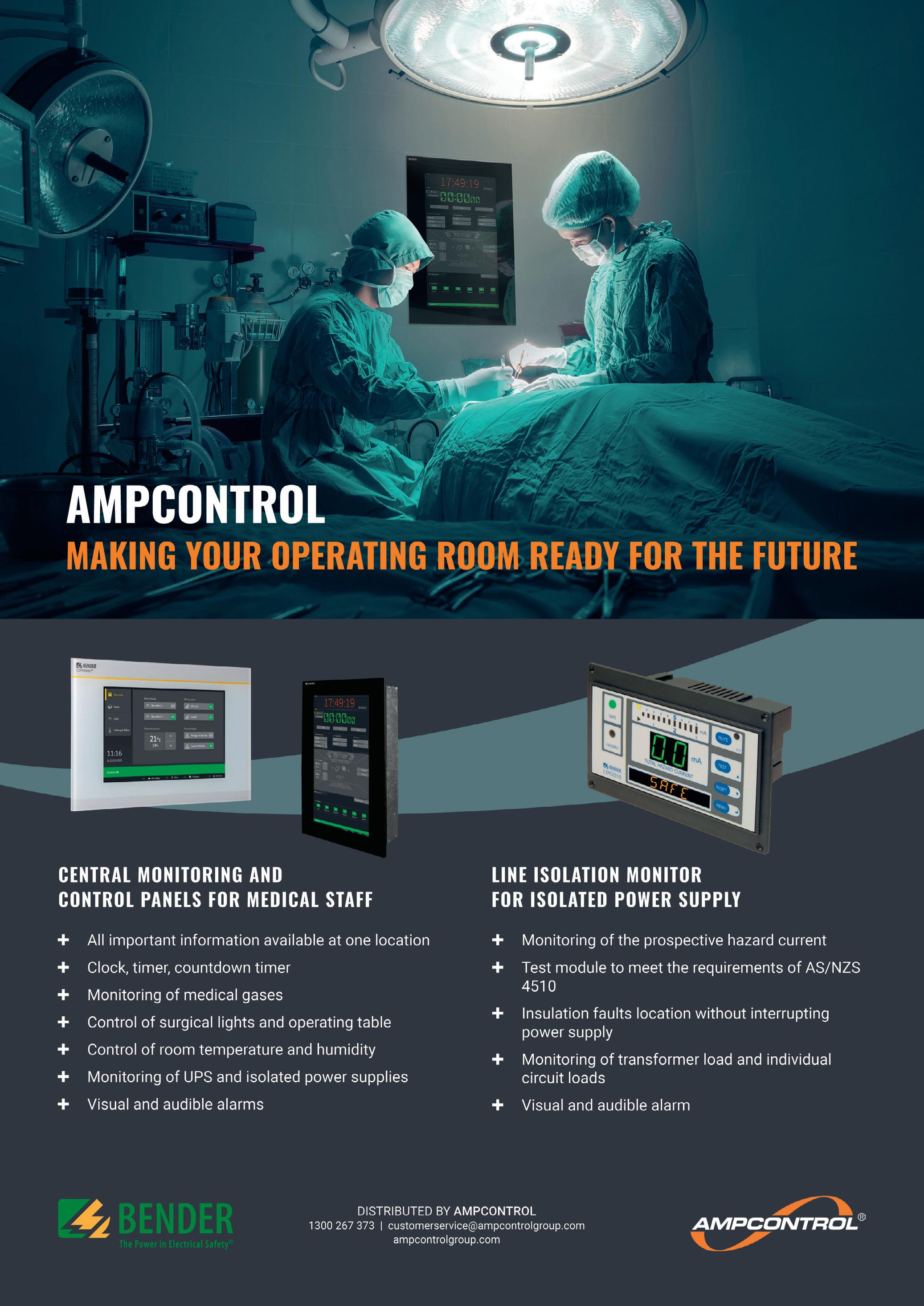
The Australian Commission on Safety and Quality in Health Care (the Commission) has released the National Safety and Quality Mental Health (NSQMH) Standards for Community Managed Organisations (CMOs) to improve the quality of service and protect users from harm.
Around 21% of adults (16–85 years) and 40% of young people (16–24 years) experienced a common mental health disorder in 2020–21i, with up to 100,000 Australians seeking mental health support every year from community managed organisations (CMOs).
More than 200 CMOs — mostly not-for-profit, non-government organisations — provide mental health services across Australia, often sharing care with public health services, primary care providers and private health services. These services include psychosocial rehabilitation, helpline and counselling services, sub-acute step up/step down services, accommodation support, self-help and peer support, as well as employment, education, and family and carer support.
David McGrath, the Commission’s Executive Lead, Mental Health Standards, said the standards would give confidence that accredited community managed mental health services are committed to providing safe, high-quality mental health care.
“Over a lifetime, almost half of us will experience a mental health disorder — so there’s a high likelihood many of us will need
to access support services during our life journey,” he said.
“Community managed organisations deliver vital services to Australians with mental ill health, supporting people in their own community and close to their family and friends support networks. The COVID-19 pandemic has highlighted the value of providing local mental health care.
“For the first time, Australia has a contemporary set of standards specific to the delivery of mental health services by community managed organisations, which is a breakthrough for the sector.”
According to McGrath, there are important gains for Australians accessing these mental health services. In any given year, about 800,000 Australiansii experience severe mental illness. Many of these people will require extended support on their recovery journey.
“The standards are a significant step in providing safety and quality assurance for consumers, their families and carers. They will build trust between service providers and the people they support, and help consumers to feel more comfortable about engaging with a service.”
McGrath added: “It is vital that a CMO, as a condition of funding, has the necessary governance arrangements to service the community, has a robust model of care and works in partnership with consumers.”
The NSQMH Standards for CMOs comprise three core standards: Practice Governance, Partnering with Consumers, Families and Carers, and Model of Care — each with different elements to be implemented by service providers.
The Commission worked closely with the CMO sector to develop the standards over 18 months, seeking input from across the sector, including consumers and their families and carers, service providers (CMOs), peer support workers and funding organisations.
Carmel Tebbutt, Chief Executive Officer, Mental Health Coordinating Council, is one leader in the sector who has provided input to the development of the standards.
“The standards are tremendously valuable as they are purpose-designed, so they reflect the unique history and culture of CMOs,” she said.
“There has been significant consultation with the sector about the standards by the Commission, and it is great to see the final product reflects that input. The section on values explicitly recognises that CMOs deliver services that are recovery oriented — in line with the national framework, and which encompass a trauma-informed approach,” Tebbutt added.
McGrath explained that the new standards are voluntary but will bring much-wanted guidance and rigour to the sector. Accreditation to the NSQMH Standards for CMOs will commence in early 2024.
“Importantly, a commitment to human rights principles — in line with the Australian Charter of Healthcare Rights — is at the core of the standards. This is a key part of mental health care, and these standards recognise the rights of individuals to determine their own recovery pathway, in partnership with services.”
The NSQMH Standards for CMOs are aligned to existing standards, including: the National Safety and Quality Health Service Standards, the National Safety and Quality Digital Mental Health Standards and the National Safety and Quality Primary and Community Healthcare Standards.
i Australian Bureau of Statistics (ABS). National Survey of Mental Health and Wellbeing 2020–21. Australian Department of Health. 2022.
ii Australian Institute of Health and Wellbeing (AIHW) Mental health services in Australia: Prevalence and impact of mental illness. 2022.



The cost of pressure injuries in public hospitals in 2020 was around $9.11bn a year, of which treatment cost was $3.59 billion, according to research published in International Journal of Nursing Studies
Hospital-acquired pressure injuries account for over half of the total costs — a total of $5.50 billion per year. A pressure injury is often consider a ‘hospital issue’, with care during hospital stay or in transition after hospitalisation always being a key focus.
“What’s not on the forefront of everyone’s mind is the beginning of the patient journey,” said Clinical Excellence Commission Chief Executive Professor Michael Nicholl.
To strengthen focus on risk management during transport, reduce the risk of vulnerable patients developing pressure injuries and provide guidance to health staff, the Clinical Excellence Commission (CEC) has released a new resource — Guiding principles for pressure injury prevention and management during patient transport.
Nicholl said while the vast majority of pressure injuries are acquired, or worsen, outside hospitals, the new guidelines were a great new tool focused on the pre-hospital transport part of the journey. “Considering the millions of people we treat each year, pressure injuries are uncommon, and the new

principles were developed to support the small group of vulnerable patients at risk of these debilitating injuries,” Nicholl said.
“Many patients quite vulnerable to pressure injuries are older and have existing health issues and pressure injury prevention and management is an area where we can improve patient safety and reduce the risk of harm to our patients.
“We encourage all health workers to adopt the key behaviours we’re recommending in our new guidelines as a way to help keep patients safe,” Nicholl said.
“Regular patient repositioning and reducing pressure and discomfort around the lower back are simple steps which will help prevent pressure injuries when patients spend long periods travelling in patient transport vehicles.
“It has been great to see collaboration across the health system lead to the new resources,” he said. Longer-term, the Commission plans to develop resources to support education and training specific to relevant organisations.
“We have to remember that there are multiple services involved in transporting patients, from home environment to aged care. We are going to tailor the resources based on different organisations involved,” Nicholl said. The CEC will be working with training partners to develop these resources.
Above is the pressure injury prevention and management flow chart, developed by the CEC, for non-inpatient.
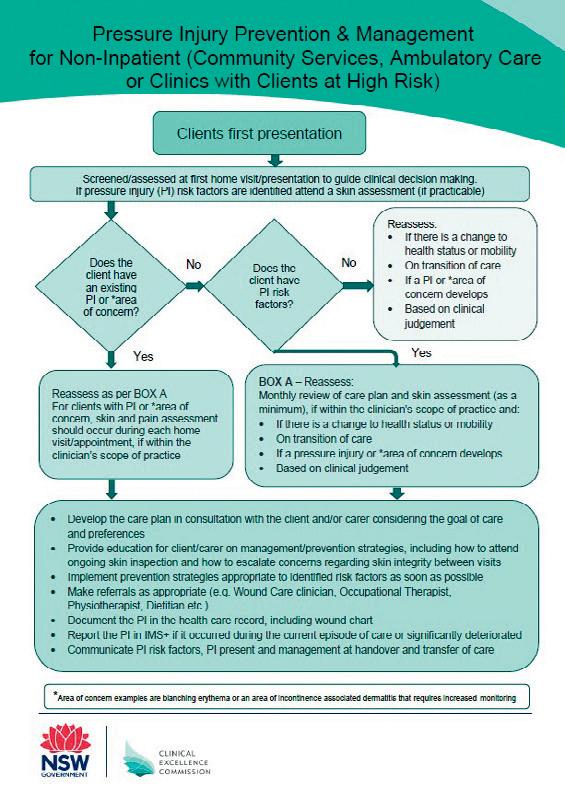
Caire provides everything you need for your oxygen therapy, from oxygen concentrators to accessories, we are dedicated to helping you breathe easy.


Expand your comfort zone with this innovative and powerful design:
Compact and Lightweight
Lasts all day
• Ergonomically Designed
• Quiet
Combining portability with clinical efficiencygiving you the freedom to travel and enjoy life on the go:
Compact and transportable
Extended Battery Life Quiet
• 24/7 Use
Stationary oxygen concentrator that’s durable with a high continuous flow:
Higher flow options for patients in hospitals or long-term care facilities
• Dual flow option allowing two patients to use simultaneously
• Easy to service and maintain
A power efficient stationary oxygen concentrator is the must have for your home oxygen delivery needs:




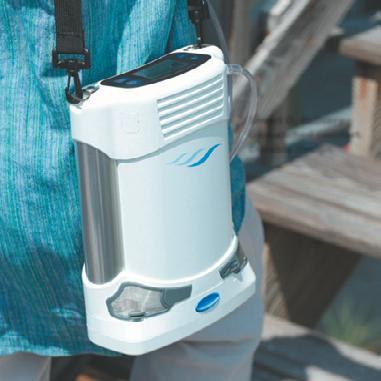
• Lightweight and easily transportable
• Low failure rate with no preventative maintenance schedule
Lockable flow meter caireaustralia.com.au
Eclipse 5 AirSep VisionAire 5With mounting burnout, stress and rising workloads the Great Resignation might not be going away any time soon. But will the new measures measure up?
After returning to work as a nurse following a 12-month maternity break, Andrea Simmons* had hoped to cut down her shifts and spend more time with her son. Her employer, however, had other ideas and wouldn’t budge on the two-day week she’d been contracted to prior to having the baby. After much back and forth, Andrea conceded and began her reluctant search for a day care placement.
“I tried everything I could to cut my shifts down to just two per fortnight, but my boss was desperate, and he knew I couldn’t afford to walk away from the job,” she told Hospital + Healthcare
Andrea’s situation is one of many symptoms plaguing Australia’s overburdened health workforce. After being dealt a double blow of surging illness and a migration freeze, the already understaffed sector has been in crisis for much of the pandemic.
Add to that the impending challenges around chronic disease and an aging population, and there are few signs of abatement. In fact, Health Workforce Australia (HWA) has estimated that there will be a shortage of more than 100,000 nurses nationally by 2025.

Andrea has noticed the rise in pressure since returning to work and believes it is both a consequence and cause of the workforce crisis.
In the last few months, 15 of her senior colleagues on the emergency department have vacated their roles — some after decades of service.
“Things feel different now than they did 12 months ago. Sure, we were in the thick of the pandemic then. But now we are even deeper into it and people haven’t had a break. People are just too stressed and are looking for work elsewhere.”
To combat the staffing crisis in health care, Australia is introducing a range of measures. Soon, aspiring nurses and midwives in Victoria will benefit from complimentary education as part of a $270 million state government initiative; and there are hopes that overseas talent will soon flood in with the lifting of migration caps.
Andrea believes neither of these approaches are sustainable without serious reform.
“Put it this way, I studied for four years to get where I am today in my career and I seriously toy with the idea of jacking it in on a daily basis. I know many other nurses that do too,” she said.
“Some of the staff that recently left the emergency department had taken 20-plus years to get to where they were, and they are now finding jobs in other sectors.
“In other words, free education may entice workers into health care but it won’t guarantee they stay there for more than a few years — and almost certainly not for a lifetime.”
Changes to migration policy may also fail to move the dial, with nurse understaffing a global problem. The World Health Organization has warned that there will be a deficit of 13 million nurses around the world by 2030. While Australia is an attractive destination for immigrants, the global healthcare talent pool may be too shallow to draw from.
Andrea believes overwork and underpay are the main barriers to recruitment and retention
in health care. She believes higher nurse ratios and a liveable salary would have kept most of her departing colleagues in their jobs. In the absence of an adequate funding avenue for a pay rise, factors like workplace flexibility and employee entitlements could make a meaningful difference, she says.

“When I was negotiating a shift reduction with my employer, I also proposed working solely on weekends [instead of reducing shifts]. That way my husband could take care of our son whilst I work and we could have avoided costly day care fees. However, my boss
refused and scheduled my shifts for midweek [when my partner is working],” she said.
“I get that it might not be reasonable to get the pay we want, but having to fork out unnecessarily for day care has been like having a pay cut — and with the conditions we are in now, it sometimes doesn’t feel worthwhile.
“Besides, my boss has shot himself in the foot because my son is bringing home sickness constantly from day care and I’ve had lots of time off as a result.”
Meaningful gestures of gratitude can also make a difference to quality of life as a nurse,
Andrea said — scoffing at some of the tokens of appreciation she had received to date.
“This year we were gifted a badge to say we had worked with COVID patients, along with a drink bottle and a towel.
“It was a nice sentiment, but the gifts were pretty laughable, especially in light of what we had been through. I know nurses who are currently seeking mental health support from having over-extended themselves these last few years — I’m not sure a drink bottle is adequate,” she concluded.
*name changed for privacy
Burnout is rampant among healthcare professionals, and staffing shortages are adding to the pressure on healthcare systems. Could emerging technology innovations help ease the burden on healthcare professionals, and empower a more resilient workforce?

Burnout [1] is impossible to miss in the news headlines, in academic research, and in industry publications. And while the experience is all too real for healthcare professionals, some of them reject the term ‘burnout’ because it implies that they are somehow at fault for not withstanding the challenges of the work[2]. On the contrary, healthcare professionals have demonstrated their resilience time and again, most recently under grueling pandemic conditions.
Clinical and operational staff at the frontlines have proved their strength and their resourcefulness, often heroic in the face of COVID-19, and healthcare leaders have weathered unbelievable management challenges. But the structure of our healthcare systems has required that healthcare professionals be nothing less than superhuman. Is it any wonder that we see healthcare professionals experiencing extreme physical, mental and emotional
burdens, losing their motivation and in many cases, exiting the sector?
While well-being of healthcare professionals is a complex issue[3], by focusing on the sources of some of the challenges, we can start to take actions to sustain the workforce.
Let us reframe the issue: to continue to meet expectations for quality care, our healthcare systems require improved tools and supports for staff. If we don’t act urgently, staffing shortages will continue to weaken our healthcare systems. For example, the prepandemic global shortage of 6 million nurses has been exacerbated by COVID, and, factoring in the 4.7 million nurses expected to retire in the next few years, we can expect an estimated shortfall of 13 million nurses by 2030[4]
In the Philips Future Health Index 2022 Report, we learned that staffing is healthcare leaders’ top concern. When it comes to uncovering the sources of workforce-depleting burnout, researchers have found[5] several areas that factor into workers’ fatigue, including workload, sense of control, and connection to community.
While we see people departing across all specialties in the healthcare field, we recognize that there are ways to support them, making them less likely to drown in fatigue and frustration. Digital technology has the power to help reduce oversized workloads, restore control and autonomy, and enable reconnection to the value of the work. But it needs to be integrated seamlessly into existing workflows, so as not to add to the daily burden and complexities of care teams.
In the Future Health Index 2022 findings, we heard from healthcare leaders that they trust technology and data to increase efficiency in clinical and operational settings. Nearly two-thirds (65%) of healthcare leaders believe that the value data brings in areas such as digital health records, patient monitoring and medical devices makes the time and resource investments required worthwhile.
Now, as we emerge from the COVID-19 pandemic, technology enables us to improve the staff experience, helping retain clinical and operations staff, and address shortages. Improving the staff experience is vital for improving the patient experience, and both are core to the Quadruple Aim of healthcare.
Three ways digital technology can boost resilience in the healthcare workforce
Effective digital technologies, with the potential to automate routine tasks and simplify workflows, can bolster the wellbeing of the healthcare workforce[6]. But to create the frictionless experiences that will make a difference for healthcare professionals, these technologies should integrate seamlessly into their workflows and center on the needs of patients[7]
It’s possible that addressing system failures in even one area could make the difference between distress and contentment for many healthcare professionals[8]. Given the gravity and urgency of staffing challenges in healthcare, we should prioritize actions to make an impact — for clinicians and for operations staff.
•
Workflow optimization enabled by artificial intelligence can help save time for overburdened providers by improving operational efficiency. More efficient workflows give providers an opportunity to practice at the top of their license. One
strategy would be to use a performance management platform that provides realtime data analysis so that management and patient-facing staff have an instantaneous view of room occupancy and equipment use across departments, empowering them to dispatch patients, reduce bottlenecks, and control the spread of infection.

Having the right tools at the right time empowers providers to make the best care decisions for their patients, and ultimately deliver the highest quality care. A networked solution that enables operations staff to remotely monitor medical equipment makes it possible to identify maintenance needs early, reducing the risk of equipment downtime and helping ensure providers have the equipment they need when they need it. In addition, there are opportunities to put frontline providers in control of the tools while they’re using them. For example, nurses in the intensive care unit and the general ward say they experience ‘alarm fatigue’ because of constant notifications and alarms[9]. By helping them filter through the noise with AI-enabled decision support tools that point to early signs of patient deterioration, we are helping them focus their attention where it truly matters. Technology should be serving the patients and healthcare professionals, not the other way around.
• Reconnecting to the value of the work with the focus on the patient
Cloud-based digital platforms can form the backbone for connecting patient data across settings, offering actionable insights so that healthcare professionals get to focus on what they do best: providing patient care. Data needs to be available in formats that can be shared effortlessly, and above all securely, between points of care. For example, smart diagnostic solutions, supported by a secure informatics backbone, can bring together patient data in one comprehensive view, spanning the patient’s full history. Harnessing this data — centered on the patient experience — can help increase clinical confidence and streamline the path to precision care. With this holistic approach, providers can focus fully on connecting with their patients and offering the best possible care.
How do we make sure these solutions meet healthcare professionals’ needs and improve patient experiences? We ask them. The most beneficial and impactful innovations are
need-driven rather than technology-driven. They improve the human care experience without getting in the way of it — and that’s something that affects patients as much as their providers[10]
Listening can happen in ad hoc or one-onone interactions, small-group settings, and questionnaires. One way that Philips draws out insights from the healthcare sector is by convening groups of experts. For example, this fall Philips convened its global Medical Advisory Board, as well as a USbased Connected Care Nursing Leadership Community Advisory Board. The latter enables nursing leaders to provide input into Philips solutions. We’re eager to see what results from this collaboration in the coming months and years.
The 2022 Future Health Index Report also tells us that leaders are keen to partner with their peers and with health technology companies, in order to identify — or even co-create — the models that fit their unique needs.
There is an additional benefit to listening: clinicians say that simply listening to them goes a long way to combating the fatigue and distress of a high-pressure work environment like healthcare. And there is research to confirm that[11]
Listening cultivates a learning environment in the workplace, and it demonstrates that the staff’s contributions have value. For healthcare leaders who are overwhelmed by complex staffing issues, listening is a great place to start.
1. World Health Organization, Burn-out an “occupational phenomenon”: International Classification of Diseases, May 2019.
2. Kutscher, Beth, Why doctors and nurses hate the word ‘burnout’, LinkedIn, August 2022.
3. Sen, Srijan, Is It Burnout or Depression? Expanding Efforts to Improve Physician Well-Being, The New England Journal of Medicine, November 2022, DOI: 10.1056/ NEJMp2209540.
4. Almendral, Aurora, The world could be short of 13 million nurses in 2030 - here’s why, World Economic Forum, January 2022.
5. Leiter, Michael and Maslach, Christina, Six areas of worklife: A model of the organizational context of burnout, Journal of Health and Human Services Administration, February 1999.
6. National Plan for Health Workforce Well-Being, 2022.
7. Wicklund, Eric, Effective innovation involves attention to the details, HealthLeaders Media, September 2022.
8. Saunders, Elizabeth Grace, 6 causes of burnout, and how to avoid them, Harvard Business Review, June 2019.
9. Lewandowska, Katarzyna, et al., Impact of Alarm Fatigue on the Work of Nurses in an Intensive Care Environment—A Systematic Review, International Journal of Environmental Research and Public Health, November 2020.
10. Brookshire, Michael, et al., It’s Time to Elevate the Patient Experience in Healthcare, Bain.com, November 2022.
11. Halvorson, Chad, How to Prevent and Manage Burnout in Health Care Workers, Healthcare Business Today, November 2021.
Australia’s healthcare system has one of the largest environmental footprints of any industry, generating 43,000 tonnes of waste per year and contributing an estimated 7% of total carbon emissions.
The Australian Medical Association recently called for health professionals to help tackle this issue. But what can practitioners do to make a meaningful difference; and how can they ensure health outcomes won’t be compromised?
Thankfully — over time and at a population level — mounting research indicates that environmental policies often lead to improved health outcomes.
Slashing emissions, for example, removes pollutants from the air and makes associated diseases less common. Investing in wellbeing to curb demand for health services means fewer people getting sick.
But how might environmentally friendly behaviours in clinical settings affect the immediate health needs of patients? Will an environmentally conscious procurement policy aimed at tackling waste leave clinics short of supplies? Will a bid to reduce personal protective equipment (PPE) or reuse equipment mean more hospital-acquired infections (HAI)?
In answering these questions, some are turning to the United Kingdom’s National Health Service (NHS) which, in recent years, has become world-known for its sustainable healthcare policies.
In 2018, following a decade of pioneering initiatives, the NHS reported an 18.5% reduction1 in carbon emissions and a 21% drop in water usage, despite a 27.5% increase in clinical activity.
Measures to combat waste were also highly effective. After just one year, its ‘Gloves Off’ initiative — which discouraged the unnecessary use of clinical gloves — slashed glove orders by 3.7 million pairs2, saving the NHS over £90,000 and curbing its plastic consumption by 18 tonnes.
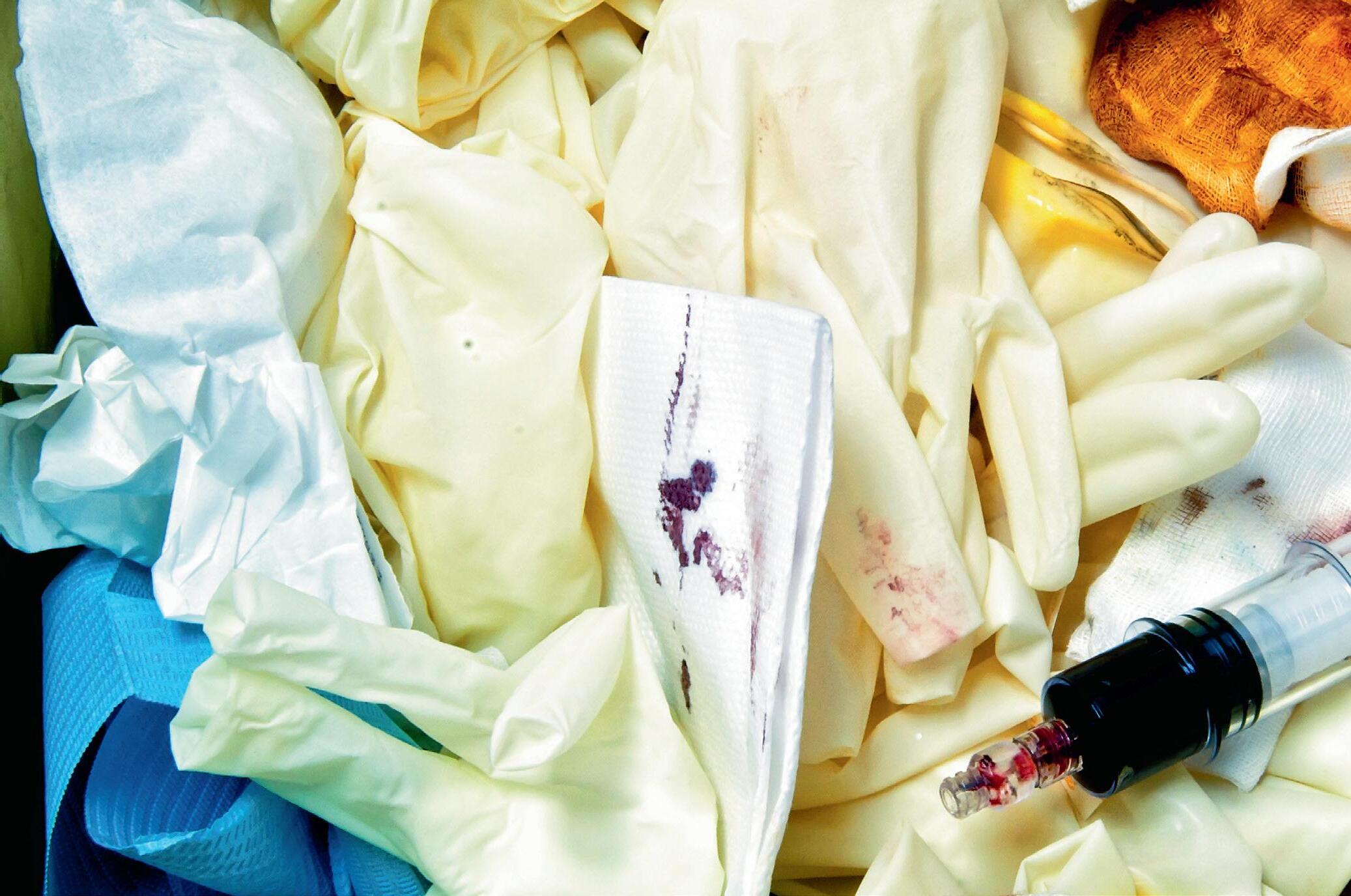
The initiative also improved health outcomes. By ensuring gloves were only used for isolated, critical functions — instead of blanket usage across all patient activity — the ‘Gloves Off’ initiative reduced the transmission of HAIs.
Despite its ambitious quest to eventually become net zero, the NHS has taken a “mindful” approach to sustainability and encourages others to do the same. A blanket ban on plastic straws, for example, would not be realistic, as they may be needed by people with dysphagia. Instead, practitioners could direct their procurement leads towards “single use plastic reduction pledges”, it suggests.
Seeing patients digitally, wherever possible, can also make a meaningful difference to emissions output, without compromising patient outcomes.
Research3 shows that telehealth can reduce a medical practice’s carbon footprint by 0.70–372 kg CO2e per consultation, largely because of the reduction in transport usage.
Telehealth also has a number of healthcare advantages, including reduced infection transmission, higher patient reach, and real-time assistance with emergencies or complex presentations.
No-shows are also less common in the digital realm, meaning fewer patients are leaving their symptoms unchecked. After adopting telehealth, one paediatric clinic saw no-shows drop from 36% percent to 7.9–18% per month4
In a similar vein, practitioners could adopt — or direct their procurement leads to — electronic health records. These drastically reduce paper waste and have been shown to standardise and improve care5
Practitioners who have no option to provide care via telehealth — and little influence over purchasing decisions — may feel powerless to make a meaningful change through their work.
However, the former Director of Emergency Medicine for Royal North Shore Hospital in Sydney, Dr Robert Day, says that even junior-level staff can make a difference.
“Staff who express their interest in environmentally friendly alternatives can often inspire their managers to pursue different approaches. Royal North Shore recently updated the way it disposes of waste in clinical and non-clinical areas using different marked bins, an idea which came from a junior staff member. It now has more of its waste diverted from landfills.
“The focus of equipment procurers is often on reducing costs and maintaining best practice in infection prevention, so it might be that environmental consequences haven’t been a priority. Reminders from staff could re-direct their focus — so it is always worth a try.”
A challenge is the trade-off that sometimes exists between cost-saving and environmental sustainability; however, cost-saving does not always win, Day highlights.
“Generally the cost of single use disposable equipment is cheaper than the cost of sterilising reusable equipment and hospitals have gone down this path. If the environmental effects of the extra waste had to be taken into account it might lead to a switch in their approach.”

Those who are not successful in effecting change within their workplace could follow the NHS’s guidelines. It recommends taking greener transport to work, discussing climate change with colleagues or sharing sustainability information on social media to inspire change from others.
While individual measures may seem trivial, the NHS’s statistics are a reminder of how powerful they can be when multiplied throughout the healthcare workforce.
1. https://www.bmj.com/content/362/bmj.k4032

2. https://www.nursingtimes.net/news/hospital/glove-crackdown-saves-trust-90k-andreduces-waste-07-08-2019/
3. https://pubmed.ncbi.nlm.nih.gov/33791483/
4. https://pubmed.ncbi.nlm.nih.gov/33887684/
5. https://pubmed.ncbi.nlm.nih.gov/34787585/
The spread of infection in the healthcare sector is an ongoing challenge for operators, so what can providers do to minimise risk and protect patients, staff and visitors?
Within healthcare settings such as hospitals and care homes, MRSA and Clostridium difficile are among the most common infections and an outbreak can place additional strain on stretched staff and resources.
It’s clear, therefore, that proper surface cleaning and disinfection routines are key to controlling infection with a starting point being high-touch surfaces that can harbour bacteria.
While the scale of surface cleaning differs between low-risk (foyers, waiting rooms, offices and corridors) and high-risk (operating theatres and intensive care wards) areas, it’s vital that cleaning program managers do not become complacent.
Many healthcare providers have identified the need to educate staff at every level — not only those responsible for cleaning — of the importance of hand hygiene and to raise awareness of infection control.
That’s because seemingly innocuous equipment shared by staff such as keyboards, stethoscopes and ultrasound probes cannot be underestimated as they are a major cause of cross contamination and should all be wiped down regularly with disinfectant. The same is true of chair arms and seats in waiting areas.
Meanwhile, call bells, grab rails, door handles and opening buttons/panels are touched countless times each day and are among the most likely surfaces to transmit infection.
And in all toilet areas, from wards to public washrooms, it’s essential that high-touch surfaces including taps, flush handles, dispensers, hand dryers and door handles are not neglected due to a focus on obvious areas such as toilet bowls, sinks and floors.
Despite the site operator’s responsibility for overall management of on-site hygiene, it’s important to remind staff, patients, visitors and contractors to take ownership of their wellbeing.
As well as installing and regularly filling soap, towel and sanitiser dispensers, managers should display positive messaging to reinforce the serious consequences of infection on healthcare provision and encourage use of hand hygiene systems.
Of course, dispensers themselves can harbour bacteria as they are always touched when hands are dirty, and as well as installing automatic touch-free systems operators can ensure janitors regularly wipe these down as part of their cleaning routine.
On this subject, cleaners are a vital part of the overall healthcare team and, at a time when janitorial staff retention is notoriously difficult, facilities and services managers should empower them and give them proper tools for the job.
For example, dispensers should be quick and easy to refill, with simple features such

as viewing windows for a quick product level check making a big difference.
Managers can also make use of IoT technology to assist cleaning staff, especially those working on larger hospital sites for whom walking between hand sanitiser dispensers only to find that the systems are still full may be monotonous and dispiriting. The latest internet-connected systems can display remaining product level for multiple dispensers via an online portal or smart device app, meaning personnel are able to ensure dispensers are full at all times and do not need to be reminded to refill. Not only does this increase efficiency and ensure hand hygiene solutions are always available, the janitor is empowered and feels a greater sense of value in their job.
SEKO is trusted worldwide for its professional cleaning and hygiene equipment and supplies the global healthcare sector with a wide range of infection-control systems including soap, paper and sanitiser dispensers, chemical dilution systems and spray stations.








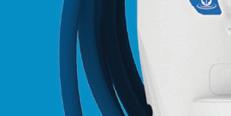
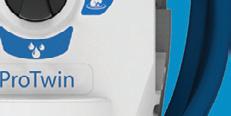
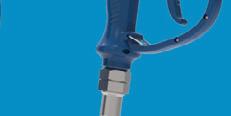










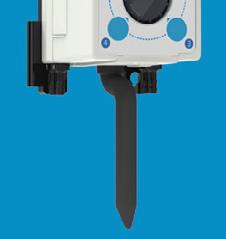


Eight to nine people die by suicide every day. Latest data released from the Australian Bureau of Statistics (ABS) has revealed 3144 Australians died by suicide in 2021, compared to 3139 in 2020.
There were 2358 male suicides (18.2 deaths per 100,000) and 786 female suicide deaths (6.1 per 100,000). Suicide was the 15th leading cause of death overall in 2021. Suicide was the most common cause of death for young people aged 15–24 years. In 2021, 219 Aboriginal and Torres Strait Islander people died by suicide.
Suicide Prevention Australia CEO Nieves Murray said, “Suicide rates remained stubbornly high in 2021. One death by suicide is one too many and more needs to be done to turn the trend towards zero.
“Data is incredibly important in suicide prevention. It helps inform how we approach suicide prevention and influences service and program delivery. Access to causes of death data is part of the picture, but we also need more timely data on suicide attempts to better understand and respond to distress in our communities.

Key statistics:
• The median age of death by suicide was 44.8 years.
• The suicide rate for males decreased by 2.3% and the suicide rate for females increased by 5%. Consistent with previous years, males are around three times more likely to die by suicide than females.
• The median age of death by suicide of Aboriginal and Torres Strait Islander peoples was 30.2 years, more than a
decade younger than the median age of death by suicide for the general population of 44.8 years. The gap is widening compared to last year (31.3 vs 43.5).
Risk factors include: almost 90% of people who died by suicide had at least one risk factor reported; psychosocial risk factors were the most commonly reported risk factor and were present in almost two-thirds of deaths of people who died by suicide; mental and behavioural disorders were present in almost 63% of deaths of people who died by suicide; people who died by suicide had an average of three to four risk factors mentioned.
Murray continued, “The ABS Causes of Death data is 10–22 months old and cannot be our only indicator in suicide prevention.
“We’re seeing worrying indications from the Australian Institute of Health and Welfare (AIHW) Suicide and Self-harm Monitoring System.
“In NSW and Victoria, the total number of people who died by suicide in July 2022 was higher than at the same time in the last three years. Only NSW and Victoria publicly report recent deaths by suicide and when these figures are combined the two states represent 57% of the national population.
“Our annual State of the Nation report released last month revealed 70% of Australians have experienced elevated distress beyond their normal levels compared with this time last year.
“Our sector is working harder than ever before with 88% of providers reporting an increase in demand over the past 12 months.
“We are at a critical juncture for suicide prevention. Research shows it’s two to three years after a natural or economic disaster that suicide rates can increase. We saw this with increases to suicide rates during the recessions of the 1980s and 1990s, and we’ve seen it after bushfires, Cyclone Yasi and the Christchurch earthquake.
“Now, we’re emerging from a global pandemic, the rising cost of living and mortgages are set to increase financial, housing and relationship stress, we’re facing geo-political tensions and compounding environmental disasters. It’s critical the Australian Government urgently focuses on suicide prevention to keep suicide rates from rising during this challenging time.
“We are calling on the Australian Government to urgently consider a National Suicide Prevention Act as a matter of priority.
“Since the introduction of the 2006 Basic Act for Suicide Prevention in Japan, suicide deaths have fallen by about 40% in the past 15 years and the number of suicides nationwide hit a 40-year low in 2019.
“An Act would ensure that every government department, whether it’s housing, education, social security or health, must look at their policies and priorities through a suicide prevention lens. This is a critical step in protecting our community at a time when it’s needed most.
“It’s important to note that each number presented in this data represents a life lost which was valued and will be missed.”
If you or someone you know is struggling with mental health or suicidal thoughts, call Lifeline on 131 114 or Beyond Blue on 1300 224 636.
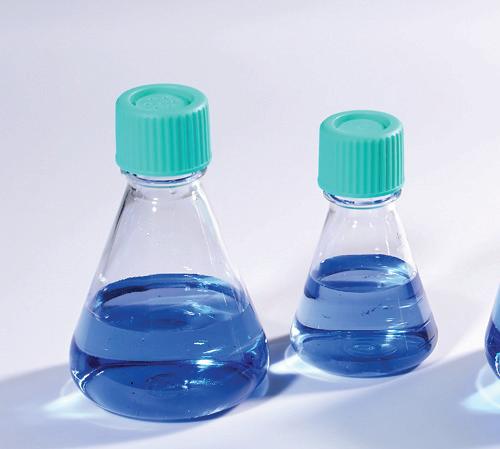

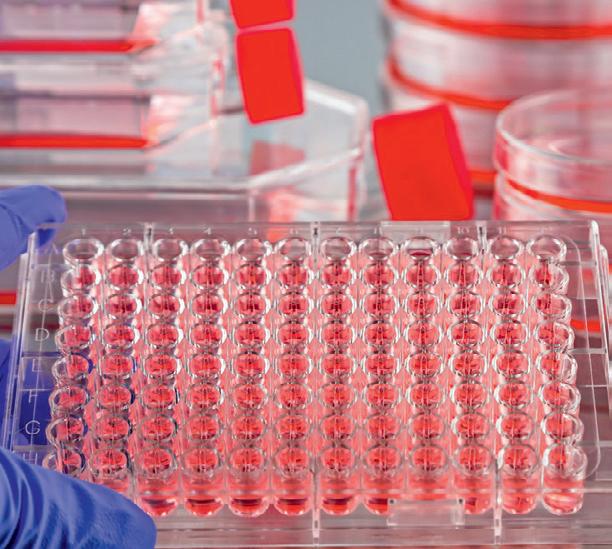




Let us help you get your storage right the first time.
IntraSpace designs high-quality, compliant retro-fits, upgrades or new fitouts that function seamlessly within the everyday demands of your space.

We work with public and private hospitals, medical and research facilities of all sizes. We help you to achieve sterile stock storage standards in compliance with Australian Standard AS4187, and to transform your workspace into an efficient, productive and pleasant environment.
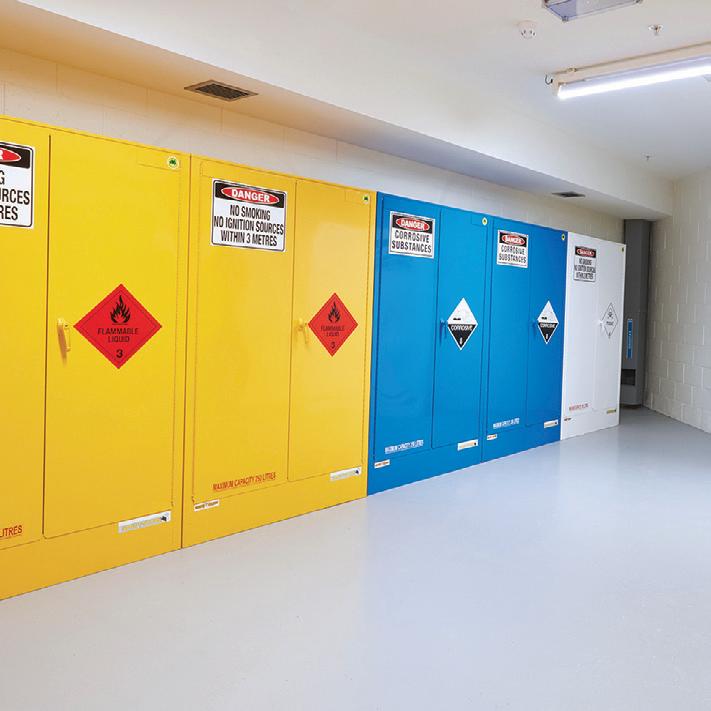




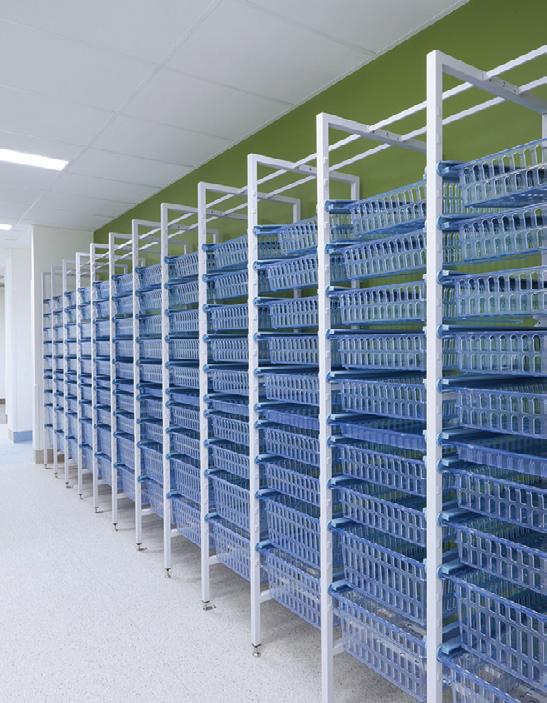
Take the initiative in the fight against infection!
\ Mobile & Static Shelving Specialists

\ AS4187 Site Audit & Reviews
\ AS4187 Room Design
\ Clinical Storage Fitouts

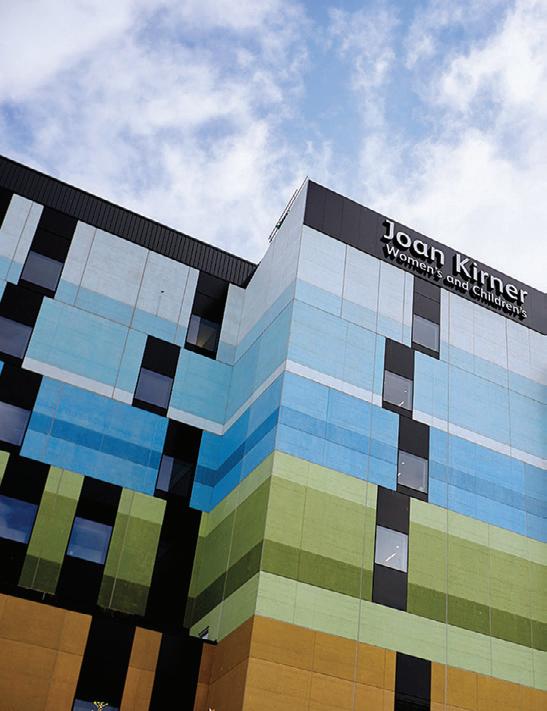
\ Sterile Shelving & Trolleys

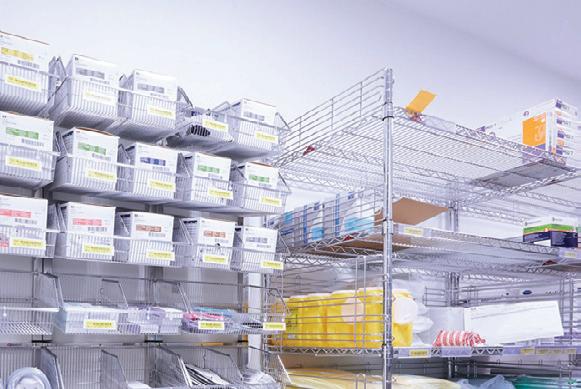



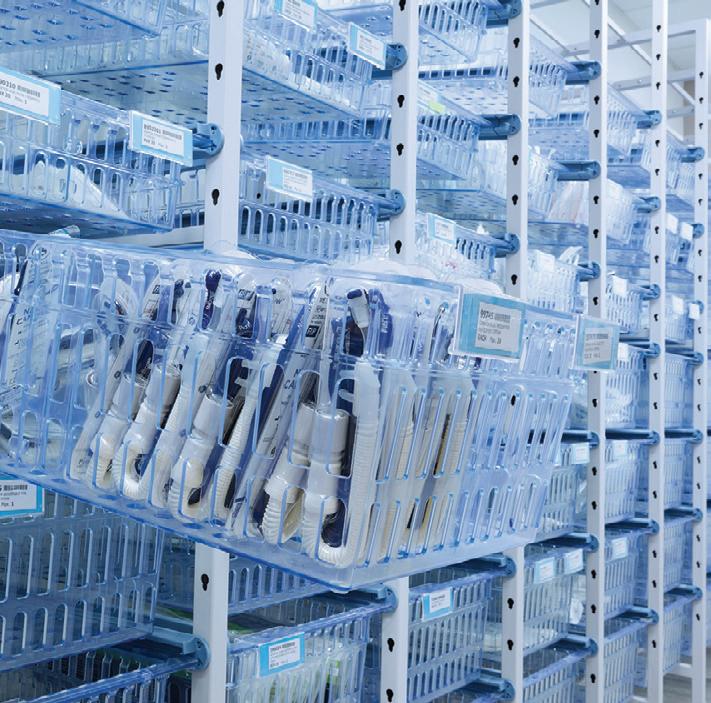




\ Office Furniture & Seating
\ Lockers & Safe Storage
\ Contemporary Storage Furniture
Sydney surgeon and bionics innovator Dr Joe Dusseldorp talks about his journey, passion and how his discovery could help transform lives of those living with cerebral palsy.
The cerebral palsy prevalence rate has dropped by 25% 1 in Australia and Europe, but this life-long condition continues to remain the most common motor disability in childhood.

In Australia, one child is born with cerebral palsy every 20 hours, with the condition affecting at least 34,000 people in Australia and more than 17 million globally 2 Spasticity, in people with cerebral palsy, is a condition in which muscles stiffen or tighten, preventing regular fluid movement, which causes muscles to contract and tighten, said reconstructive plastic surgeon Dr Joe Dusseldorp noting that the most popular treatment involves receiving painful, deep injections of botox every three to four months over a patient’s life.
“Knowing this, the Syncricity team and I asked the question, ‘What if we could just inject something tiny, send signals to it to block spasticity and then turn it on and off like a dimmer switch?’. It was this moment that led us on a mission to transform the lives of people living with excessive rigidity in muscles,” Dusseldorp said.
Dusseldorp, along with his team at Syncricity, aims to accomplish this mission by developing life-changing micro-implants set to control spasticity and pain. These micro-implants “do not require invasive surgery, will deliver real-time controllable relief from muscle spasticity and return
functional muscle control to people with traumatic brain and spinal injuries — reducing pain, increasing limb mobility and independence, removing the need for repeated botox injections or permanent nerve severing surgery”, Dusseldorp said.
The project recently bagged the National Bionics Innovation Prize (NBIP) in the Bionics Challenge 2022, a competition designed to fast-track bionic healthcare solutions to market, to help change the lives of those impacted by road trauma, related disabilities and chronic disease.
Hosted by Bionics Queensland and delivered in partnership with the Motor Accident Insurance Commission, the
Bionics Challenge awarded $200,000 in major category prizes and a total of $40,000 to a suite of promising, early-stage bionic innovation teams. In addition, a $30,000 NBIP plus expert advice on funds attraction, awarded courtesy of Morgans Financial Limited.
Other winners include: a UQ Queensland Brain Institute-led project to fast-track closed-loop neuromodulation treatments for those impacted by traumatic brain injury; a Mater Research project delivering smart watch-enabled monitoring of stress-induced epilepsy; Griffith University designed smart garments for use in rehabilitation; neurobionic and e-stimulation treatments for stroke rehabilitation and spinal cord injury; and a Griffith University student’s new-to-the-world design for a brain-computer-interfaced bionic jaw.
Dr Robyn Stokes, CEO, Bionics Queensland, and architect of the Bionics Challenge said, “Australia’s reputation for bionic innovation has not dimmed since the groundbreaking work of Professor Graeme Clarke on the multi-channel cochlear implant. We’ve seen Control Bionics, Audeara and others achieve market success and Synchron, Bivacor, Bionic Vision Technologies and Brisbanebased bionic voice box inventor Laronix are now accelerating their global profile. Australia has the potential to become a ‘go to’ location for first in-human trials of bionic implants, devices and treatments, not just pharma and cell therapy trials.
“Our Bionics Challenge sees start-ups, R&D leaders and everyday innovators work ‘head to head’ with patients and end users of bionic devices to jump-start new discoveries and improve on existing solutions to transform lives.”
Like most innovators, Dusseldorp’s journey so far hasn’t been without challenges. “In getting this far with the development of the implants — it’s been tough. First of all, I had to learn about how medical devices are actually developed and make the right connections. I realised pretty quickly I couldn’t do it all on my own.
“Developing products is expensive, especially medical ones, so I had to learn how to pitch the idea well to attract prize funding, as well as dig deep into my own pocket. Maintaining a full surgical schedule while investing time into this startup and spending time with my family has been a difficult juggling act. We’ve also had to overcome challenges in the design and testing of the technology,” he said.
Dusseldorp didn’t always know he wanted to be a surgeon but accidentally discovering his family history injected a strong sense of motivation in him.
“Discovering my family’s deep-rooted history in medicine when I was 21 years old was the catalyst that launched me into the medical world. I immediately felt a strong connection to my ancestors, who all showed resilience and compassion in their
community and hope to leave a legacy for future generations. It gave me even more of a reason to pursue my passion for medicine...
“While I was in medical school I happened upon an amazing surgery where plastic surgeons can sculpt an ear from cartilage for children born without one due to microtia. I was hooked and decided to track down the surgeon who conceived the surgery and train with her until I could bring the technique back to Australia. Since then, we’ve brought in 3D-printing techniques to build custom prosthetic implants to improve the outcomes even further.
“In the early days I also saw how neurostimulation can open up whole new ways of treating conditions that were previously essentially untreatable. I resolved to keep applying the principles of innovation to medical practice and do what I could to push the boundaries of what’s possible,” he said.
The funding from Bionics Queensland through the Bionics Challenge and the mentoring from advisors on the commercialisation of bionic-medtech devices will help Syncricity take their device to market. It will also help the company fund further testing required to make design modifications and continue the development of our innovation to improve patient health outcomes.
“We want to optimise the parameters of the nerve block signal so that we can get to a sufficiently tiny wireless device that is easy to implant and will require a reasonable level of energy transfer to operate. Completion of short duration in-human experiments is a key upcoming milestone for us,” Dusseldorp said.
The global bionic devices market is expected to grow by CAGR of 9.92% and
reach US$8.68 billion by 20273, according to the latest report by Reportlinker.com.
Rise in chronic conditions, growth in heart disease rates worldwide, an increase in prevalence of hearing loss and surge in healthcare costs are some of the key drivers for growth in the sector. “However, the high cost of bionic implant devices and the unsure reimbursement framework in various parts of the globe are the factors that are expected to restrain the market,” according to a statement by Reportlinker.com.
The possibilities are endless for the future of bionic devices and innovation, Dusseldorp said.
“As we’ve seen in the Bionics Challenge, aspiring innovators are able to push the boundaries when it comes to revolutionising bionic technology, and with the support from Bionics Queensland, we’re able to propel these breakthrough healthcare products to market.
“My personal interests are in the areas of 3D bioprinting, gene therapy and obviously neuro-stimulation. I think they have some of the greatest immediate opportunities for successful developments and we’ll see some of that come to fruition in the next five years. The common thread is dedicated people not just settling for the status quo. If we look instead to collaborations between clinicians, scientists and engineers to tackle problems in ways that may be unproven and currently only borderline feasible we have the potential for hugely positive impact for patients,” Dusseldorp concluded.
1. https://onlinelibrary.wiley.com/doi/10.1111/ dmcn.15346<br>2. https://cerebralpalsy.org.au/ourresearch/about-cerebral-palsy/what-is-cerebral-palsy/ facts-about-cerebral-palsy/<br>3. Bionic Devices Market, Global Forecast 2023-2027, Industry Trends, Growth, Impact of Inflation, Opportunity Company Analysis - https://www.reportlinker.com/p06381975/?utm_ source=GNW
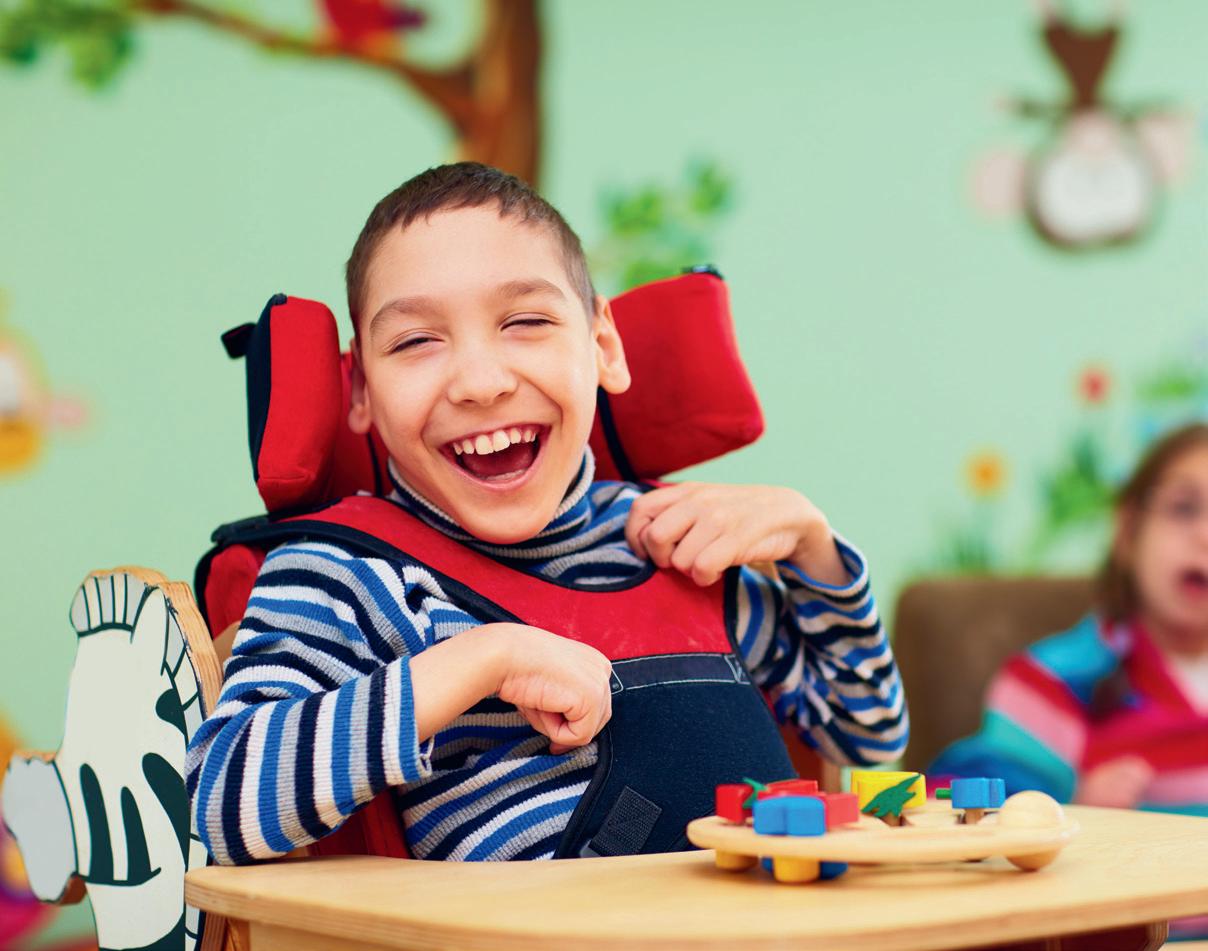

The O2matic PRO is a novel medical device that brings oxygen treatment to a new level. The technology was developed in close cooperation with four hospitals in Denmark and is demonstrated to quickly stabilise arterial oxygen saturation in patients suffering from conditions that can lead to respiratory distress(1,2)
The O2matic PRO solves the issue of the labour-intensive titration of oxygen flow rates associated with the current manual apparatus. Oxygen flow is automatically titrated responding to real-time arterial oxygen saturation (SpO2) as measured by pulse oximetry. The O2matic PRO controls the dose of oxygen administered to the patient to maintain the SpO2 within a prescribed target range; hence reducing patient–nurse exposure times.
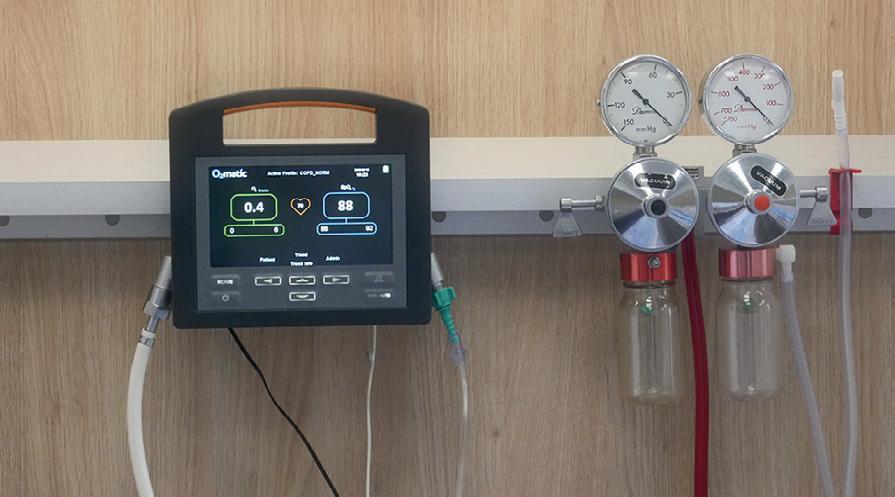
Supplemental oxygen therapy is central to the treatment of respiratory insufficiency caused by a variety of acute and chronic diseases. A clinical study conducted with the use of the O2matic PRO on patients suffering chronic pulmonary diseases demonstrated its ability to keep oxygen saturation within a prescribed bracket with the use of its unique algorithm(1). It shows that the O2matic PRO maintains the oxygen saturation within the specified range 85% of the time, in contrast to 47% achieved by the conventional practice, while decreasing episodes of hypoxemia(1). Another study conducted on admitted patients of the 2020 global pandemic demonstrated similar results. Using the O2matic PRO, medical staff were able to maintain patient oxygen saturation within the prescribed bracket 83% of the time(2)
Key benefits of closed-loop oxygen therapy:
• Improving patients’ time within the target SpO2 levels(1,2) hence reducing mortality rates(3)
• Reducing oxygen consumption by up to 50% (4)
• Faster weaning from oxygen and reducing length of stay (5)
• Reduction in costs of care (6) and patient–nurse exposure times. Automatic closed-loop oxygen therapy has been the subject of many more clinical studies with promising outcomes. To request a summary of clinical studies and technical features, please visit our website www.boc.com.au/o2matic.


The O2matic PRO maintains the oxygen saturation within the specified range 85% of the time in contrast to 47% achieved by the conventional practice in patients with chronic respiratory disease(1)
References
1. Automated oxygen control with O2matic ® during admission with exacerbation of COPD. Hansen, Ejvind Frausing, et al. 13, s.l. : International Journal of Chronic Obstructive Pulmonary Disease, 2018, Vol. 14, pp. 3997-4003. 2. Automatic oxygen titration with O2matic® to patients admitted with COVID-19 and hypoxemic respiratory failure. Hansen, Ejvind Frausing, et al. 1, s.l. : European Clinical Respiratory Journal, 2020, Vol. 7. 3. Mortality and morbidity in acutely ill adults treated with liberal versus conservative oxygen therapy (IOTA): a systematic review and meta-analysis. Derek K, Chu, et al. 391(10131), s.l. : Lancet, 2018, Vol. 28, pp. 1693-1705. 4. Autonomous control of inspired oxygen concentration during mechanical ventilation of the critically injured trauma patient. Jay A, Johannigman, et al. 2, s.l. : J Trauma, Feb 2009, Vol. 66, pp. 386-392. 5. Automatic versus Manual Oxygen Titration in Patients Requiring Supplemental Oxygen in the Hospital: A Systematic Review and Meta-Analysis. MH, Denault, et al. 98, s.l. : Respiration; International Review of Thoracic Diseases, 2019, Vol. 19, pp. 178-188. 6. Cost-effectiveness of FreeO2 in patients with chronic obstructive pulmonary disease hospitalised for acute exacerbations: analysis of a pilot study in Quebec. TG, Poder, et al. 1, s.l. : BMJ Open, Jan 2018, 8(1):e018835.
BOC: Living healthcare www.boc.com.au
»
For more information please call 1800 050 999 | email healthcare@boc.com or visit www.boc.com.au/o2matic
A new clinical trial platform, the Brain-POP (brain perioperative), will enable doctors to precisely see the effect of a new drug therapy on a patient’s brain cancer, by comparing tumour samples before and after treatment.
One Australian is diagnosed with brain cancer every five hours and more children die from brain cancer in Australia than any other disease. Survival rates for brain cancer have barely shifted in three decades, with 80% of patients diagnosed dying within five years.
Led by The Brain Cancer Centre and research partners across Melbourne’s biomedical precinct and supported by the Victorian Government, the new trial program will deliver innovative, perioperative clinical trials with paediatric, adolescent and adult patients that will help researchers to create a holistic picture of brain cancer treatment.
Dr Jim Whittle, Laboratory Head at The Brain Cancer Centre/WEHI, and medical oncologist at the Peter MacCallum Cancer Centre and the RMH, said Brain-POP would begin to address the critical lack of trial options available to brain cancer patients and enable research discoveries to be rapidly translated into the clinic.

“The Brain-POP platform offers a unique approach to help us test whether a drug actually gets into the brain and find out if it’s having the effect we want,” Whittle said.

“This is what we need to invest our efforts into — the most powerful and promising therapies, stopping the development of those that don’t work and delivering far better outcomes for brain cancer patients.”
Professor Kate Drummond, Director of Neurosurgery at The Royal Melbourne Hospital, said the collaborative and integrated trial program would draw on extensive expertise from researchers and clinicians across Melbourne’s biomedical precinct.
The Victorian Government has committed $16 million in funding to support Brain-POP.
Brain-POP is said to be the first perioperative or ‘Window of Opportunity’ clinical trial program for brain cancer, where biopsies are taken before and after treatment to provide critical information on drug activity through small, well-designed studies that guide further development.
This approach is often used in clinical trials for other cancers such as breast cancer, melanoma or leukaemia but has not been available for brain cancer because of the delicate surgical challenges involved.
The first clinical trial (NCT05577416) to run through the new Brain-POP platform has begun recruitment and focuses on patients with low-grade glioma, a type of slow-growing brain tumour.
Newly diagnosed patients will receive advanced diagnostic testing and samples of tumours will be taken from trial participants before and after treatment with a new drug
therapy. Blood samples will also be used in the trial, to investigate less intrusive ways of measuring the effect of treatments. The results will be used to personalise treatment, enabling doctors to be more targeted with available therapies for brain cancer patients.
Whittle said the Brain-POP program would create a new standard of care, over time enabling every brain cancer patient at treating hospitals in Victoria to access a clinical trial during the course of their disease.
“We hope that by demonstrating the effectiveness of our unique trial method, we can scale Brain-POP nationally so that every patient diagnosed in Australia will in future have access to this new standard of care,” he said. The Brain Cancer Centre’s collaborating partners are: Monash University, Murdoch Children’s Research Institute, Peter MacCallum Cancer Centre, The Royal Children’s Hospital, The Royal Melbourne Hospital, The University of Queensland, The VCCC Alliance and WEHI.
Image credit: WEHI

Why there’s no ‘one size fits all’ solution, and how you can create a functional space that supports your facility.
Every facility is unique. Despite common standards for design inclusions and safe practice, there’s a veritable ‘laundry list’ of factors that influence how our dirty utility room (DUR) space functions each day. Everything from patient care requirements, through to your staff needs, as well as the physical layout and design of your facility.
Not only this, but with the ongoing need for vigilance regarding cross-contamination and infection prevention, the demand for a high standard in the DUR is of paramount concern to every health and aged care facility.
In short, there’s no ‘one size fits all’ approach for DUR design.
That’s why Malmet, with a long industry track record, offers custom solutions tailored to your facility size and layout, patient care needs, and your unique workflow. With a range of dedicated and dual purpose washer disinfectors, we can work with you to design a space and determine the ideal equipment for your facility’s DUR.
The option of a selection of two or more dedicated washer disinfectors allows greater flexibility for your workflow.
The ES-D washer disinfector provides a dedicated option for decontaminating bedpans and urine bottles. If utensils
processing is required, the ES-D can be paired together with either a top or front loading utensil washer disinfector to ensure dedicated options are available for a variety of reusable devices, with each machine offering programme options specific to the items your staff use everyday.
With dedicated machines, your facility can take advantage of optimised processing speeds, as well as the flexibility of specialised machines adding functionality between wards or work spaces.
If your facility is looking for dedicated processing and flexibility across workspaces or wards, a unique combination of washer disinfectors may be an ideal option.
Not every facility has the luxury of additional space in the DUR, so if you’re looking to maximise limited available space, the dual purpose WDS series washer disinfector is a potential solution. As a large capacity machine, your DUR throughput capacity will also be increased — so your facility can keep up with the demands of a busy patient load.
The WDS is equipped with unique programmes to cater for bedpans, urine bottles or utensils. Device-specific programmes cater for each category of item, which ensures that ward equipment is processed according to its type. Simply choose the appropriate cycle for the items inside (i.e. bedpans and bottles, utensils) and these will be processed accordingly. And with the added benefit of the self-decontamination
function, you can be assured that the machine will be cleaned internally as items inside are processed — a reassuring standard for all Malmet washer disinfectors. For the facility that is looking for efficiency, increased throughput capacity and optimised DUR space, the WDS is an effective dual purpose machine.
We understand that infection prevention is essential to every facility’s operations, which is why we design with your needs in mind. Every Malmet washer disinfector is designed to provide high level disinfection that ensures compliance with the relevant requirements in the National Safety and Quality Health Service (NSQHS) Standard for Preventing and Controlling HealthcareAcquired Infection.
Malmet washer disinfectors not only clean and disinfect the reusable devices placed inside, you can also rest assured that our washer disinfectors will perform a selfdecontamination on every cycle. So whatever machine configuration you choose, there is no risk of cross-contamination between devices, with clean machines every cycle.
We’ve walked countless hospital and healthcare hallways over our 50+ years in business, so whatever your DUR needs, we can bring experienced, creative ideas that support the highest quality patient care in your setting.
» For more information: https://www.malmet.com.au/washer-disinfectors Malmet www.malmet.com.au


In February 2021, with the COVID-19 pandemic raging, the Australian Cyber Security Centre (ACSC) issued its 2020 Health Sector Snapshot, saying, “COVID-19 has fundamentally changed the cyber threat landscape for the health sector, with malicious actors increasingly targeting and compromising health networks, which are already under pressure in a pandemic operating environment.”
Taking into account the chronic understaffing currently affecting Australian hospitals, it
has never been more essential for health providers to ensure their networks are protected from malicious cyber actors who wish to disrupt essential services or compromise business-critical systems to profit from ransom.
The healthcare sector is not alone among critical organisations experiencing ransomware attacks. According to Claroty’s report, The Global State of Industrial Cybersecurity 2021: Resilience Amid Disruption, 80% of critical infrastructure

organisations worldwide experienced a ransomware attack during the year.
Any attack on critical infrastructure can result in public disruption or even lifethreatening consequences, but healthcare organisations are particularly vulnerable. A vital life-saving procedure might be delayed, monitoring equipment might fail to report a change in vital signs or transport of a seriously ill patient might be disrupted.
The ACSC report describes a case in Germany where a ransomware attack disrupted a healthcare organisation’s computer systems and, as a result, someone being transported to hospital by ambulance was rerouted to a different hospital 30 kilometres away. They died en route.
In 2021, the Ponemon Institute surveyed 597 IT and OT security professionals to understand how COVID-19 had impacted the way healthcare delivery organisations protect patient care and patient information from increasingly virulent cyber attacks, especially ransomware. Almost one in four healthcare providers reported an increase in mortality rate due to ransomware.
The findings were described as “an urgent wake-up call for the healthcare industry to transform its cybersecurity and third-party risk programs or jeopardise patient lives”.

Healthcare organisations are a primary target for cybercriminals. So what can security teams do to counter these threats and keep their organisations and their patients safe?
An increasing source of vulnerabilities is the Internet of Medical Things (IoMT), referring to the many devices that deliver medications, aid in diagnosis and monitor patients, which are becoming increasingly connected to the internet. Many of these devices are known to have vulnerabilities, but these are difficult, or impossible, to patch. Reliance on old and unsupported versions of Windows is also commonplace.
A recent report from Cynerio found 53% of connected medical and other IoT devices in hospitals had a known critical vulnerability. It also found a third of bedside healthcare IoT devices, which patients depend on for optimal health outcomes, had a known critical risk.
Poor security governance also exacerbates these risks. IoMT devices are rarely part of the overall security governance process and in many cases fall outside the responsibilities of the security team, so are not audited for issues such as weak passwords or default credentials.
IoMT devices are now generally connected to each other and hospital IT systems over a common physical network, but little use is made of network segmentation, which would make it more difficult for an attacker to gain access.
All these issues need to be addressed urgently when the health system is already stretched to its limits by COVID-19. So what can be done? Here are some suggestions that will provide significant security boosts with minimal effort.
1. Identify all IoMT devices and add them to the security governance process. This requires purpose-built technology because such devices are often invisible to traditional security tools. If a comprehensive audit is not possible, the most critical devices and processes should at least be prioritised.
2. Identify and remove as many vulnerabilities as possible by patching. Also, implement other tools such as firewalls and access control lists as a second line of defence.
3. Implement network segmentation. Ideally this would be done physically; however, this can take considerable time. As a strong alternative, virtual segmentation can be implemented much faster and also enables suspicious activity to be detected and remediated more easily. In addition, implementing policies that govern network access for certain users, devices and sessions will limit unnecessary, and possibly malicious, connectivity.
4. Monitor all IoMT devices for evidence of malicious activity. Specialised security
tools are capable of constantly monitoring the IoMT network in the background and automatically flagging any suspicious activity. By their nature, these tools are far faster and more effective at threat mitigation than any human is capable of. Australian government bodies offer several resources to help healthcare organisations beef up their cybersecurity. Some key resources include two reports by the Therapeutic Goods Administration, Medical device cyber security guidance for industry and Medical device cyber security information for users.
All Australian healthcare providers must remember that cyber safety equals patient safety. Security professionals in the healthcare sector should take the escalating threat landscape very seriously.
It’s essential that hospitals get the investment required to give their security teams better visibility, and therefore better ability to protect against attacks. This minimises the possibility that lives could be lost due to medical equipment impacted by ransomware or other threats.
“IoMT devices are now generally connected to each other and hospital IT systems over a common physical network, but little use is made of network segmentation, which would make it more difficult for an attacker to gain access.”
In it for the long term — how hospitals can invest sustainably in assets and equipment.

In a sector dedicated to the long term health of our nation, sustainability is an important priority. Hospitals and healthcare providers are increasingly focussing on building sustainability into every aspect of the way they deliver care, for a healthier future for Australia.
A key sustainability focus is the way in which providers purchase and use assets and equipment — from ICT hardware to operating tables and life support systems. These are a significant investment, and the way you procure and manage them contributes to the overall sustainability of your healthcare facility.

NSW Health recently published its 20 year Health Infrastructure Strategy, which looks at how the service will meet the changing health needs of the communities it serves. The strategy recognises the importance of smarter investment in and utilisation of assets to achieve its ‘vision for the future health system’.
The two top priorities that NSW Health identifies when it comes to investment decisions are:
• Maintain existing assets
• Make better use of existing assets
These will ‘enable a greater range, and more sustainable options to shape the future health system’.
Hospitals and health providers will almost certainly identify with and share these goals. They also recognise that there are, at present, hurdles that stand between them and achieving these priorities, including interoperabilty, equipment repairs and ‘downtime’, not knowing where equipment is and staff skills in using equipment.
Three steps to investing more sustainably in assets and equipment
When it comes to hospital equipment, not all options are created equal, and the decisions made now can affect the sustainability profile of your organisation for years to come.
It’s important to know the environmental standards under which manufacturers design, make and distribute their products. Also its life expectancy which impacts how frequently you’ll have to replace it. Some equipment is designed for a life of five, ten or even up to twelve years.
Of course, it’s not just the equipment but the consumables too, such as anaesthetic gases. But some suppliers recognise and are addressing this issue.
Making best use of your assets means ensuring that they are always available for use. Tracking, maintenance and repairs are effective tools in the fight for environmental sustainability.
Lost or stolen equipment costs the health sector millions of dollars and staff spend up to 10% of their time searching for it. Real-time tracking reduces this expense and ensures maximum usage and benefit. It’s important to have equipment regularly serviced to protect against failure taking it out of action, and to have access to a rapid repair service if something does go wrong, so that you can get equipment back into working order quickly.
Being sustainable is not just about what you do, but about your supply chain. Your suppliers’ operations have a knock-on impact on the hospital’s overall long-term sustainability. It’s good to ask all your equipment suppliers about their practices, so that you are not unknowingly supporting forced labour, unethical practices or non-sustainable environmental outcomes.
Sustainability is at the heart of a forward looking health service. Your choice of equipment, selection of supplier and management of your assets very much play into your sustainability profile. As NSW Health recognises, meeting future needs is based on investing strategically and in maintaining and making the best possible use of assets.
Federated learning — a distributed machine learning artificial intelligence approach — has been used in one research study to help identify malignant brain tumours.
Intel Labs and the Perelman School of Medicine at the University of Pennsylvania (Penn Medicine) have completed a joint research study using federated learning — a distributed machine learning (ML) artificial intelligence (AI) approach — to help international healthcare and research institutions identify malignant brain tumours.
The medical federated learning study, published in Nature Communications, featured a global dataset from 71 institutions across six continents and demonstrated the ability to improve brain tumour detection by 33%.
In 2020, Intel and Penn Medicine announced the agreement to cooperate and use federated learning to improve tumour detection and improve treatment outcomes of a rare form of cancer called glioblastoma (GBM) — the most common and fatal adult brain tumour with a median survival of just 14 months after standard treatment. While treatment options have expanded over the past 20 years, there has not been an improvement in overall survival rates.

A new AI software platform called Federated Tumor Segmentation (FeTS) was used by radiologists to determine the boundary of a tumour and improve the identification of the operable region of tumours or ‘tumour core’. Radiologists annotated their data and used open federated learning (OpenFL), an open source framework for training machine learning algorithms, to run the federated

training. The platform was trained on 3.7 million images from 6314 GBM patients across six continents — the largest brain tumour dataset to date.
Jason Martin, principal engineer at Intel Labs, said, “Federated learning has tremendous potential across numerous domains, particularly within health care, as shown by our research with Penn Medicine. Its ability to protect sensitive information and data opens the door for future studies and collaboration, especially in cases where datasets would otherwise be inaccessible.”
Data accessibility has long been an issue in health care due to state and national data privacy laws in the US, including the Health Insurance Portability and Accountability Act (HIPAA). This has made medical research and data sharing at scale almost impossible to achieve without compromising patient health information. Intel’s federated learning hardware and software comply with data privacy concerns and preserve data integrity, privacy and security through confidential computing.
The Penn Medicine–Intel result was accomplished by processing high volumes of data in a decentralised system which only allowed models from the raw data to be sent to the central server, rather than the data itself.
“All of the computing power in the world can’t do much without enough data to
analyse,” said Rob Enderle, principal analyst, Enderle Group.
“This inability to analyse data that has already been captured has significantly delayed the massive medical breakthroughs AI has promised. This federated learning study showcases a viable path for AI to advance and achieve its potential as the most powerful tool to fight our most difficult ailments.”
“In this study, federated learning shows its potential as a paradigm shift in securing multi-institutional collaborations by enabling access to the largest and most diverse dataset of glioblastoma patients ever considered in the literature, while all data are retained within each institution at all times,” said senior author Spyridon Bakas, PhD, assistant professor of Pathology & Laboratory Medicine and Radiology, at the Perelman School of Medicine at the University of Pennsylvania.
“The more data we can feed into machine learning models, the more accurate they become, which in turn can improve our ability to understand and treat even rare diseases, such as glioblastoma.”
Through this project, Intel Labs and Penn Medicine have created a proof of concept for using federated learning to gain knowledge from data. The solution can significantly affect health care and other study areas, particularly among other types of cancer research.

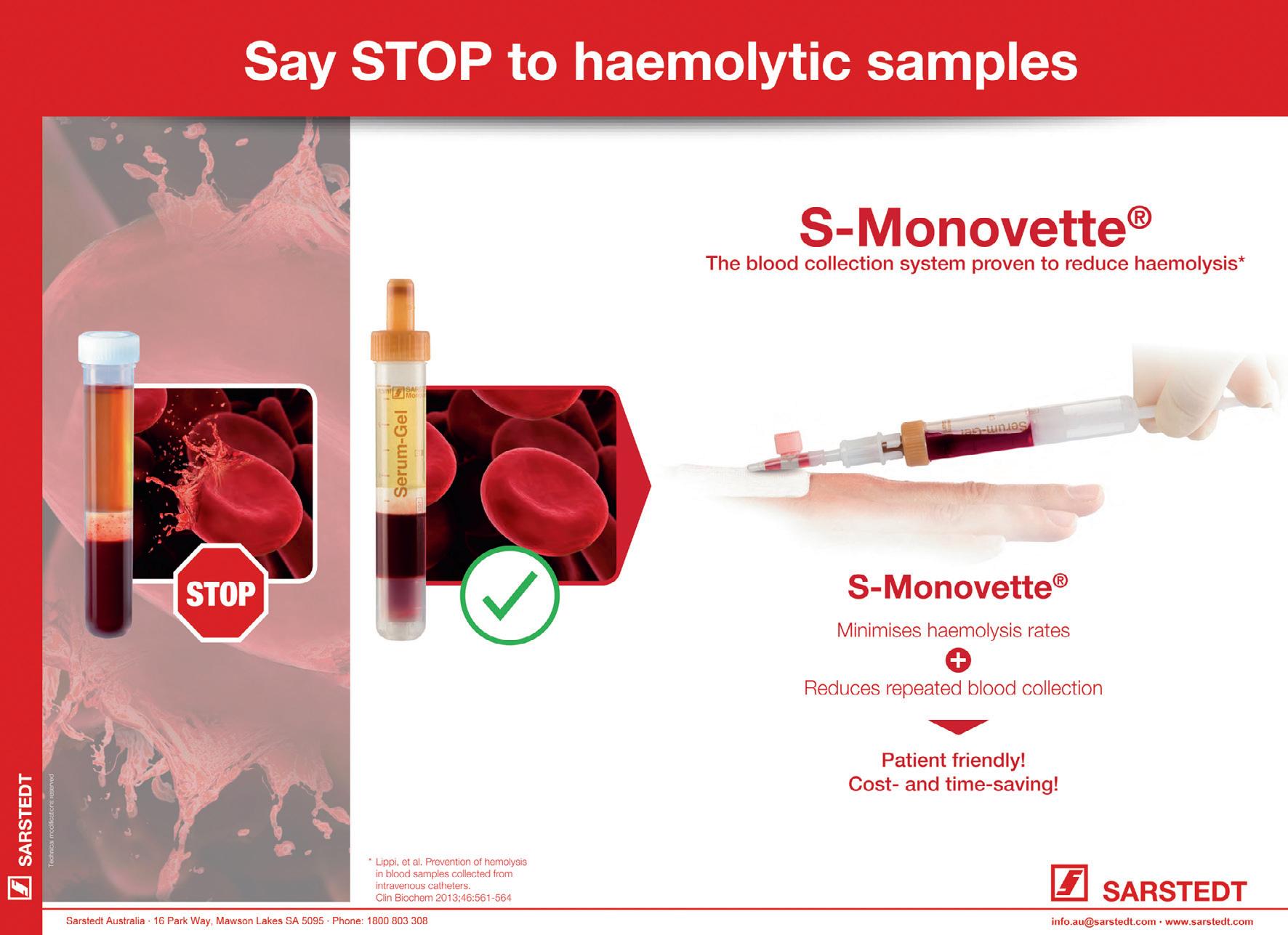
The S-Monovette is an innovative enclosed blood collection system that allows the user to draw blood from the patient using the syringe or vacuum method, uniting the advantages of both techniques in a single product.
When used as a syringe, the phlebotomist has full control over the speed at which the blood is drawn into the tube. This is particularly useful for patients with fragile veins, such as the very young or elderly, where the use of the aspiration technique prevents even the most fragile veins from collapsing. When the tube has been filled, the plunger is simply snapped off to leave a primary sample tube which can be centrifuged and is compatible with all major analysers.
The S-Monovette can also be used as an evacuated tube by drawing the plunger fully down and snapping it off immediately
prior to blood collection. This creates a fresh vacuum and ensures a precise filling volume, ensuring a correct dilution ratio.
The reduced vacuum pressure in the S-Monovette drastically reduces the rate of haemolysis and vein collapse, meaning increased sample quality and reduced costs associated with repeat collections. Furthermore, unlike pre-evacuated tubes, the S-Monovette does not have to hold a vacuum for many months after manufacture, which allows the membrane stopper to be thinner and more easily penetrated by the needle sheath. This minimises the movement of the needle in the vein when attaching the tube, ensuring optimum patient comfort.
The S-Monovette needle is ready to use so that there is no need for assembly to
a holder. The needle is of a compact, low profile design, which reduces the chance of haematoma by allowing for a reduced angle of puncture and eliminates the possibility of needle stick injury caused by assembly of the needle and holder. The compact design also results in approximately one sixth of the sharps volume caused by using a preevacuated system, giving significant cost savings.
If you would like a visit from one of our Sales Representatives to demonstrate this system, please contact us on toll free 1800 803 308


In recent years, hospitals in Denmark have sharpened their focus on hygiene. A few years ago, the regional hospital in Horsens was named ‘innovation hospital’. Here they have given unwanted bacteria a fight.

Every year approx. three thousand people in Denmark die because of an infection they acquired in the hospital. This figure is 18 times higher than the number of people who die in traffic. The Regional Hospital in the Danish city of Horsens is trying to change this.
Welcome to the long corridors in the hospital basement where the tour starts. This is where the hospital’s service staff work to make daily operations run smoothly. Behind two doors is the hospital’s wash tunnel, an advanced automatic wash system that cleans everything from beds to ceiling sheets in the operating rooms. The wash tunnel is just one of the many initiatives the Regional Hospital takes to increase hygiene.
After 17 years in the cleaning industry within hospitals and slaughterhouses, Søren Møller became Service Manager at the Regional Hospital in Horsens, where he worked for the past 21 years. He decided to buy the wash tunnel in 2015.
“It all started with the establishment of a manual washing system, and everything was ready. When we had hung up the bed, it was clear that manual washing could not be done satisfactorily, and we started to think of machines,” says Søren Møller and continues:
“We put out a tender in which we specified our requirement for the amount of water, soap, electricity and the wash time based on 15,000 washes a year. We compared the different results, and we chose the one that made the most sense. We are excited about the opportunities it opens, and many other regions and hospitals have since come to see the wash tunnel.”
When Søren Møller started investigating the market, he was only looking for a bed washer. But, it soon became clear to him that the new machine could be helpful in many more areas. That is when the hospital decided to invest in another machine in line with the hospital’s expansion.

“There is a focus that future aids and materials are machine-washable because this makes them much cleaner. The machine cleans many of the things that were previously uncleaned or were cleaned by hand. Today we wash several things in the wash tunnel, which will evolve once another machine is up and running.”
The beds at the Regional Hospital in Horsens are equipped with actuator systems from LINAK so that they can be adjusted to the needs of the individual patient. Other aids are also equipped with the systems, and as these aids are incorporated in the wash tunnel, more demands are placed on future solutions chosen by the hospital, stresses Søren Møller.
“It is an absolute must that LINAK thinks washability into the systems. We would not buy the beds or aids on which patients are placed if they were not washable. All items on the bed must be able to be washed in the wash tunnel; otherwise, it will not work. Previously, the bed was washed by hand, but it was not easy to achieve a satisfactory result. So, from a hygiene point of view, it is a huge advantage when our equipment can be washed in the wash tunnel,” he says, and elaborates:
“It is a legal requirement that hygiene is in order. We work according to the patient’s safety in the hospital, where there is a significant focus on not passing on avoidable infections to patients. We also follow the
National Infection Hygienic Guidelines from the Danish Research Institute under the Danish Ministry of Health (Statens Serum Institut). For example, we review 250 rooms four times a year per INSTA800, a common Nordic standard for measuring cleaning quality. This helps us ensure that the cleaning is in order.”
But, Søren Møller does not only see significant hygiene benefits when washing beds and other aids. At the hospital in Horsens, the cleaning is carefully delegated to different areas of responsibility among the service and care staff. It requires both parties to be constantly aware of who is responsible for what. This helps ensure that everything is resolved satisfactorily and that the care personnel staffing is managed sensibly. The main difference Søren Møller has seen over the past ten years is the increased focus on improving hygiene in hospitals. “Today, one thing I always bear in mind when deciding to buy is whether items can be cleaned. We must be able to clean all nooks and crannies efficiently. Otherwise, they are not suitable for use in a hospital,” Søren Møller concludes.
As a developer and manufacturer of worldclass electric actuator systems for hospital applications, LINAK commits to participate in the fight to help hospitals improve hygiene.

Naturally, LINAK actuator solutions meet all international norms and standards for washability. However, some of our products meet an even higher standard because we test significantly more than the 2017 norm prescribes.
» For more information visit LINAK Australia Pty Ltd www.linak.com.au/medline-careline

Just before we rang in the new year, the refreshed National Medicines Policy was released, governing every aspect of medicines use in Australia.
Reviewed for the first time since 2001, the updated policy provides an opportunity to see how we measure up against its three key aims: ensuring the equitable, timely, safe and affordable access to a high-quality and reliable medicines supply, ensuring medicines are used safely; optimally and judiciously with informed choice and well-coordinated person-centred care; and supporting a positive and sustainable policy environment to drive world-class medicines innovation and research.
While excelling in many areas of innovation and ongoing bipartisan support for the world-class Pharmaceutical Benefits Scheme, including recent cost of living relief through a reduction in the general PBS co-payment, we still see some 250,000 medication-related hospital admissions in Australia annually, costing the healthcare system over $1.4 billion each year. Evidence shows us these figures would be reduced if we addressed our ongoing workforce gap in expert and specialised pharmacist roles.
According to the National Skills Commission, both the community and hospital pharmacy workforces are in shortage in every single jurisdiction, sharpening focus on the urgent need for a national strategy to meet the immediate and future healthcare needs of the Australian community. In the refreshed National Medicines Policy, the healthcare workforce has been identified as a critical enabler to the success of the NMP.
Strong size, distribution and depth in our pool of pharmacists and pharmacy technicians is needed to uphold medicines safety, prevent hospitalisation and reduce preventable medicine-related harm. This is particularly important at transitions of care between the hospital, home and residential aged care, an intersection of increased risk that results in too many medication-related hospital admissions. Another key issue that leads to the failure of equity and access of medicines — a fundamental principle of the National Medicines Policy — is the staggered uptake of the Pharmaceutical Reform Agreements (PRA) and the ongoing non-participation of ACT and NSW.
In their most recent ACT Health Services Plan 2022–2030, the ACT Government has committed to establishing a PRA with the Commonwealth. In December, the final report from the inquiry into ambulance ramping in New South Wales included a recommendation for NSW to also join, enabling NSW residents to access 30 days’ worth of PBS-subsidised medicines upon hospital discharge, instead of as little as three days’ worth of medicines, which is a grave medication safety risk at the transitions of care, particularly considering availability of access to GPs in many parts of the country.
The NSW report called for an increase in hospital pharmacy positions, the embedding of more expert Emergency Medicine Pharmacists into care teams and the expansion of innovative services and pharmacist-led prescribing.

For the last decade the frontier of pharmacist prescribing in Australia has been in the acute care setting, led by initiatives such as Partnered Pharmacist Medication Charting
(PPMC). The Royal North Shore Hospital’s Emergency Department’s PPMC service has demonstrated a reduction in medication charting errors from 22% to 1%, with the overwhelming majority of Emergency Department medical staff supportive of this collaborative care model and very confident in hospital pharmacists — who undergo credentialing — to chart medicines safely. Similar mature, collaborative models are now being embedded into practice across five states and territories, with others keen to follow suit (ACT Health are recruiting dedicated PPMC pharmacists from next month) and have been shown to improve patient safety and quality of care by reducing medication errors and delays to critical treatment, as well as increasing the job satisfaction not only of pharmacists, but of medical staff too.
Collaborative models allow both professions to practise at the top of their scope of practice, delivering true interdisciplinary synergy for the ultimate benefit of our patients.

However, with a lagging hospital pharmacy workforce, it is difficult to implement and expand these innovative models that are common overseas, and proven to improve quality, safety, bed flow and system capacity. While the NSW report and recommendations reflected one jurisdiction, the experience is similar across the country due to years of chronic understaffing.
The power of medicines, our most common health intervention, actually lies in the health professionals we trust to understand, administer and monitor them safely. Pharmacists are absolutely essential, but we need more of them, with advanced, specialty skills, where patients need them, if we are to meet the promises of the National Medicines Policy.
Helping you make sure the right instruments are delivered to the right theatre at the right time.


An artificial pancreas that combines an off-the-shelf glucose monitor and insulin pump with an app developed by Cambridge scientists has been successfully trialled by patients living with type 2 diabetes.
The device doubled the amount of time patients were in the target glucose range and and halved the time patients spent experiencing high glucose levels, as reported in Nature Medicine.
The app, known as CamAPS HX, utilises an algorithm that predicts how much insulin is required to keep a patient’s glucose levels within the target range.
The team has already demonstrated that an artificial pancreas run by a similar algorithm is effective for patients living with type 1 diabetes, from adults through to very young children. They have also successfully trialled the device in patients with type 2 diabetes who require kidney dialysis.

This new version, trialled for the first time in a wider population living with type 2 diabetes (not requiring kidney dialysis) is a fully closed loop system. The version for patients with type 1 diabetes requires patients to report that they are about to eat so that the artificial pancreas can adjust insulin levels accordingly, but the latest iteration functions automatically.
Dr Charlotte Boughton from the WellcomeMRC Institute of Metabolic Science at the University of Cambridge, who co-led the
study, said, “Many people with type 2 diabetes struggle to manage their blood sugar levels using the currently available treatments, such as insulin injections. The artificial pancreas can provide a safe and effective approach to help them, and the technology is simple to use and can be implemented safely at home.”
The researchers recruited 26 patients from the Wolfson Diabetes and Endocrine Clinic at Addenbrooke’s Hospital, part of Cambridge University Hospitals NHS Foundation Trust, and a local group of GP surgeries.
Patients were randomly allocated to one of two groups — the first group used the artificial pancreas for eight weeks before switching to multiple daily insulin injections while the second group completed the trial in the reverse order.
The team used several measures to assess how effectively the artificial pancreas worked. The first was the proportion of time that patients spent with their glucose levels within a target range of between 3.9 and 10.0 mmol/L. On average, patients using the artificial pancreas spent two-thirds (66%) of their time within the target range — double that while on the control (32%).
A second measure was the proportion of time spent with glucose levels above 10.0 mmol/L. Patients taking the control therapy spent twothirds (67%) of their time with high glucose levels — this was halved to 33% when using the artificial pancreas.
Average glucose levels fell from 12.6 mmol/L when taking the control therapy to 9.2 mmol/L while using the artificial pancreas. The app also reduced levels of glycated haemoglobin (HbA1c). Glycated haemoglobin
develops when haemoglobin joins with glucose in the blood, becoming ‘glycated’. The higher the HbA1c, the greater the risk of developing diabetes-related complications. After the control therapy, average HbA1c levels were 8.7%, while after using the artificial pancreas they were 7.3%.
Dr Aideen Daly, also from the Wellcome-MRC Institute of Metabolic Science, said, “One of the barriers to widespread use of insulin therapy has been concern over the risk of severe ‘hypos’ — dangerously low blood sugar levels. But we found that no patients on our trial experienced these and patients spent very little time with blood sugar levels lower than the target levels.”
One patient was admitted to hospital while using the artificial pancreas, due to an abscess at the site of the pump cannula. Feedback from participants suggested that participants were happy to have their glucose levels controlled automatically by the system, and nine out of 10 (89%) reported spending less time managing their diabetes overall.
Users highlighted the elimination of the need for injections or fingerprick testing and increased confidence in managing blood glucose as key benefits. Downsides included practical annoyances with wearing of devices, and increased anxiety about the risk of hypoglycaemia — which the researchers said may reflect increased awareness and monitoring of glucose levels.
The team now plan to carry out a larger study to build on their findings and have submitted the device for regulatory approval with a view to making it commercially available for outpatients with type 2 diabetes.
In healthcare, with most sinks and drains being out of sight and out of mind, is it possible a source of infection has been missed?
Believe it or not, there’s a city of potentially harmful microbes living in hospital drains. These cities are known as ‘biofilms’ and their residents are multispecies bacteria, which shelter inside protected from the lethal effects of passing disinfectants. Despite infection prevention and control protocols, these cities are increasingly linked to healthcare-associated infections (HAIs)1
Therefore, to wipe these communities out for good, it is critical the correct action is taken.
Sinks and shower drains provide an ideal environment for microorganisms to form biofilms.
In many instances, it is everyday activities such as hand hygiene that supply the bacteria that colonise drainage systems. In addition, disposed fluids help provide the nutrients that support the growth of biofilms2
In fact, drains in healthcare settings are frequently contaminated with multispecies microorganisms including Gram-negative and antibiotic-resistant bacteria3,4

Contaminated wet and dry surfaces contribute to the transmission of pathogens that cause HAIs5,6. As for the surfaces we can’t see, laboratory experiments have shown that contamination from sinks and drains can potentially be transferred to the hands of healthcare workers and subsequently to patients7,8
Contamination of sinks with multidrugresistant Pseudomonas aeuruginosa and Enterobacteriaceae was also shown to be as high as 50.9% (606/1191 sinks) from 73 ICU’s participating in the study9. Furthermore, 459 sinks showed visible splashes with 30.5% being close to the bed (<2m) with no barrier around the sink making them susceptible to splashing and authors concluded there were
frequent and multifactorial infection risks associated with contaminated sinks in ICU9
Chlorine-based disinfectants are often used to treat drainage systems in the fight against biofilms. Free-floating microbes outside of the biofilm will be killed by traditional disinfectants, but the structure protecting the city limits chlorine’s killing effect. Unless effectively removed, the biofilm will regrow rapidly and continue to pose a threat.
The residents of drain-based biofilms are up there with the hardest-to-kill microorganisms. When looking at potential disinfectants that can be used to tackle them, we should consider:
• Log reduction: The higher the better (Remember: log 1 provides 9% decontamination, log 2 = 99%, log 3 = 99.9%, etc.)
• Prevention of regrowth: The longer the better Peracetic acid is proven to outperform chlorine-based (sodium hypochlorite) disinfectant in both criteria10. As a strong oxidising agent, peracetic acid breaks down biofilms and kills >99.9999% of bacteria living inside. It achieves this by altering their chemical stability through oxidation, forcing cells to rupture.
At Cardiff University, UK, researchers have created a hyper-realistic drainage tap model impregnated with wet biofilms10. They put Clinell Drain Disinfectant to the test and compared it to traditional disinfectants. Clinell Drain Disinfectant was found to have higher anti-bio�ilm activity than chlorinebased disinfectants (NaOCl 1000ppm).
Unlike chlorine, it eradicated biofilms throughout all sections of the drainage tap and prevented regrowth for at least 4 days10,11
To protect your healthcare facility’s drains from bio�ilms, register your interest in Clinell Drain Disinfectant via info@gamahealthcare.com.au.
1. Lemarie C, Legeay C, Kouatchet A, et al. High prevalence of contamination of sink drains with carbapenemaseproducing Enterobacteriaceae in 4 intensive care units apart from any epidemic context. Am J Infect Control. Feb 2020; 48(2):230-232
2. Kotay SM, Parikh HI, Barry K, et al. Nutrients influence the dynamics of Klebsiella pneumoniae carbapenemase producing enterobacterales in transplanted hospital sinks. Water Res. Jun 1 2020; 176:115707
3. Weingarten RA, Johnson RC, Conlan S, et al. Genomic analysis of hospital plumbing reveals diverse reservoir of bacterial plasmids conferring carbapenem resistance. MBio. 2018. doi:10.1128/mBio.02011-17 4.
4. Berrouane YF, McNutt L, Buschelman BJ, et al. Outbreak of Severe Pseudomonas aeruginosa Infections Caused by a Contaminated Drain in a Whirlpool Bathtub. Clin Infect Dis 2002. doi:10.1086/317501
5. Aranega-Bou P, George RP, Verlander NQ, et al. Carbapenem-resistant Enterobacteriaceae dispersal from sinks is linked to drain position and drainage rates in a laboratory model system. J Hosp Infect. May 2019; 102(1):63-69.
6. Kotay S, Chai W, Guilford W, Barry K, Mathers AJ. Spread from the Sink to the Patient: In Situ Study Using Green Fluorescent Protein (GFP)-Expressing Escherichia coli To Model Bacterial Dispersion from Hand-Washing Sink-Trap Reservoirs. Appl Environ Microbiol. Apr 15 2017; 83(8).
7. Otter JA, Yezli S, French GL. The Role Played by Contaminated Surfaces in the Transmission of Nosocomial Pathogens. Infect Control Hosp Epidemiol 2011; 32(7):687-699. doi:10.1086/660363 2.
8. Mitchell BG, Dancer SJ, Anderson M, Dehn E. Risk of organism acquisition from prior room occupants: A systematic review and meta-analysis. J Hosp Infect. 2015; 91(3). doi:10.1016/j.jhin.2015.0005
9. Valentin, A. S., S. D. Santos, F. Goube, R. Gimenes, M. Decalonne, L. Mereghetti, C. Daniau, N. van der MeeMarquet and S. I. group (2021). A prospective multicentre surveillance study to investigate the risk associated with contaminated sinks in the intensive care unit. Clin Microbiol Infect. (In Press) DOI: 0.1016/j.cmi.2021.02.018
10. Ledwoch K, Robertson A, Lauran J, Norville P, Maillard JY. It’s a trap! The development of a versatile drain biofilm model and its susceptibility to disinfection. J Hosp Infect 2020; 106(4):757-764. doi:1016/j.jhin.2020.08.010
11. Ledwoch K, Msgoga M, Pascoe M, Maillard J-Y. Dry surface biofilms: a new challenge for disinfection. American Society for Microbiology. San Francisco, United States; 2019.
Camfil Australia is a NATA accredited organisation that complies with the requirements of ISO/IEC 17025:2017 for the supply of services in the mechanical testing field. The business provides on-site NATA accredited testing and certification services to help organisations meet and maintain Australian standards for controlled environments, and ensure the conformance, ongoing safety and operating efficiency of contamination control equipment.
Camfil Australia’s national team of technicians are familiar with positive pressure cleanroom environments and can perform various compliance tests to validate cleanrooms to meet Australian Standard specifications, ISO cleanroom classifications and relevant state or industry requirements for healthcare facilities.

In addition to NATA accredited testing and compliance certification, Camfil Australia’s services also include HEPA filter supply and replacement for all types of contamination-controlled environments. These include hospital operating theatres, pharmaceutical cleanrooms, manufacturing cleanrooms, biological safety cabinets, fume cabinets/ cupboards, cytotoxic drug safety cabinets, clean work stations, pharmaceutical isolators, laminar air flow systems and airborne containment systems.


Camfil Australia Pty Limited
www.camfil.com/en-au
The Mindray HyLED C Series surgical lights were launched in December 2022 to supersede the HyLED 6, 7 and 8.




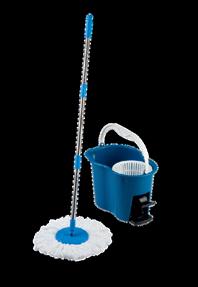
Keeping in line with the top of the range HyLED X, the HyLED C Series has the same look and infection control design as the HyLED X and is well rounded for open surgery and minimally invasive surgery. Its Multi-Patch Superposition Technology means the light field remains uniform in illumination, shape and colour even if it’s been obstructed by surgeons’ heads.
For ease of use the HyLED C Series has three flexible control methods including multifunction handle, touch keypad control and APP on a tablet. It is designed with stopless rotation to five joints, allowing the surgical team to position the lights towards the exact surgical field easily at any angle. It offers several solutionfocused options to mount with 4K monitors and patient monitors so focus remains on the surgery and patient.
Hospital Products Australia

www.hpaust.com

INOVA Air Purifiers has been providing clean air solutions since 2003.
The INOVA range of medical-grade air purifiers is used in Australia’s leading hospitals and is suitable for a range of settings including staff areas, patient rooms, isolation areas, intensive care and emergency departments.
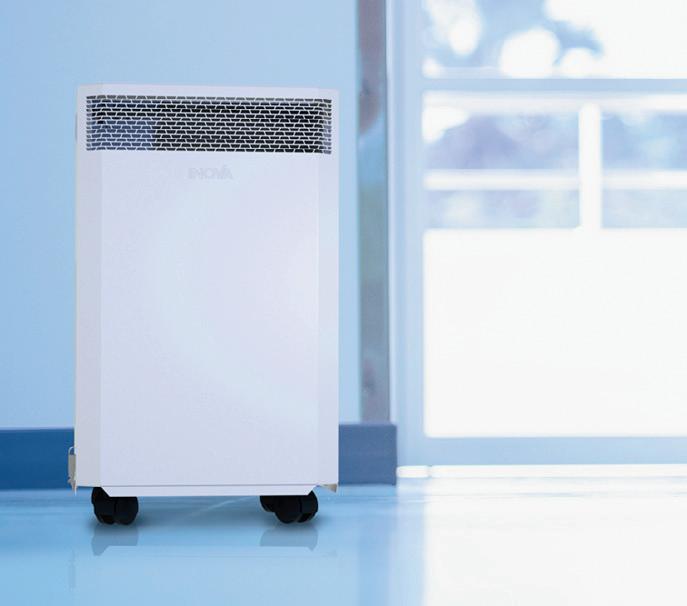
Effective in areas up to 100 m2, the INOVA-DV20 air purifier has been designed for use in clinical environments, primarily for the removal of aerosol-based viral and bacterial contaminants.
The INOVA-DV20 model features a Technostat high-efficiency pre-filter and a high-capacity cylindrical H13-certified medical-grade HEPA filter.
The Technostat first stage pre-filter is a tribo-electret media and has unique charged characteristics which allow the filtration of sub-micron particle sizes including bacteria and viruses.
Bacterial Filtration Efficiency (BFE) >99.9992%*
Viral Filtration Efficiency (VFE) >99.9970%*
The pre-filter captures ultra-fine sub-micron particles including dust, bacteria and viruses before they reach the main H13 certified HEPA filter, enhancing filtration efficiency and extending life of the HEPA.
The INOVA-DV20 air purifier features a plastic-free, chemical-free, aluminium powder-coated construction that allows for easy wipedown and disinfection of external surfaces with any ethanol-based alcohol cleaning agent.
All INOVA air purifiers are Australian made, and each system is individually certified using a calibrated, Met One, ISO-compliant laser particle counter to meet or exceed the stated efficiency.
*Tested in accordance to Spec MIL-M-36954C By Nelson Labs.
INOVA Air Purifiers
www.inovaairpurifiers.com.au
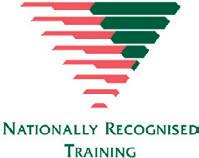



Rose Webster is hoping her love of aviation and nursing might one day merge, after swapping life in the Royal Australian Air Force for a nursing degree.
The 21-year-old Wiradjuri woman from rural New South Wales is in her first year of a Bachelor of Nursing at QUT in Brisbane, after a two-year stint with the RAAF.

She is keeping her future career options open, but is considering returning to the Air Force after graduating with her nursing credentials.
“Once I have my degree there are so many avenues you can go down with nursing — there are a million opportunities,” she said.
“I’m really drawn to paediatrics and potentially becoming a paediatric nurse practitioner, but the Air Force has also offered me the opportunity to apply to come back as a nursing officer. I’m also extremely interested in aeromedical evacuation, so it will be interesting to see what path I take and where I land!”
Rose grew up on a farm near the New South Wales–Victoria border and completed Year 12 in 2019 at Murray High School, where she was school captain.
She applied for the RAAF’s one-year gap program, and then stayed on for a second year.
“I was an avionics technician — I worked on the electronic systems for the C-27J Spartan,” she said.
“I enjoyed my Air Force job and the opportunities it gave me, but nursing is what I am passionate about.
“My mum’s a nurse and a few of my aunties were nurses. My dad works on farms and was an army reservist, so they’ve both had an influence on me.
“Dad also volunteers in the SES [State Emergency Service] and RFS [Rural Fire Service], which is why I am also a qualified bush firefighter with the RFS.
“We got deployed together during the 2019/2020 bush fires where we both received National Emergency Medals for our time contributed towards the effort.”
Rose did her RAAF technical training at Wagga and then worked at the Amberley base, south-west of Brisbane, so was already familiar with the city when she started looking at university courses.
“I’m really enjoying uni — this year has gone so quickly but I’m loving it,” she said.
“I love that the QUT course is so hands-on and that the standards we are raised to gives me a sense of confidence in our preparation for the workforce.
“The most challenging part of starting university was moving into the CBD and getting used to living in the middle of a city. I grew up on a farm and then lived on military bases, which are their own little communities too.
“But I got a place in QUT’s Indigenous Accommodation Program, which means I get to live in student accommodation for my first year. There are two floors that are just for the Indigenous program and it’s a really nice community to be part of.”
While living in the CBD, Rose is also putting her technical knowledge to good use in her part-time job — she works for an e-scooter company where she maintains and repairs privately owned scooters.
Rose applied to study nursing through the QUT Oodgeroo Unit’s Centralised Assessment and Selection Program (CASP) — an admissions pathway that is offered to all Aboriginal and Torres Strait Islander peoples who apply for QUT courses.
“I applied for my course through QTAC, then I received a CASP application pack and had to write a 500-word essay on why I wanted to do my course, and then I did a Zoom interview,” Rose said.
“It was quite an easy process, and it meant I was able to receive an early offer and have plenty of time to plan my transition to uni.” This semester Rose also got the opportunity to be a student representative at the 25th CATSNaM Conference in Sydney in August. The QUT School of Nursing partnered with the Oodgeroo Unit to send six Aboriginal and Torres Strait Islander nursing students to the event.
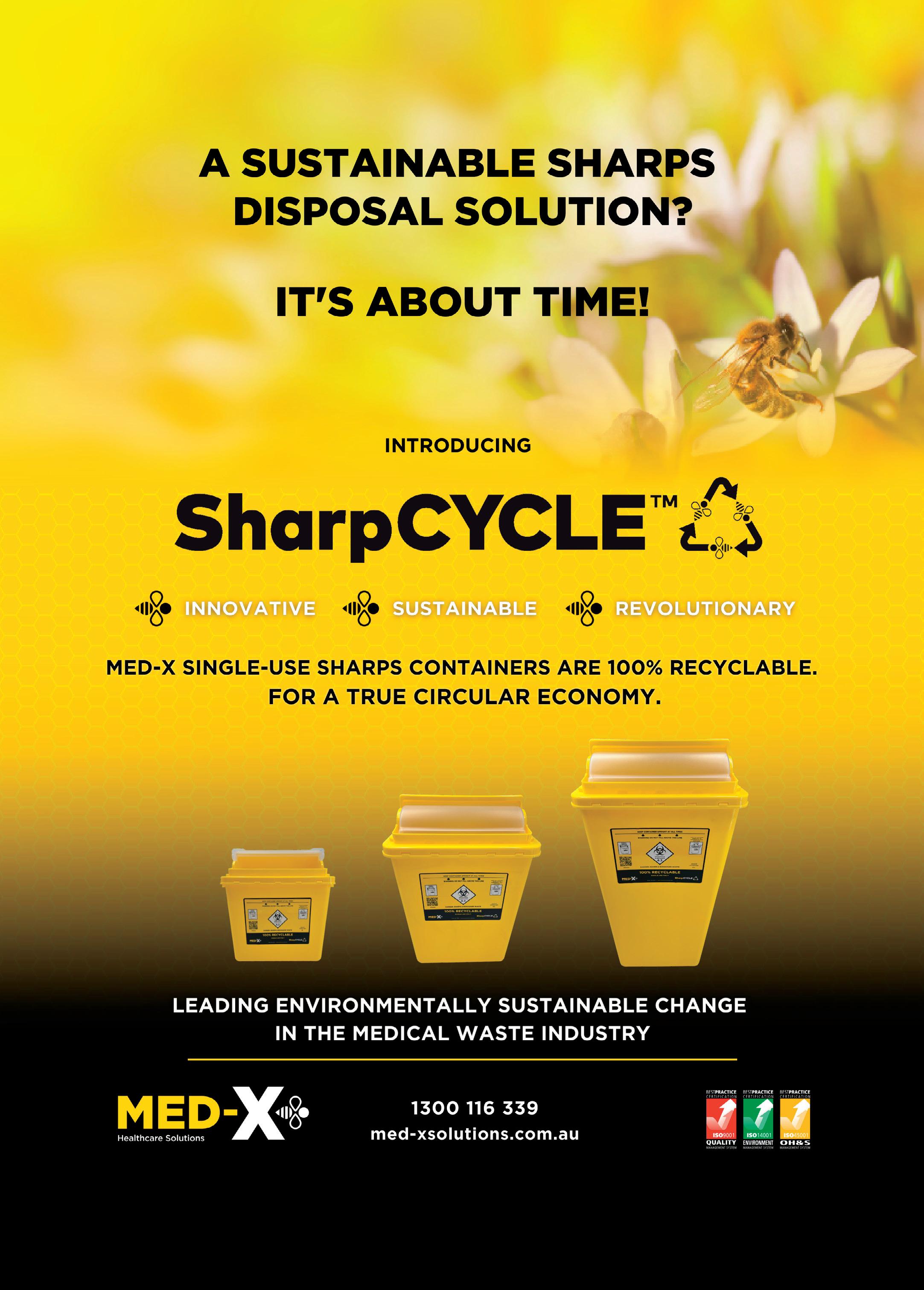
The ‘Global Burden of Disease’ study published in The Lancet revealed that 71.3% of deaths in 2015 were caused by dietary and lifestyle choices, an increase from 57.6% in 1990.
In 2017, an estimated 11 million deaths globally were attributable to poor diet (22% of all deaths among adults), especially cardiovascular disease, cancer and type two diabetes mellitus. Key features of poor diets include: high sodium intake, insufficient intake of whole grains, and low fruit consumption.
For comparison, tobacco use was associated with 8.0 million deaths in 2017. In Australia, cigarette smoking rates are relatively low (<14%), and less than half the global average (32%). Over 55% of our population (and >75% of young adults) have never smoked.
Approximately 67% of Australian adults are overweight or obese, and 47% have one or more chronic conditions.
Only 7.5% of adults meet the recommended nutritional guidelines for vegetable intake. Just over 50% of Australians regularly consume the recommended fruit intake. Less than 6% meet the criteria for both.
Approximately one-third of the average Australian’s diet comes from ‘discretionary foods’ (foods high in energy and low in nutrients, such as biscuits, cakes, ice-cream, and fried potato products). The average Australian diet also contains excessive amounts of sugar, saturated fat and sodium.
While the benefits of good nutrition are vast, let’s start by addressing heart disease, our biggest killer.
Intensive lifestyle changes, and specifically a low fat (<10%) diet consisting of whole plant foods, has been shown to reduce cardiac vessel stenosis after one year, and halve the number of cardiac events, compared to a control group. This intervention also lowered cholesterol levels by 37.2% without statin therapy, compared to 6% reduction in the control group who were taking pharmaceuticals.

Large prospective studies have also found that every serving (28 g/day) of whole grains is associated with 9% lower cardiovascular mortality, independent of other dietary and lifestyle factors.
Cutting back on the great Australian BBQ may also help our hearts; with rates of hypertension decreasing from 15%, to 5.8% in men who avoid eating animal products, and down from 12.1% to 7.7% in women. Those cutting out animal products also reduce their risk for cerebrovascular disease by approximately 12%.
The saying ‘an apple a day keeps the doctor away’ may also ring true; an additional 7 g/ day of total dietary fibre, equivalent to a large apple or one cup of broccoli, can reduce stroke risk by 7%.
I would argue that almost all Australian doctors are well aware of the harms of cigarette smoking, and wouldn’t hesitate to advise cessation with their patients, and provide tools and resources to help them do so. With poor diets now overtaking cigarette smoking as the leading risk factor for morbidity and mortality for Australians… isn’t it time we take a similarly aggressive approach? We should be screening, counselling, educating, and providing tools to help Australians make dietary changes that could help prevent (and even reverse) significant disease morbidity, reduce mortality rates, and minimise the public health burden.
The time to care about what your patients are eating is now!
To learn more about the relationship between diet and disease, join Thomas and other international and local experts for the Doctors for Nutrition Australasian Nutrition in Healthcare Conference in Melbourne from 17–19 February 2023. The conference will feature evidence-based research and content exploring the relationship between diet and disease. Alongside two full days of academic sessions, the conference will also include a whole food plant-based menu, a social program, networking opportunities and an exhibition space.
*Dr Renae Thomas, MD, MPH, is an Australian living in the USA, a triple boardcertified Physician in Family Medicine, Lifestyle Medicine, General Preventive Medicine and Public Health and is an ACLM Lifestyle Medicine Intensivist. She is the Medical Director of Fasting Escape, where she provides lifestyle-medicine-based consultations and is also an International Advisor for Doctors For Nutrition.
https://www.eurekalert.org/news-releases/557571
https://www.abs.gov.au/statistics/health/health-conditionsand-risks/national-health-survey-first-results/latest-release
https://www.thelancet.com/article/S0140-6736(19)300418/fulltext
https://www.aihw.gov.au/reports/food-nutrition/nutritionacross-the-life-stages/data https://www.aihw.gov.au/getmedia/fc5ad42e-08f5-4f9a9ca4-723cacaa510d/aihw-phe-227.pdf.aspx?inline=true https://pubmed.ncbi.nlm.nih.gov/9863851/ https://pubmed.ncbi.nlm.nih.gov/25559238/ https://www.cambridge.org/core/journals/public-healthnutrition/article/hypertension-and-blood-pressure-amongmeat-eaters-fish-eaters-vegetarians-and-vegans-in-epicoxfor d/678E54EF633FD623EF778BE1BA743C6A https://pubmed.ncbi.nlm.nih.gov/22677895/ https://pubmed.ncbi.nlm.nih.gov/23539529/
Hygiene monitor
ATP bioluminescence is a rapid cleaning verification method that is science-based and data-driven.
Implementing a monitoring system to validate cleanliness can help increase compliance to cleaning procedures. Typically, a large proportion of a cleaning budget is spent on labour, so it’s important to do it right first time.
Governing bodies around the world recommend that hospitals use an objective monitoring system to ensure cleaning standards are met and in Central Sterile Supply Departments, AS/NZ 4187 guidelines require a method of cleaning validation to be performed.
Hygiena cleaning verification solution consists of a luminometer, ATP test devices and the SureTrend dashboard. These three parts work together to help track and measure the cleaning program.
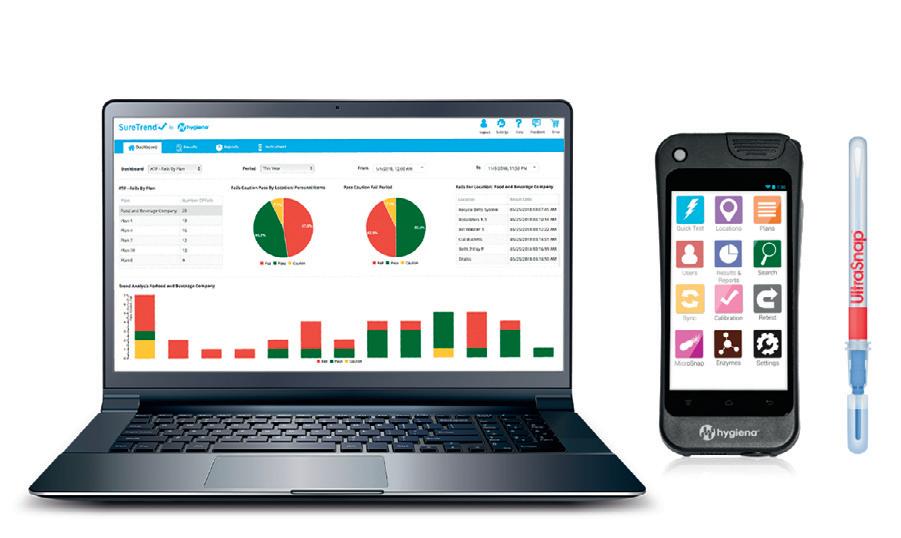
Quantifying cleaning outcomes in seconds and providing a measurable result facilitates effective corrective action to improve cleaning outcomes and reduce HAIs.
Reports allow results to be shared and demonstrate competency and compliance.
Hygiena swabs have been evaluated to the highest standards in all areas for linearity, repeatability, sensitivity and accuracy.
Hygiena provides an extensive library of instructional videos and supporting documentation, and local support from the team at Anaeron.
Anaeron Pty Ltd
www.anaeron.com.au
Face recognition solutions scan faces of visitors, compare them to watch lists and instantly alert security staff to known persons. The software can verify authorized staff to enter specific facilities and high-risk areas, and authenticate patients during registration and entrance processes.
How can face recognition benefit your facility? Let’s start the conversation: sales@cognitec.com
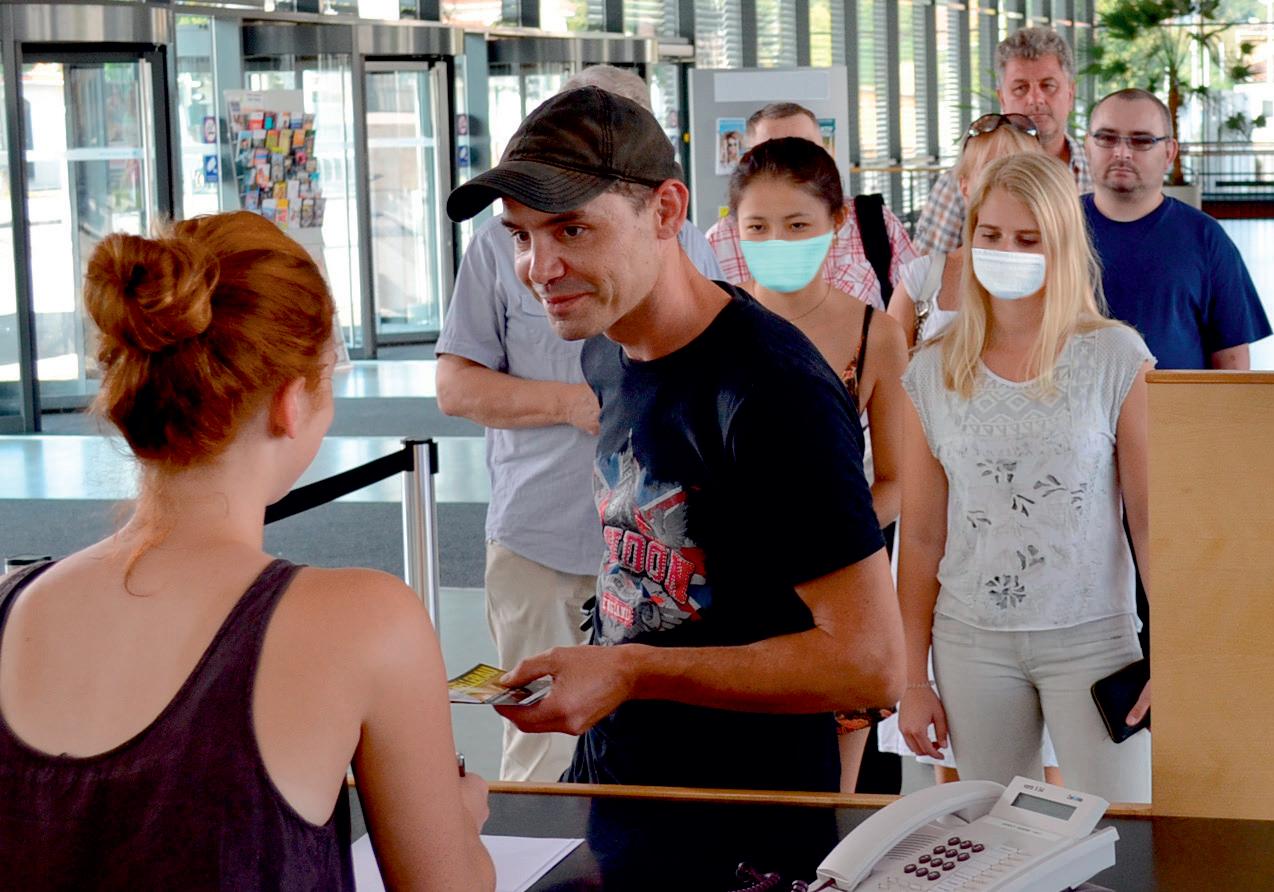
Registered nurse and midwife Jenee Williams first jumped onboard with the Royal Flying Doctor Service (Queensland Section) in 2020.
Based out of Charleville in South West Queensland, Jenee split her time with the service between emergency retrievals and attending Primary Health Care clinics in rural and remote communities across the region.
Today, Jenee is part of the RFDS Brisbane-based crew who transport more than 2200 patients and fly more than 1.2 million kilometres each year.
As Jenee explains, there is no ‘typical day’ for an RFDS flight nurse, and what might begin as a standard interfacility transfer –— which RFDS delivers in partnership with the Queensland Government — can quickly change to something more acute.

“You could start your day at Hervey Bay with an NSTEMI transfer and very easily see yourself out at Cunnamulla for a paediatric trauma. The variety and severity of patients varies greatly from shift to shift and from task to task,” Jenee said.
05:00 Time to wake up and prepare lunch for the day.
06:00 If I’m rostered on for a day-shift like I am today, I arrive at the Base and commence the morning equipment checks and signout drug packs for the day.
06:30 I check the iPad for daily taskings and liaise with Retrieval Services Queensland (RSQ) regarding tasks for the shift. We have to consider what the priority and dependency of the patient is, and if a medical officer is required for the transfer.
A large majority of RFDS work is flight nurse only, with medical officers/teams coming along to cases as they are required. Often an aircraft may receive multiple tasks for the day which may see the aircraft stop in at multiple locations to pick up patients. When we are tasked nurse only, we are supported by an RSQ medical coordinator when seeking advice on patient management or medication orders over the phone.
06:40 More often than not, RSQ already has a plan for the day that includes movement of patients from peripheral hospitals — including those who may need specialist intervention at tertiary centres. Often this can include specialists in cardiology, paediatrics and maternity.
RFDS aircraft have capabilities to move a variety of patients from neonates in cots, children in padimate harnesses, as well critically unwell patients. Essentially our aircraft are mobile intensive care units — providing mechanical ventilation, cardiac and arterial line monitoring, blood and medication administration and i-STAT bloods.

07:15 Packing aircraft, securing equipment, as well as attending aircraft safety checks — such as checking O2 levels, suction and battery levels. Given the isolated nature of being at 20,000 feet, often as a solo clinician, it is vital that all equipment and consumables are checked and I have everything I might need for the patient. There is no popping over to the next ward for equipment!

07:30 Ready to zig zag into the blue. As flight nurses, we must be ready for all situations and be ready to go anywhere. We are required to have significant experience in critical care areas of ICU and emergency, in addition to being registered midwives; this skill mix is essential with the variety of taskings the day could bring. I was drawn to the adventure and challenge being a flight nurse with the RFDS offered and I really enjoy that work for me has no typical day!
07:00 Once the pilot and I have task details and our destinations, a pre-flight phone call to the referring facility is made. This is to ensure all the aeromedical considerations have been made for the patient, such as confirming the patient weight, if any escorts will come with the patient, as well as discussing the clinical considerations: recent vital signs, infectious states, ensuring the patient has IV access and what infusions or medications might be required for the flight.
Preparation is key in the aeromedical environment. As a cohort, nurses and midwives are very good with preparation, applying this to an aeromedical environment is so important to our role as a flight nurse. We must consider what the worst-case scenarios we are preparing for are, and the anticipated changes we might see when we move patients from hospitals into the aircraft and to altitude.
A Day in the Life is a regular column opening the door into the life of a person working in their field of health care. If you would like to share a day in your working life, please write to:
hh@wfmedia.com.au
“Preparation is key in the aeromedical environment.”
Eight winners have been recognised for their inspiring work across the disability, allied health, aged care and community services sectors.

The 2022 HESTA Excellence Awards Winners:
Outstanding OrganisationCommunity Services
• St Patrick’s Community Support Centre (St Pat’s) — Fremantle, WA
Team ExcellenceCommunity Services
• Hoarding & Squalor Team, Catholic Healthcare — Macquarie Park, NSW
Winners of the 2022 HESTA Excellence Awards include an organisation that flies medical specialists to pop-up clinics in regional and remote NSW to support seriously ill children, a team who work to help address Australia’s aged care workforce shortages and a team who provide culturally safe support for Aboriginal people with disability.
HESTA CEO Debby Blakey congratulated the winners and finalists and acknowledged their inspiring work in going above and beyond to deliver critical services across Australia.
Outstanding OrganisationAllied Health
• Little Wings Limited — Bankstown Aerodrome, NSW
Team ExcellenceAllied Health
• Eating Disorders Team, Epworth Clinic — Camberwell, Vic
Outstanding OrganisationAged Care
• HealthX — Petrie Terrace, Qld
Team ExcellenceAged Care
• Falls Improvement Program Team, Brightwater Care Group — Inglewood, WA
Outstanding OrganisationDisability Services
• Loom Arts and Management — Coburg, Vic
Team ExcellenceDisability Services
• ‘Be with Me’ Navigators, Aboriginal Family Support Services — Adelaide, SA
























